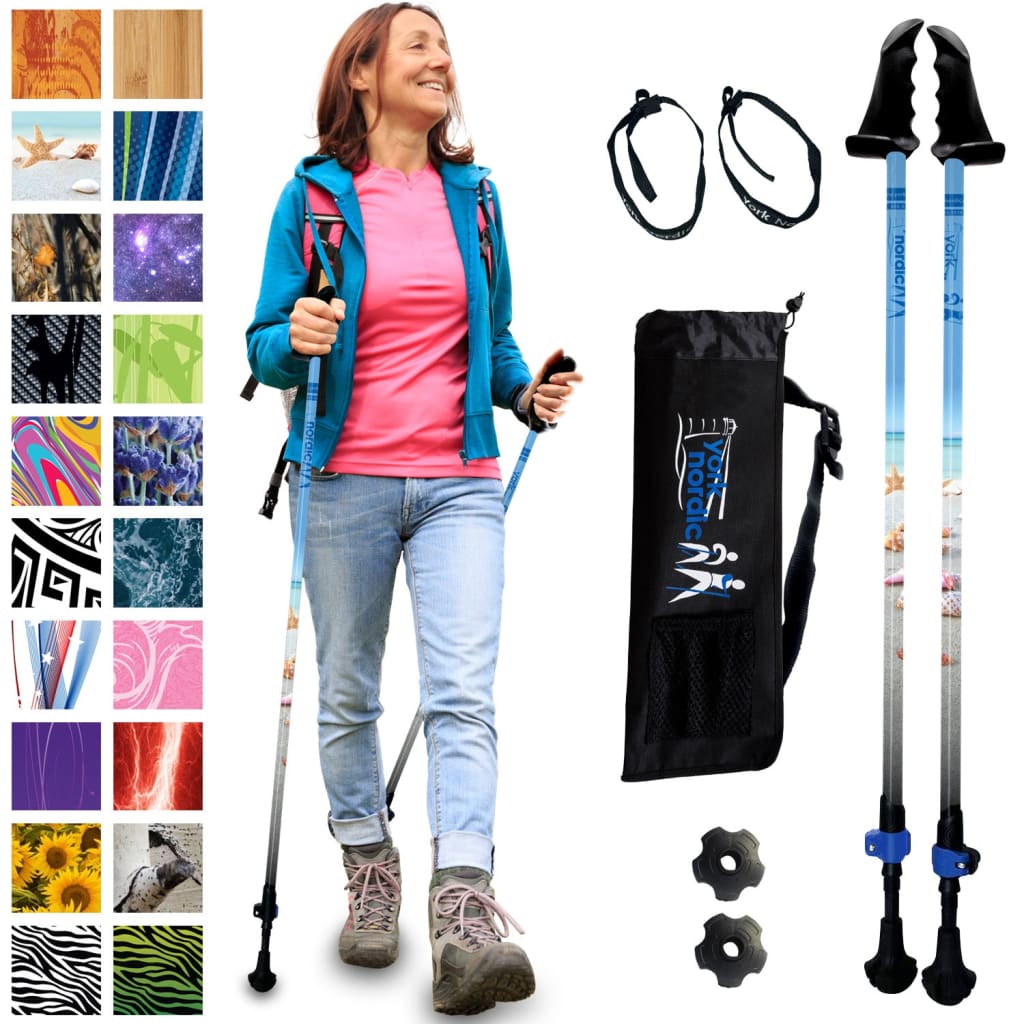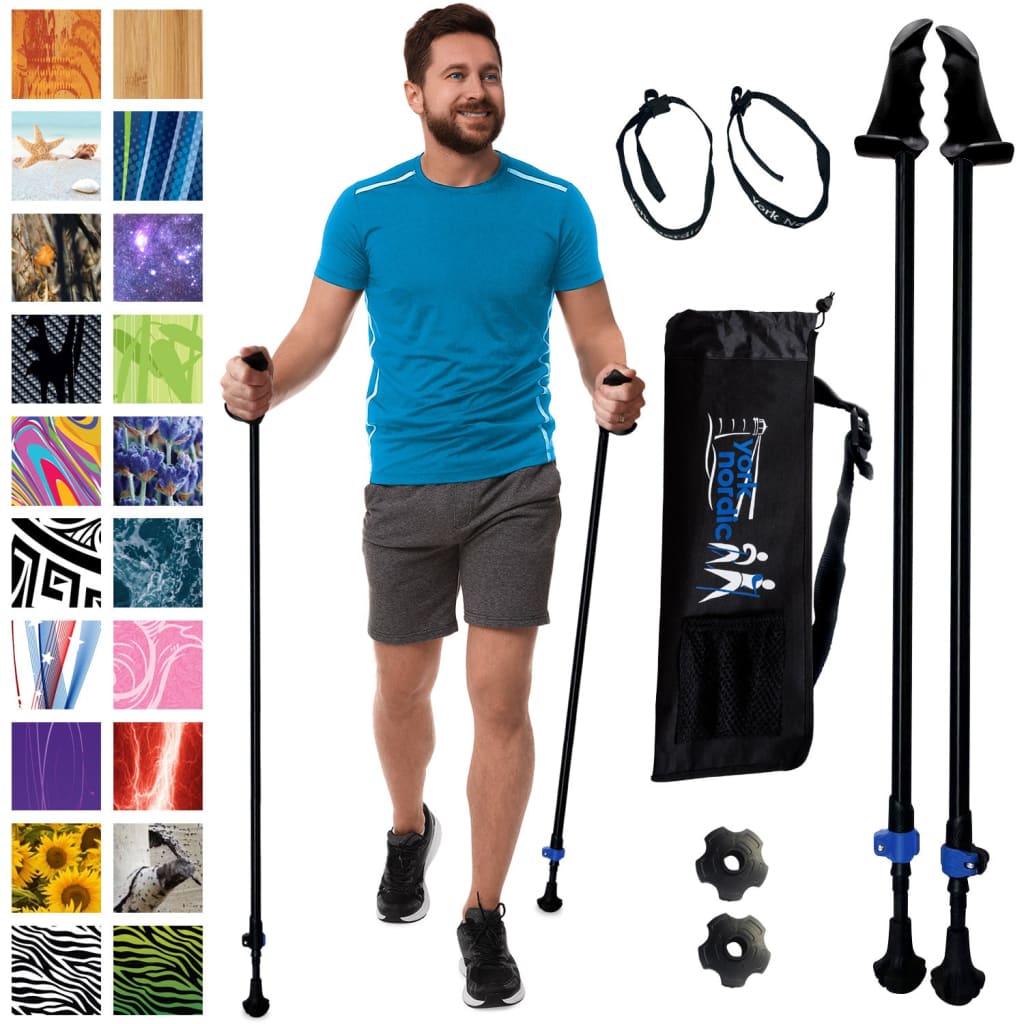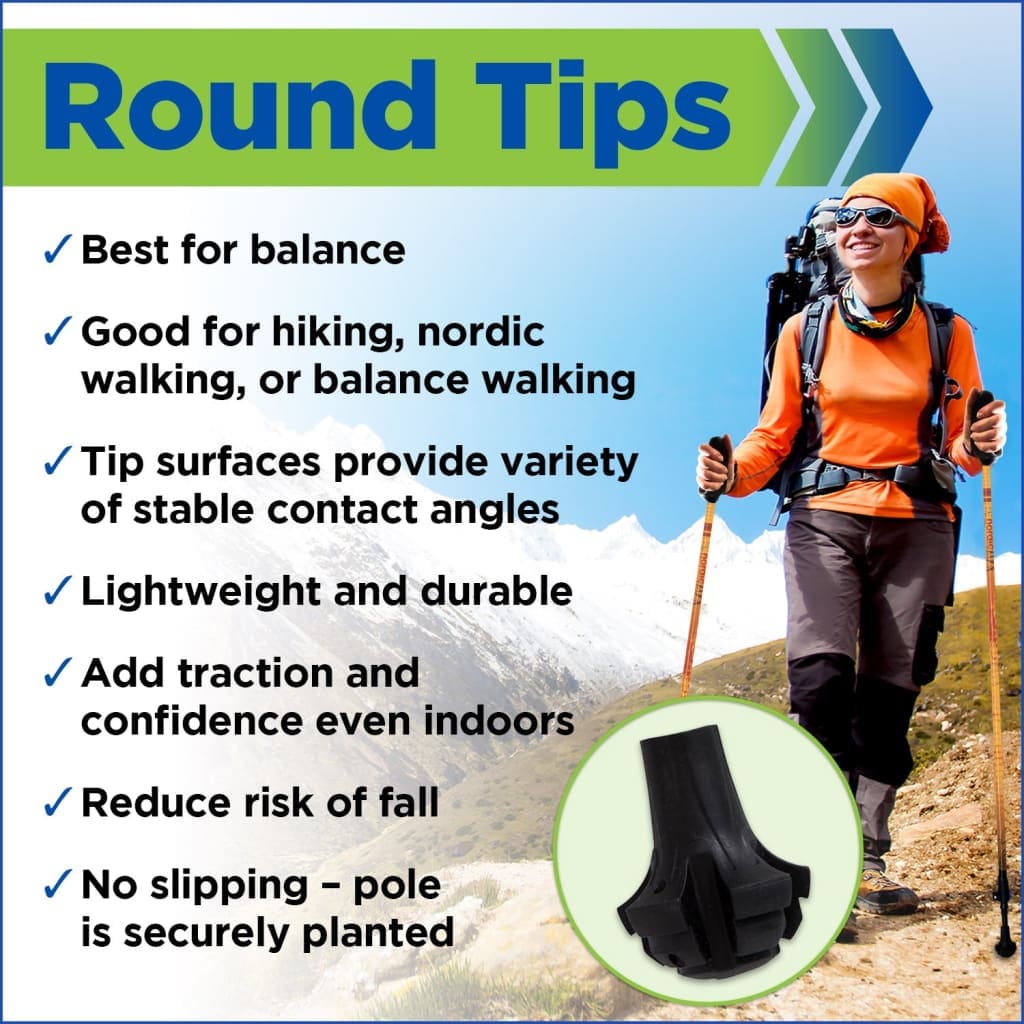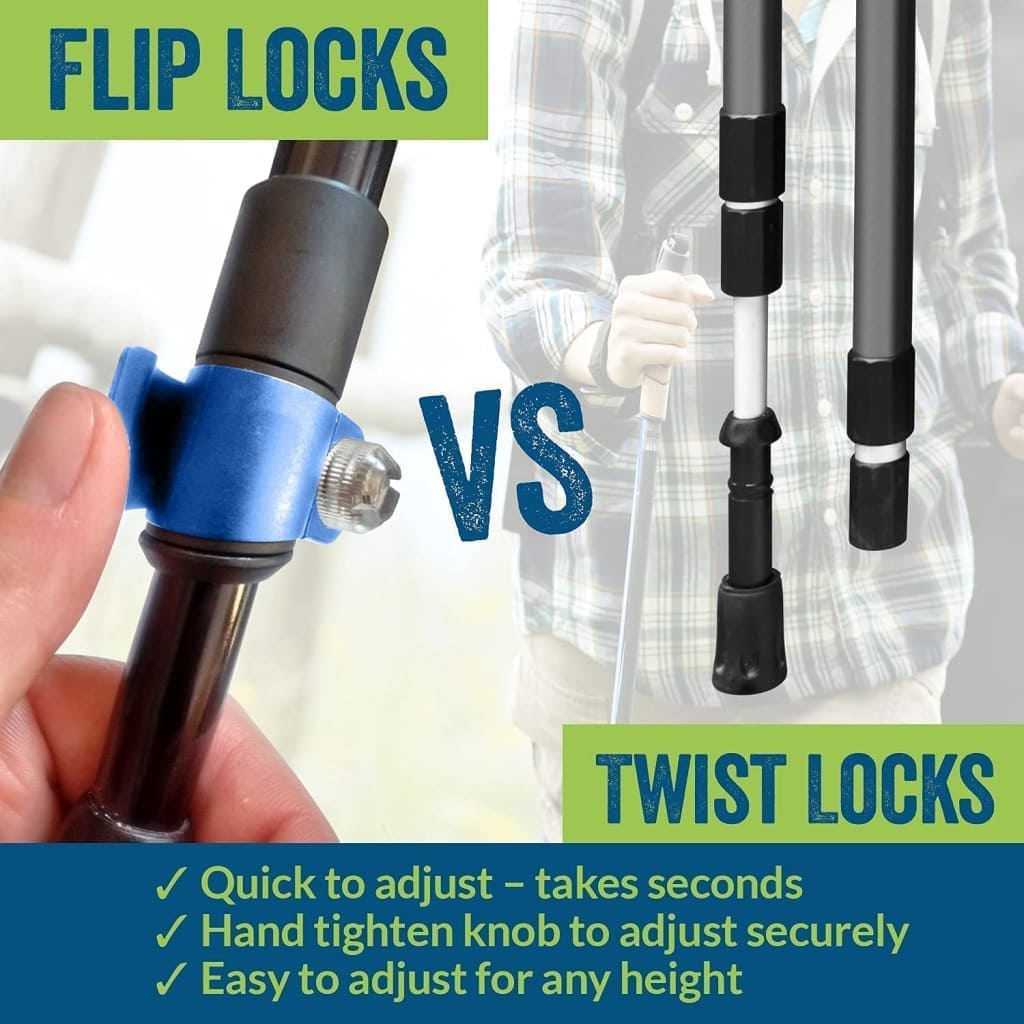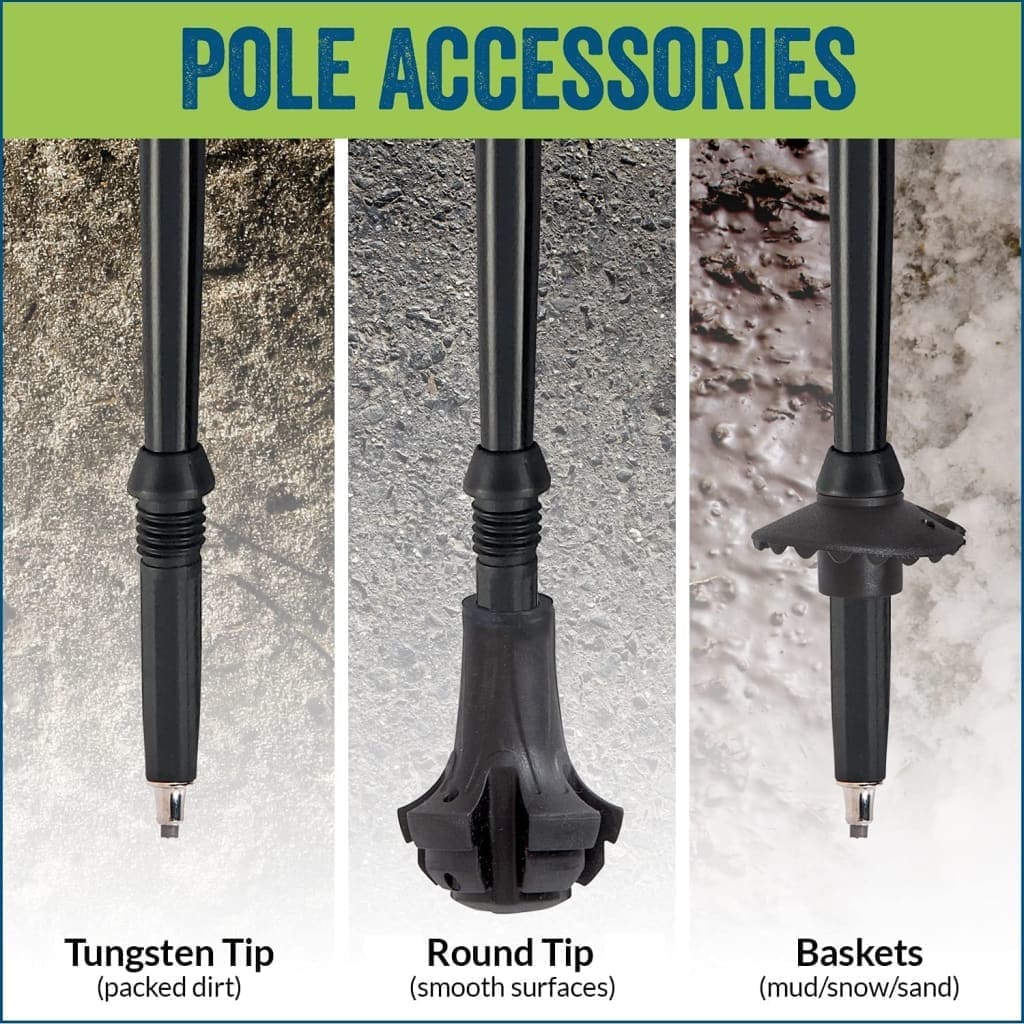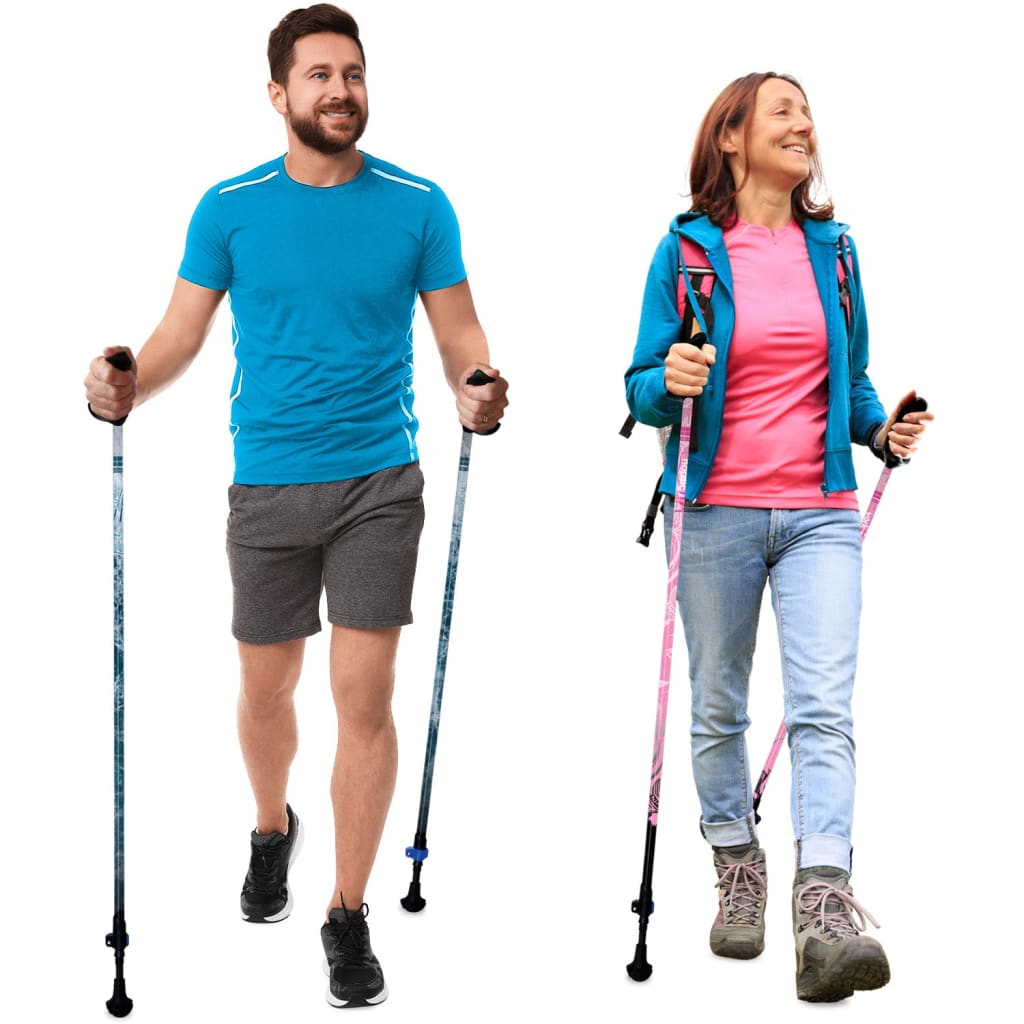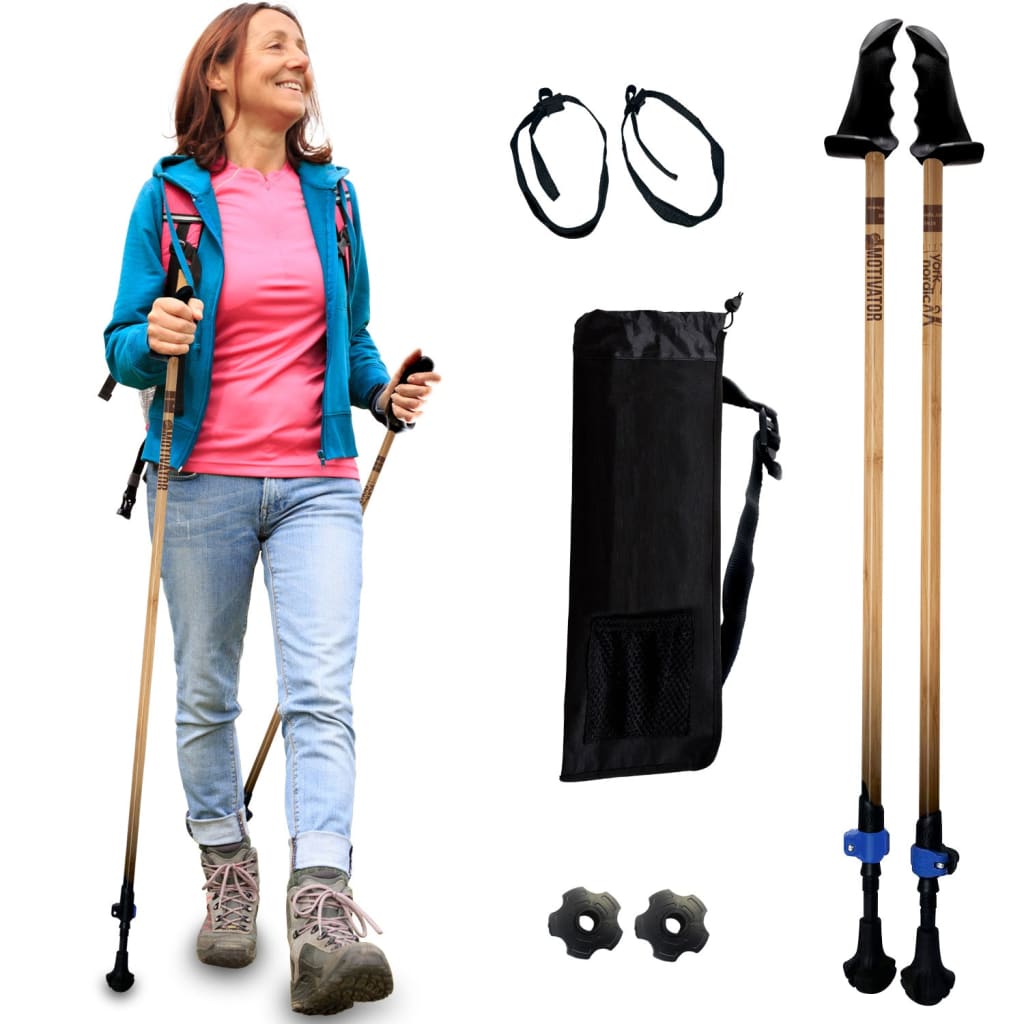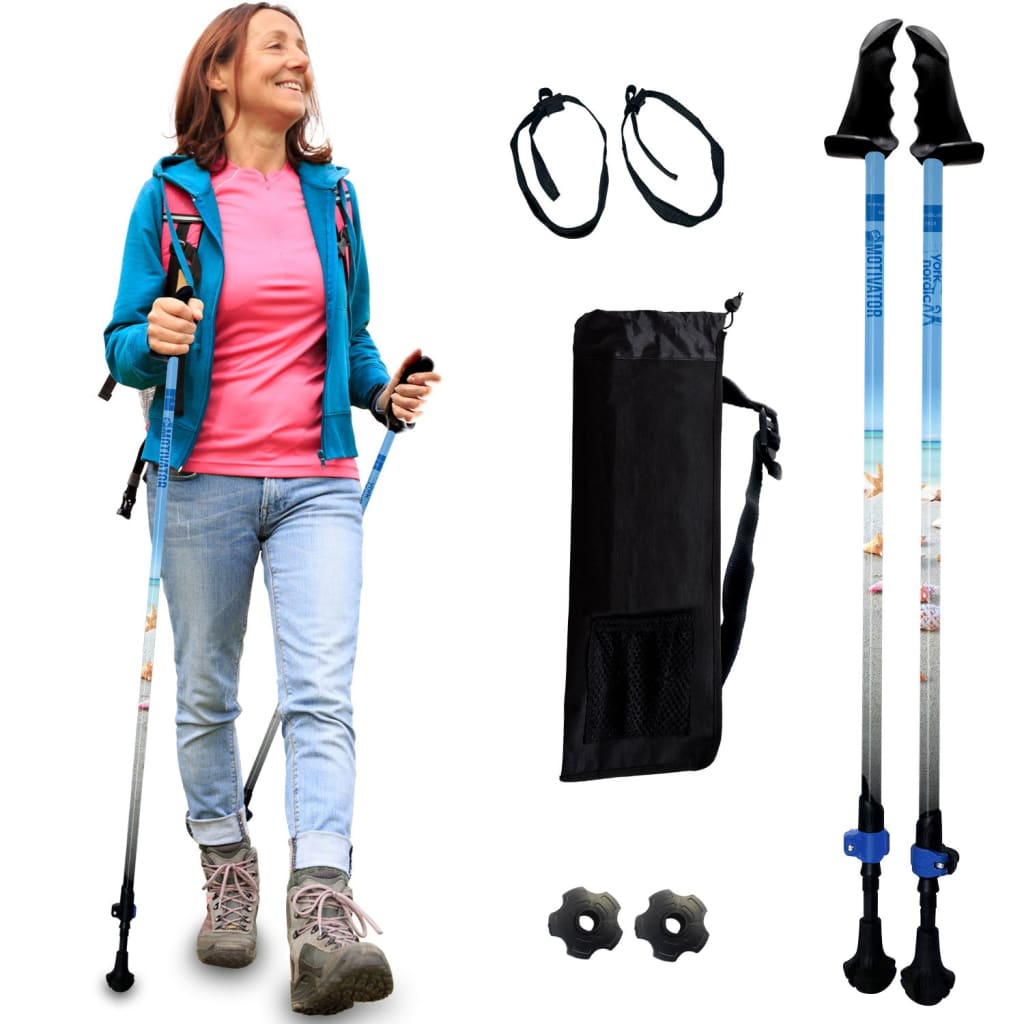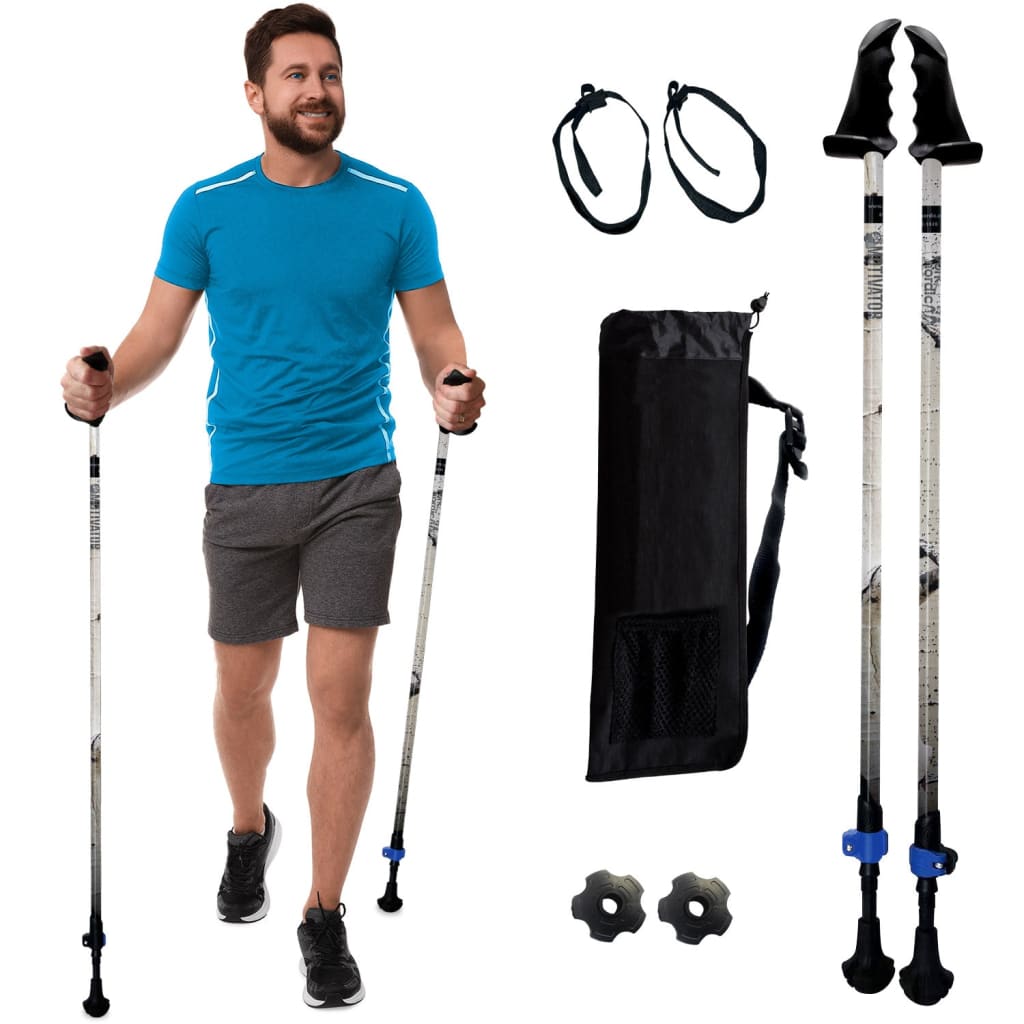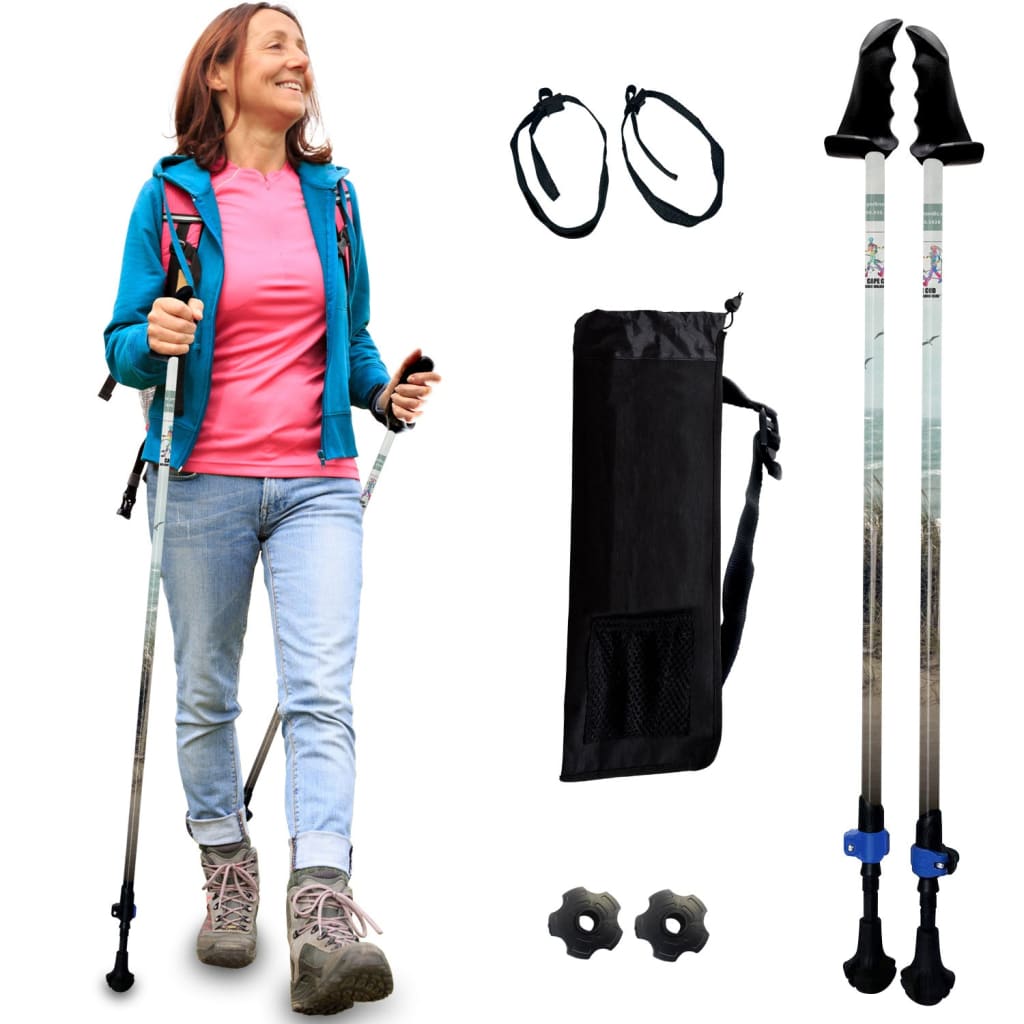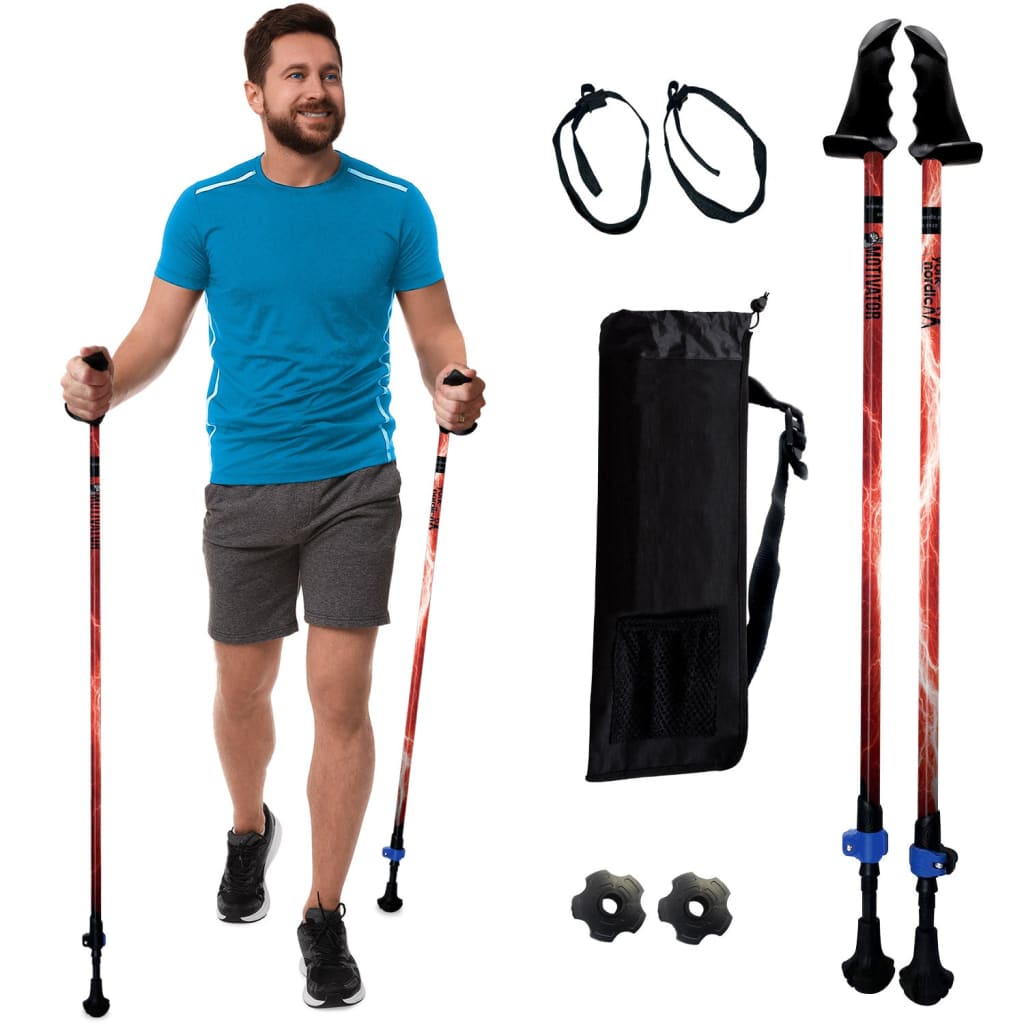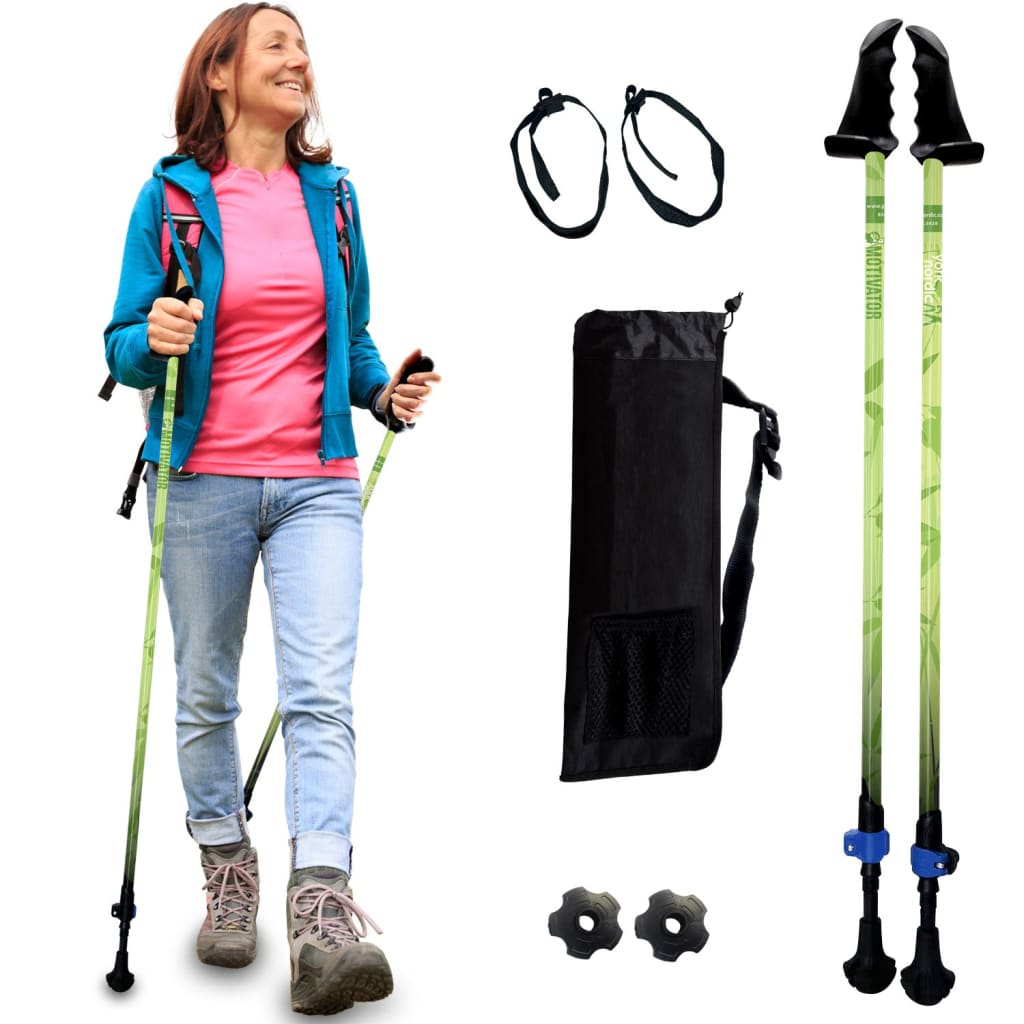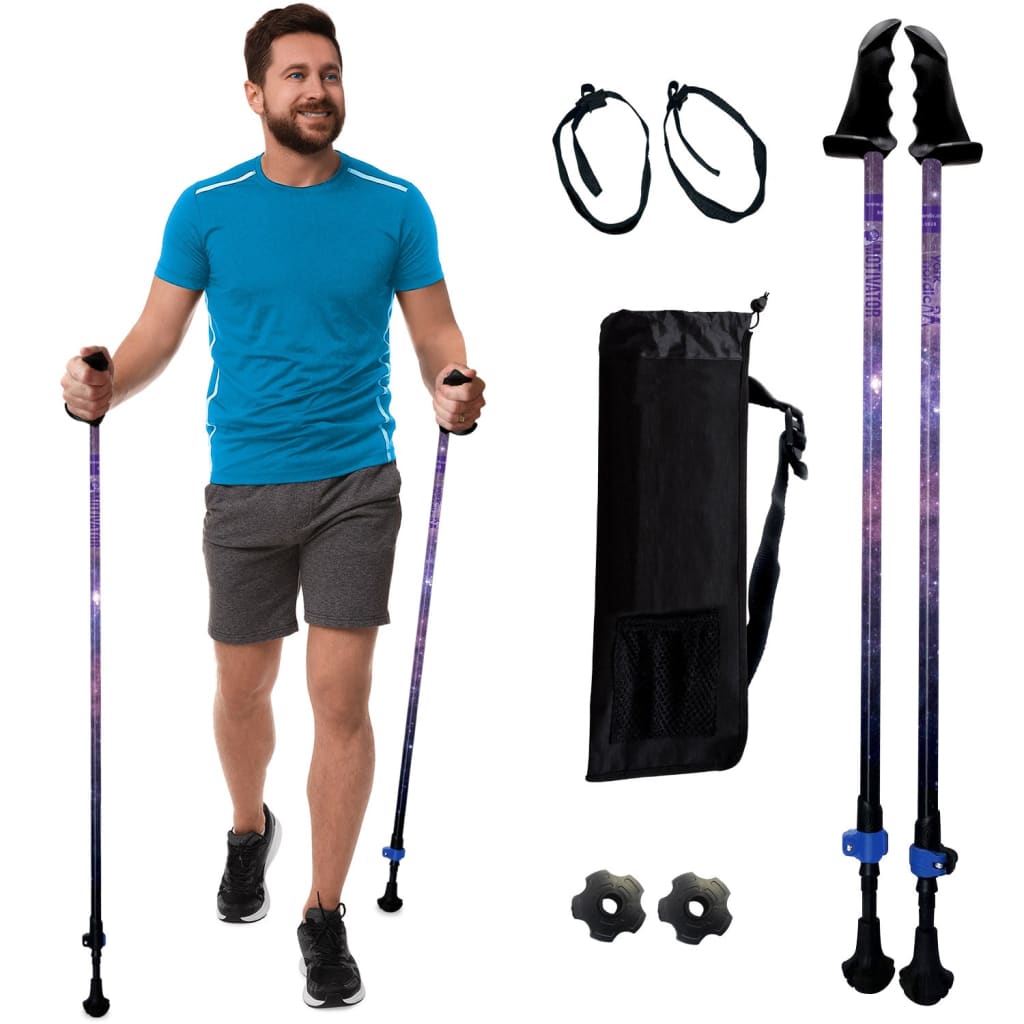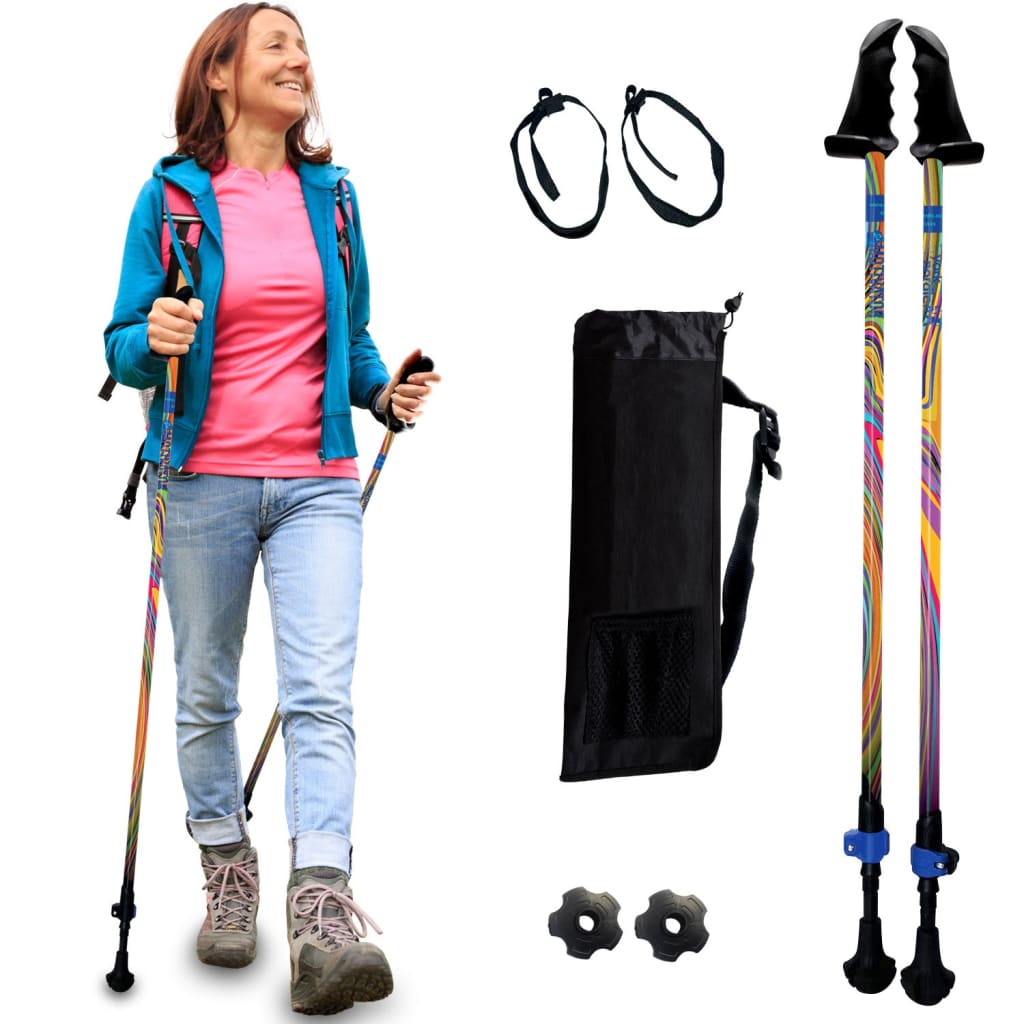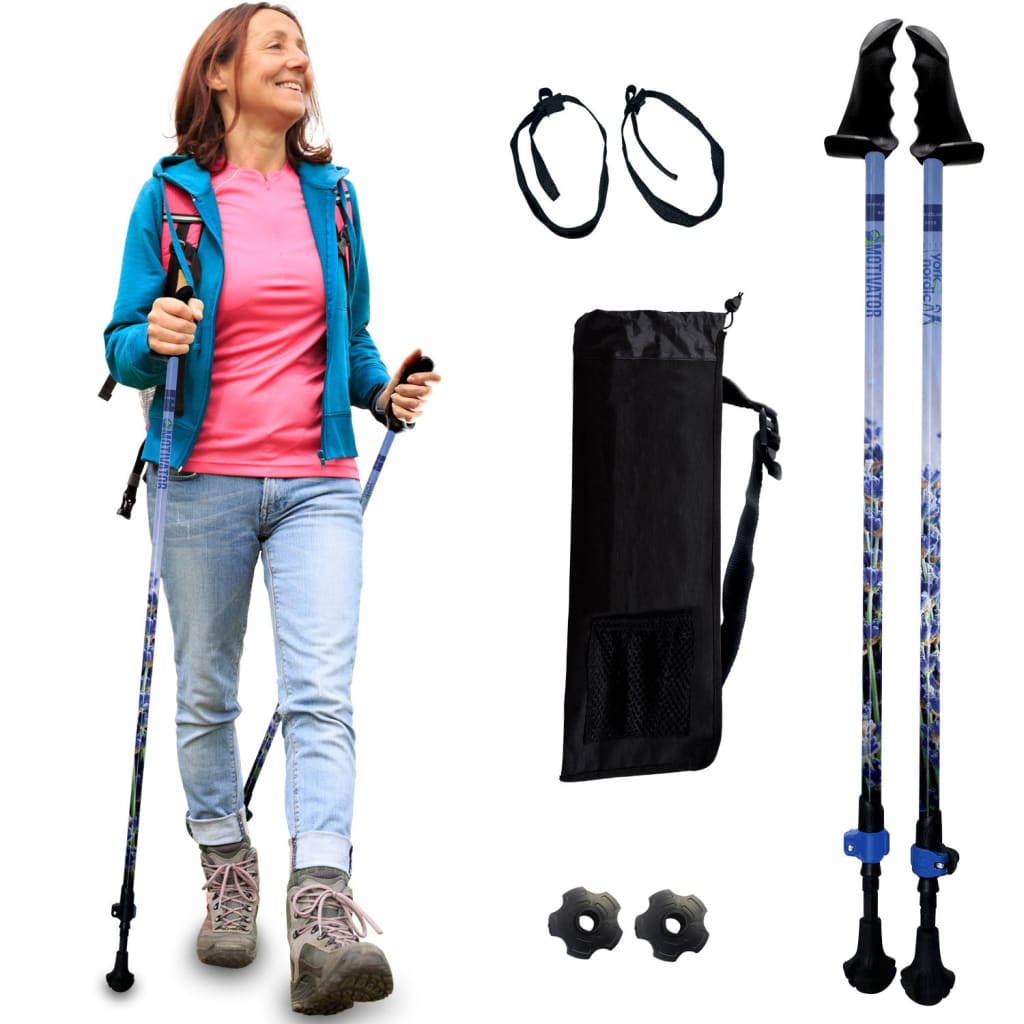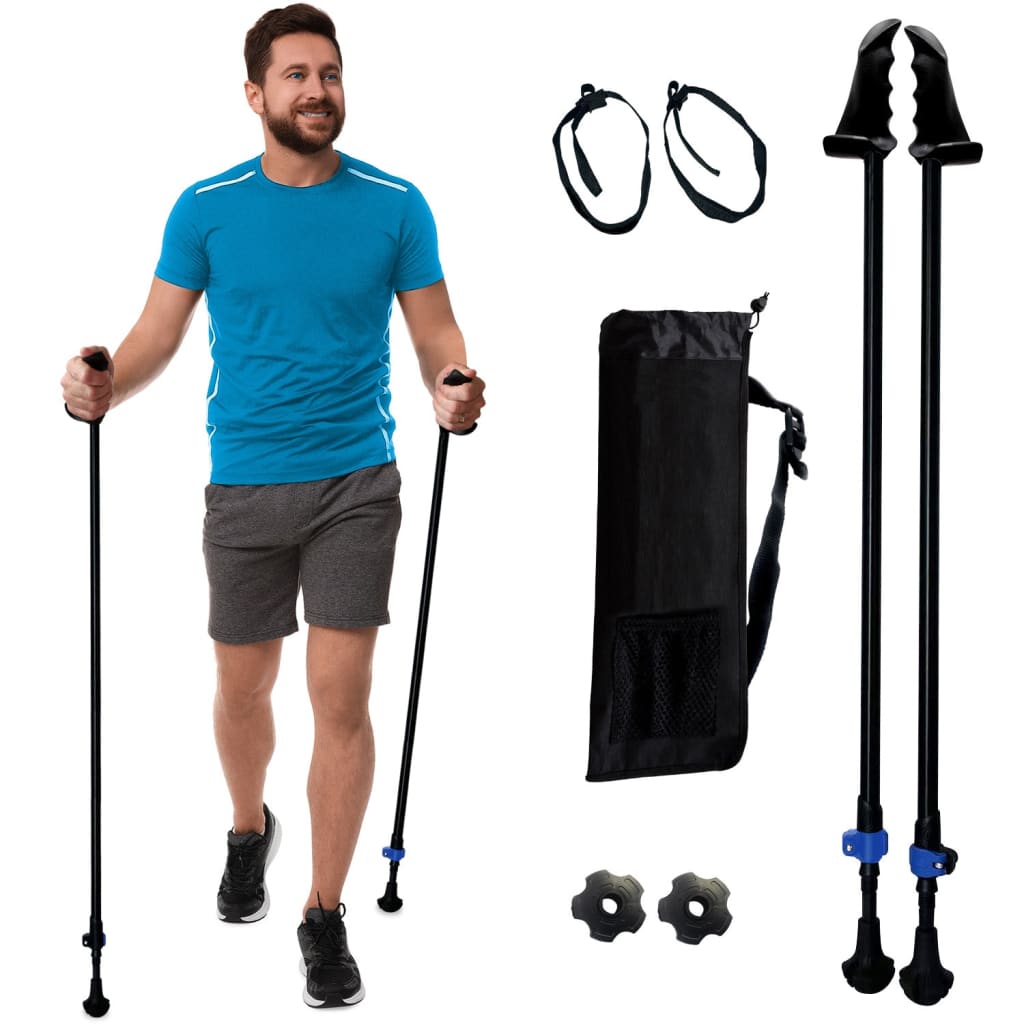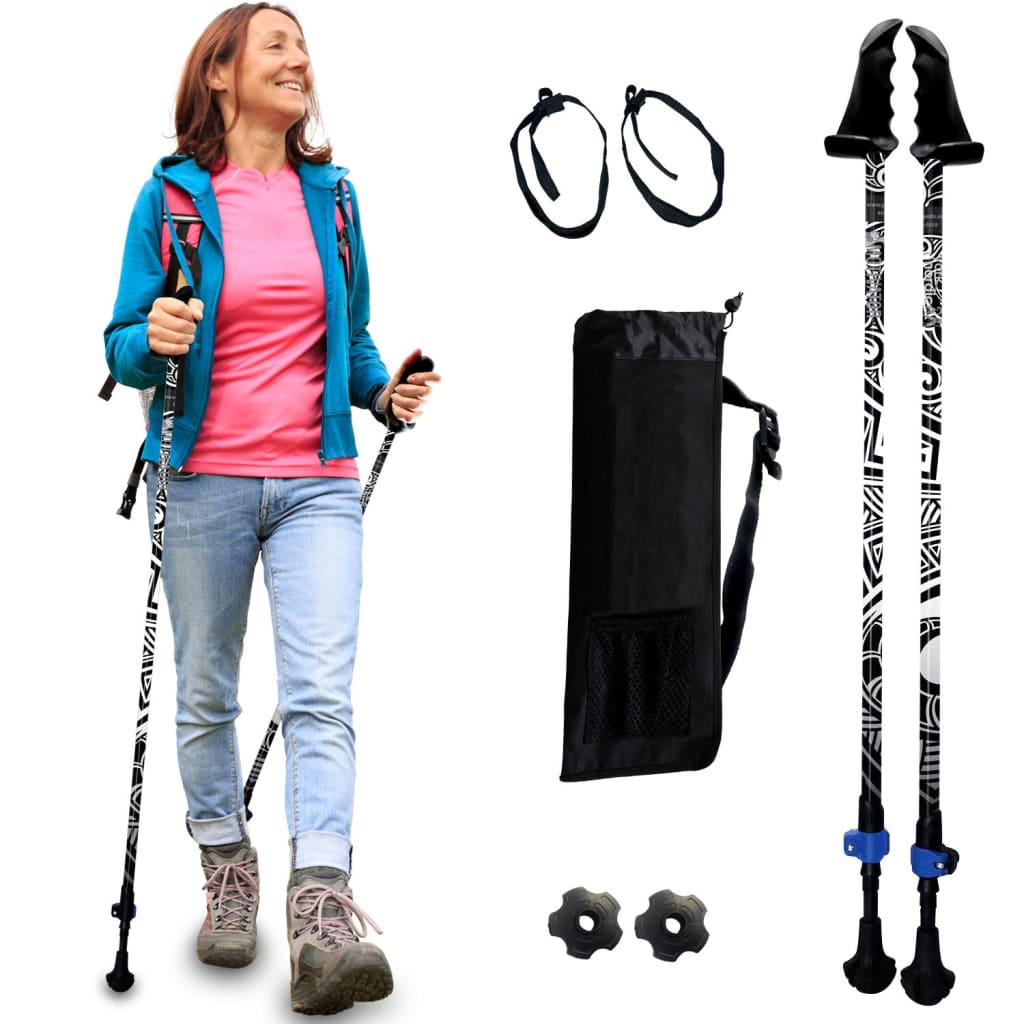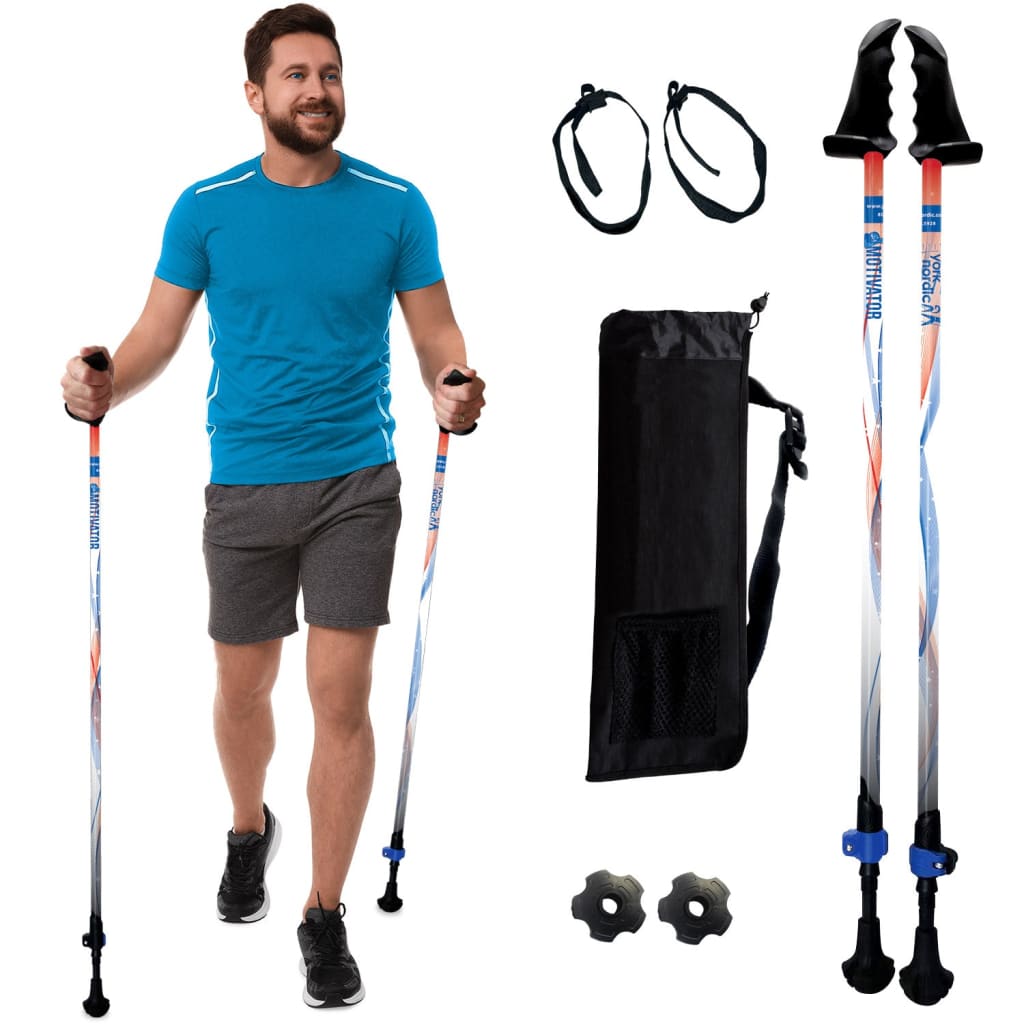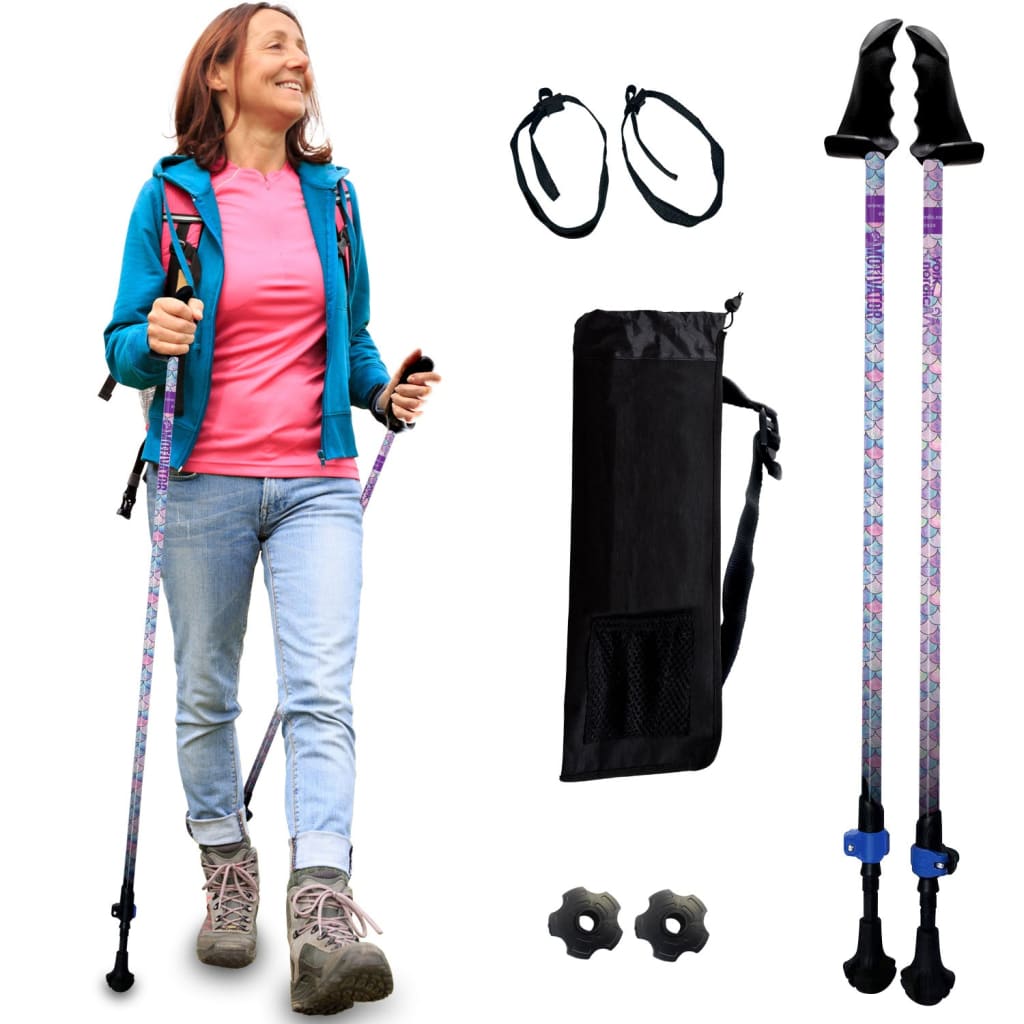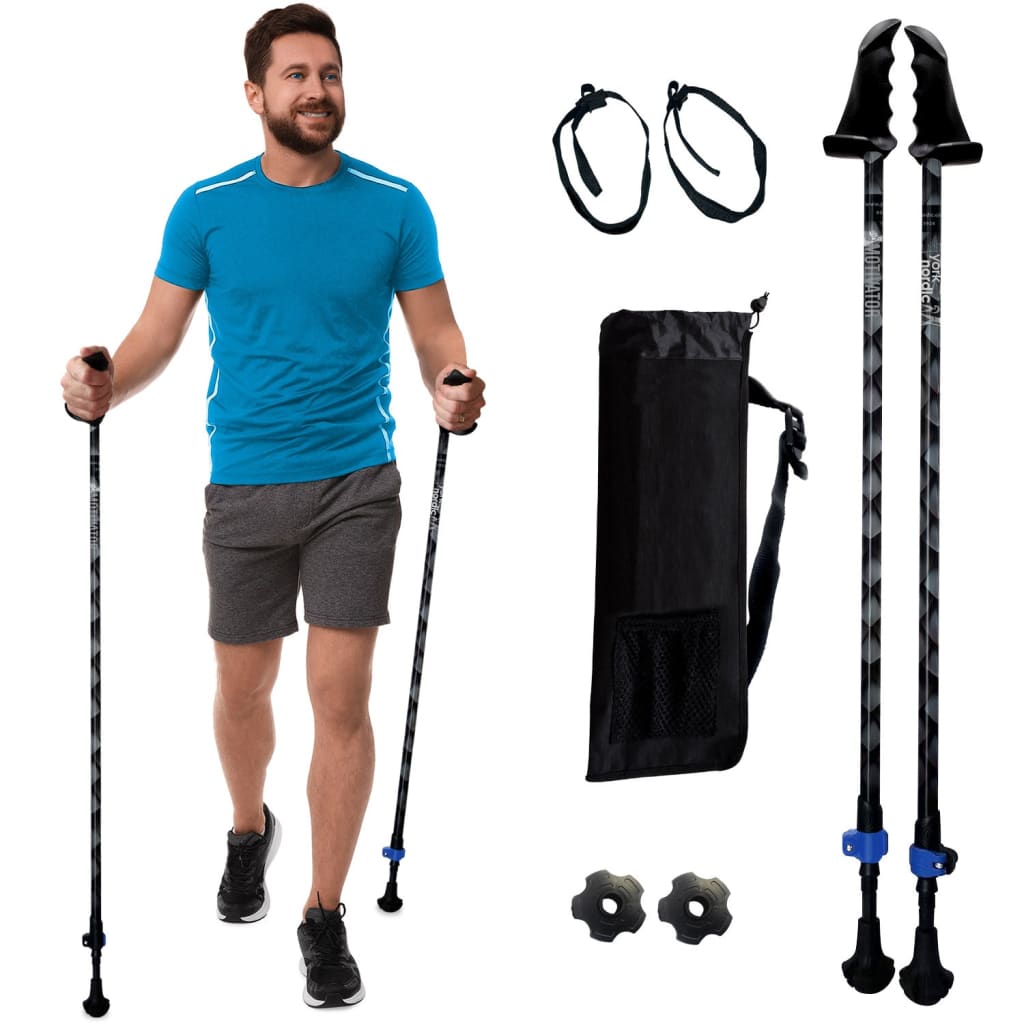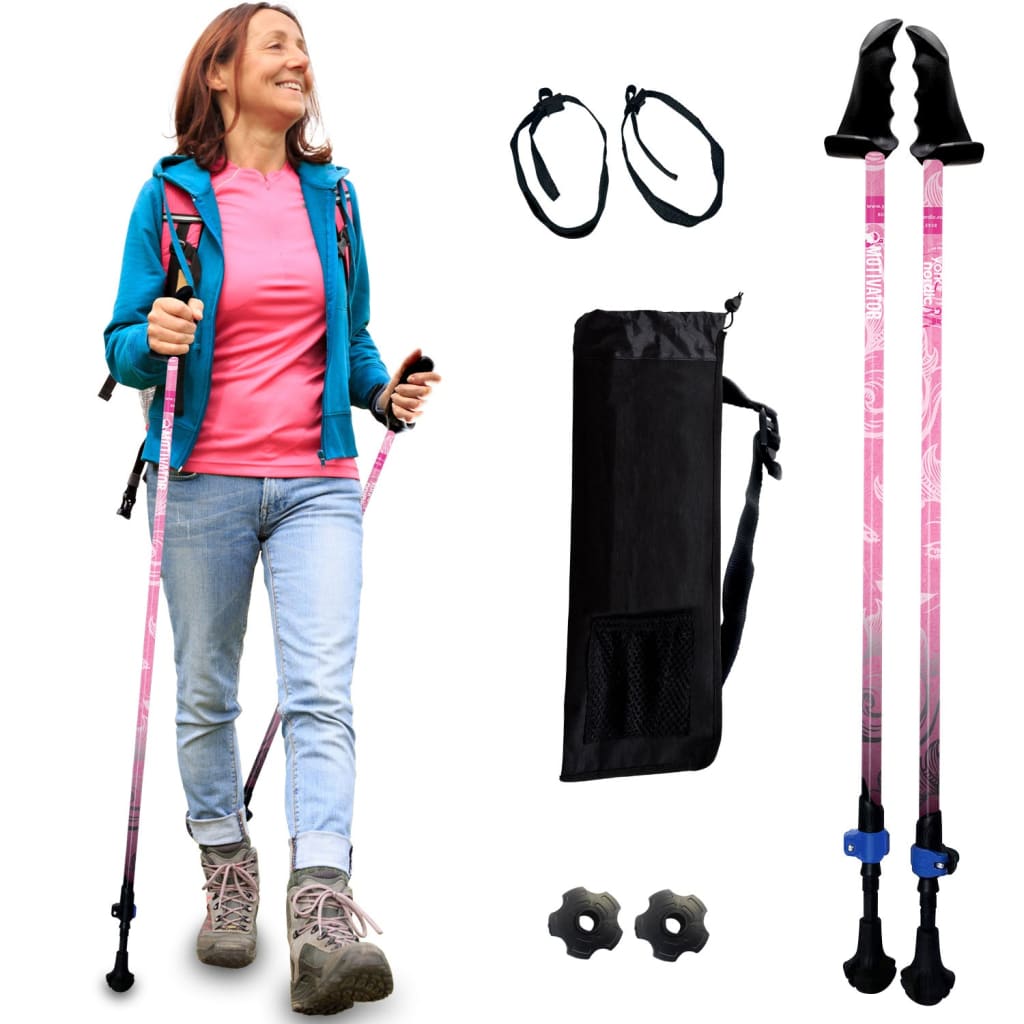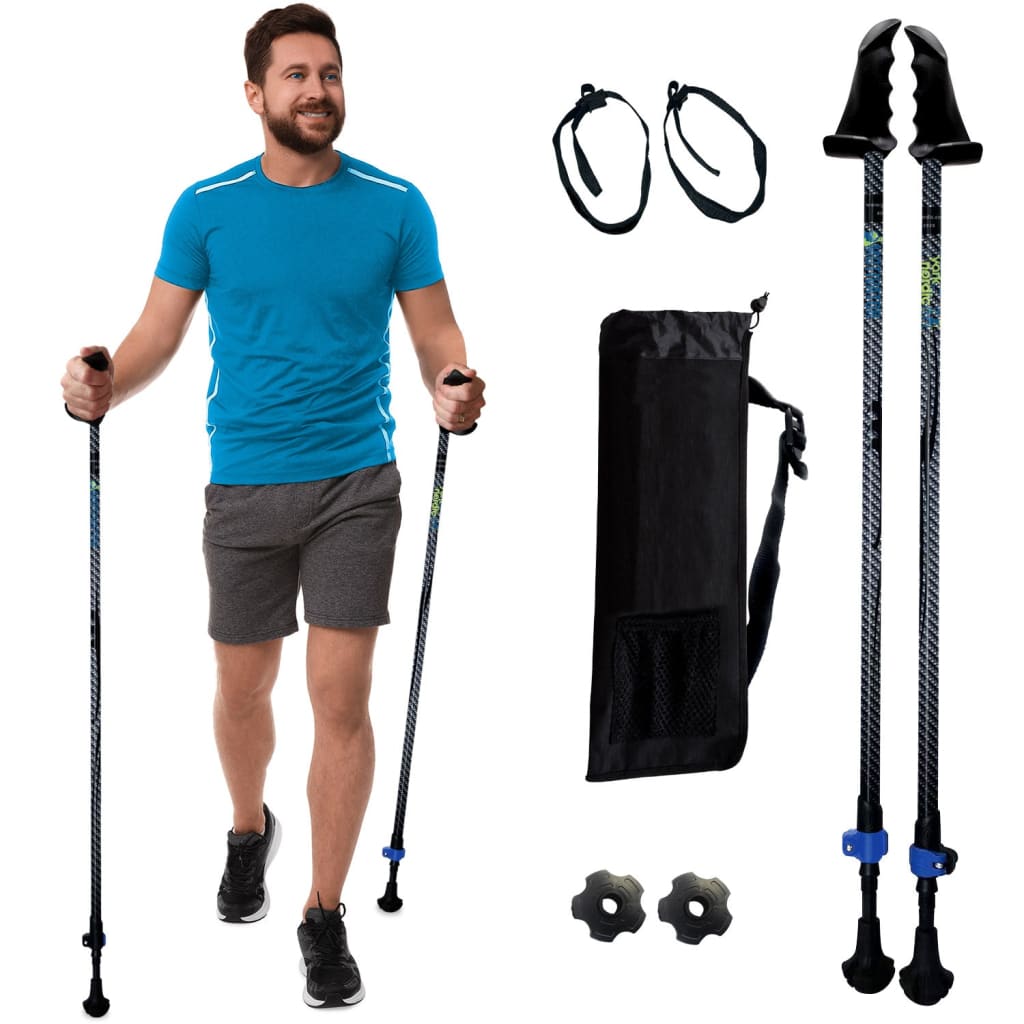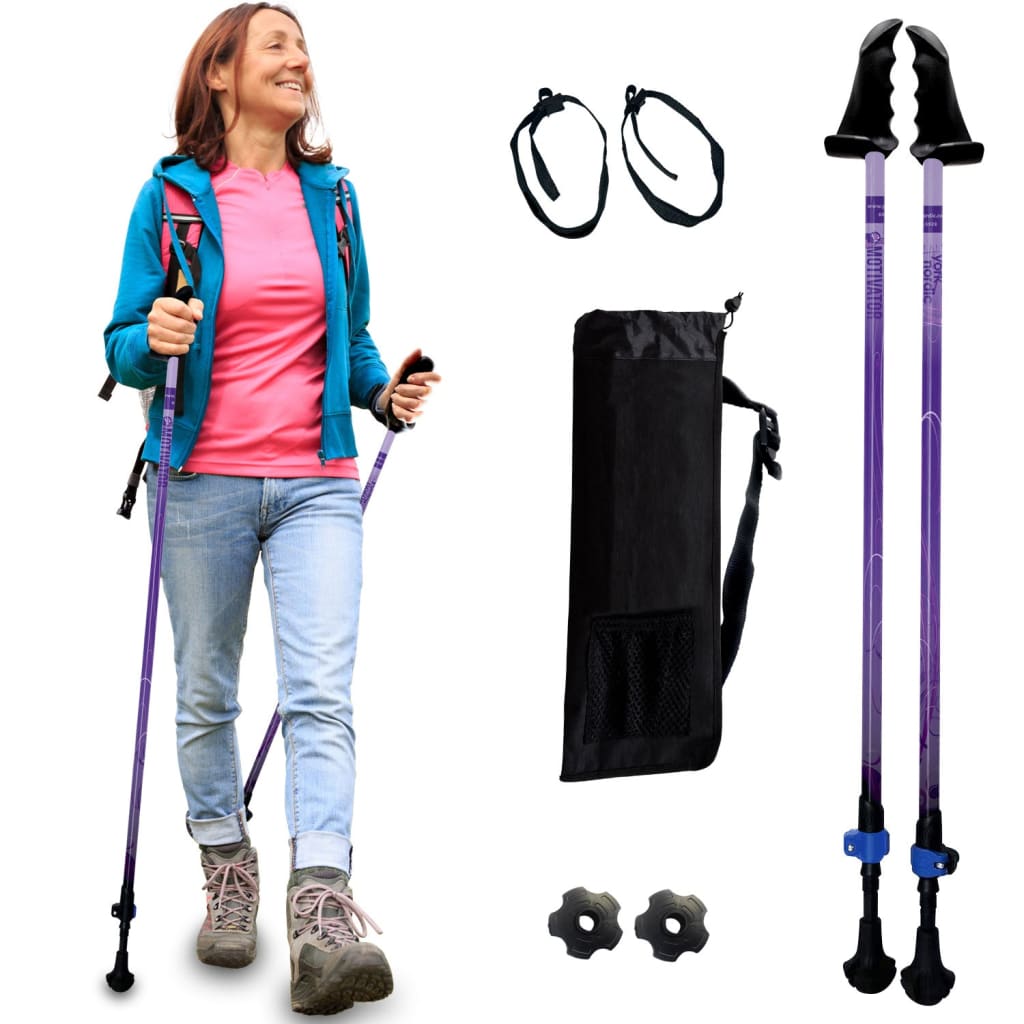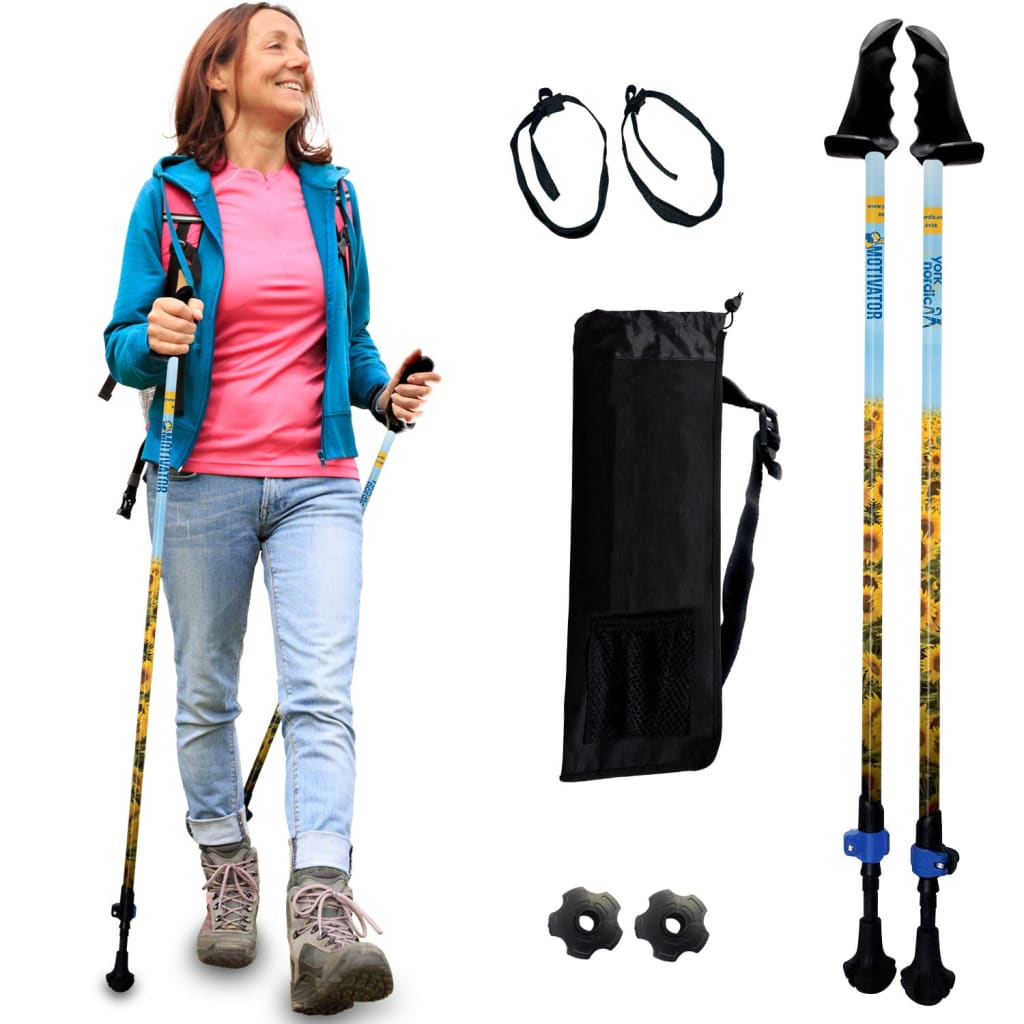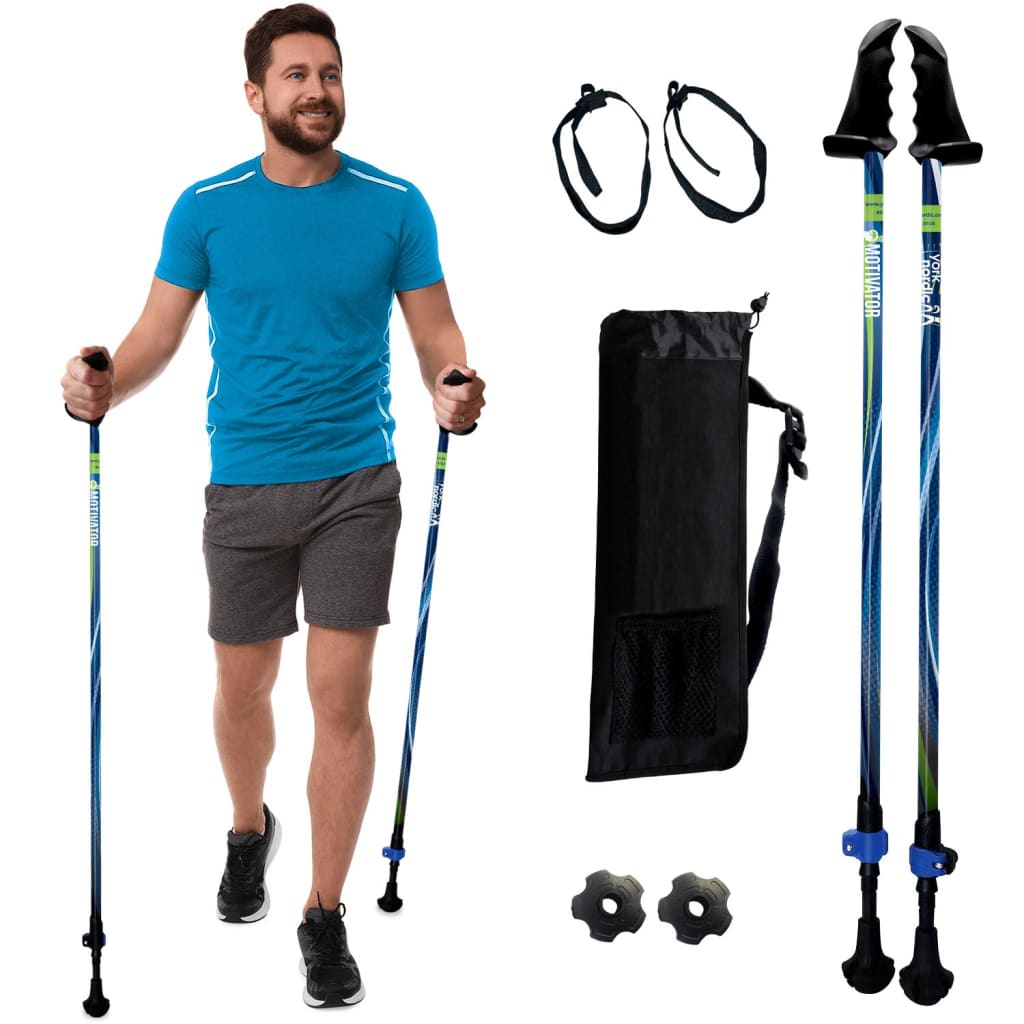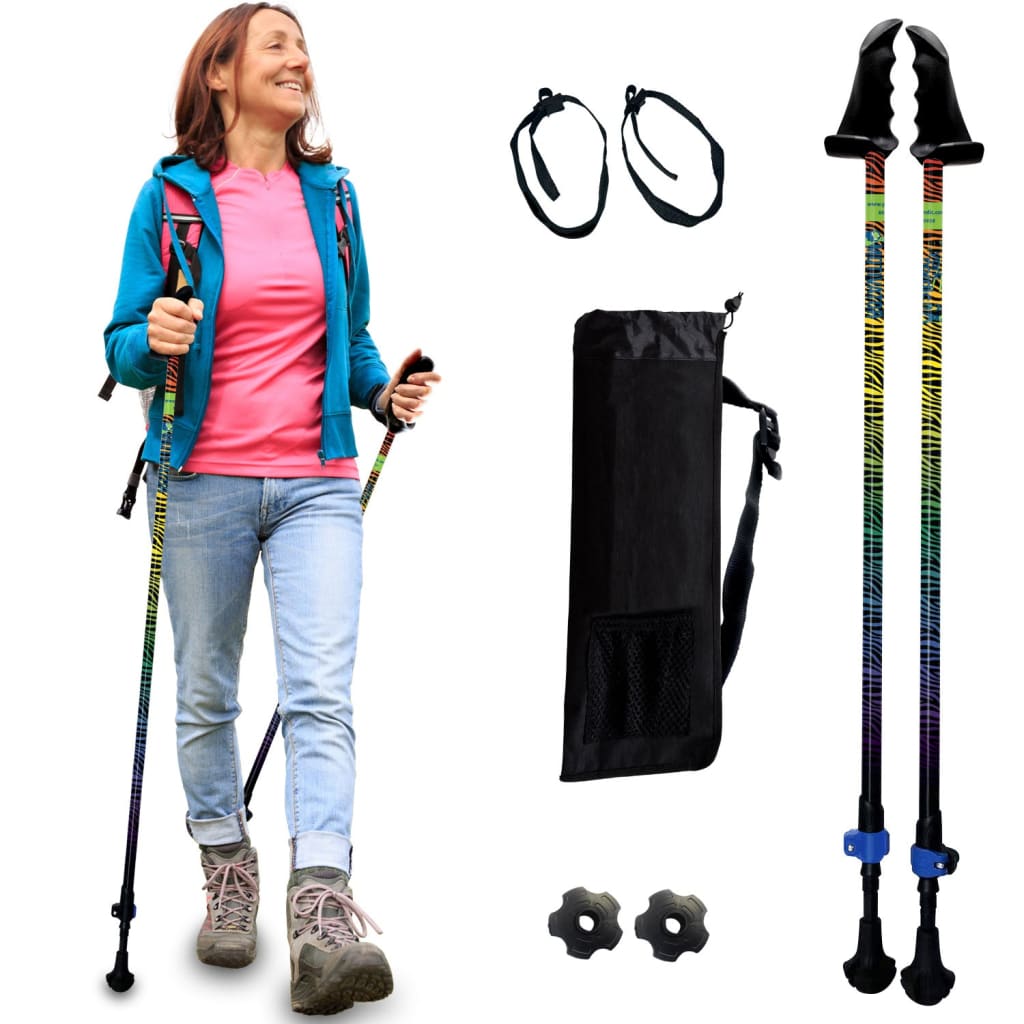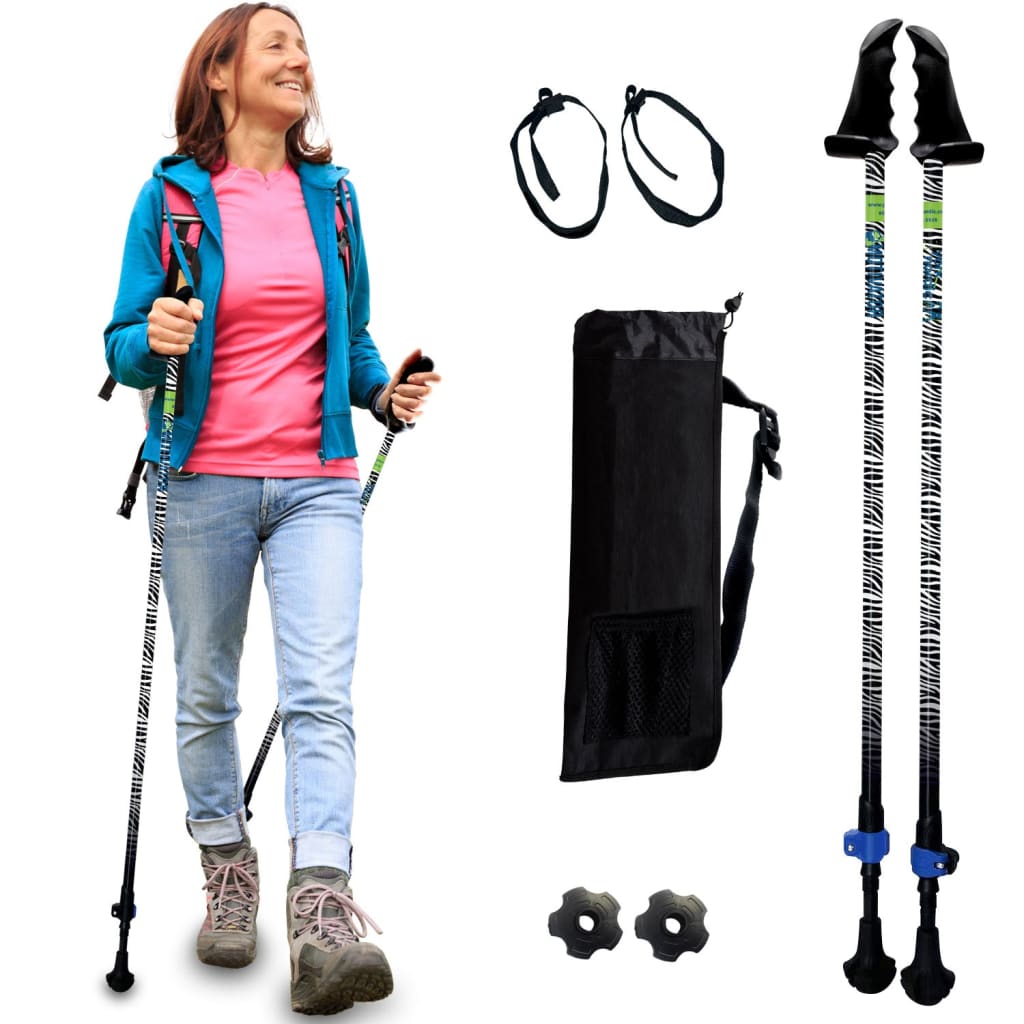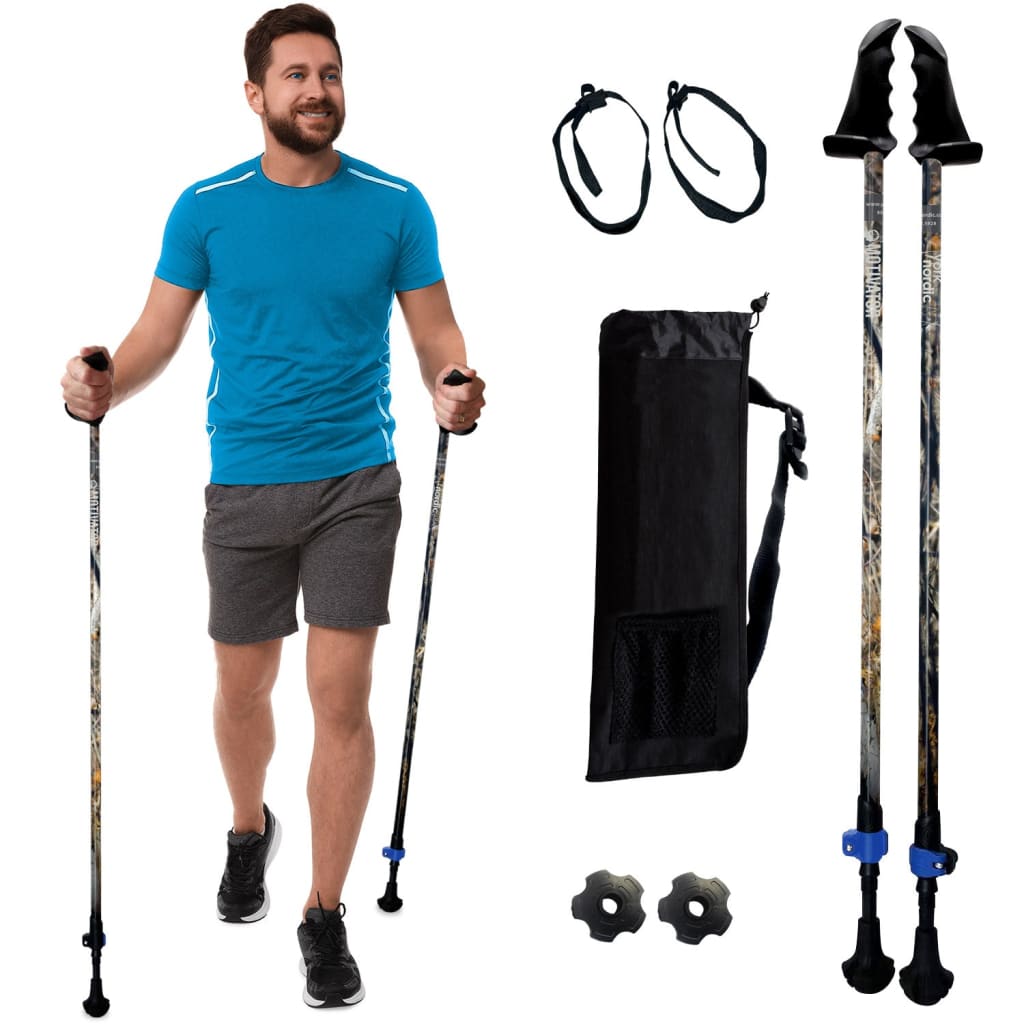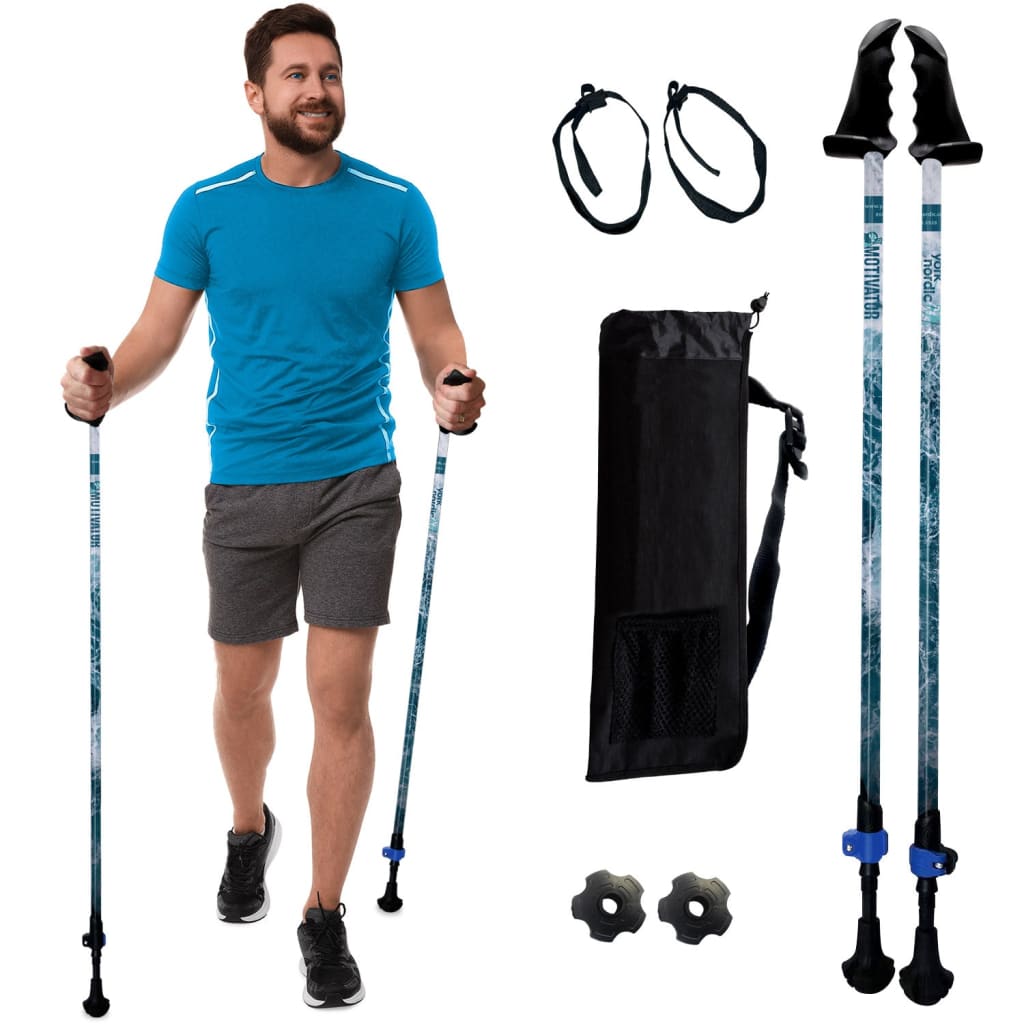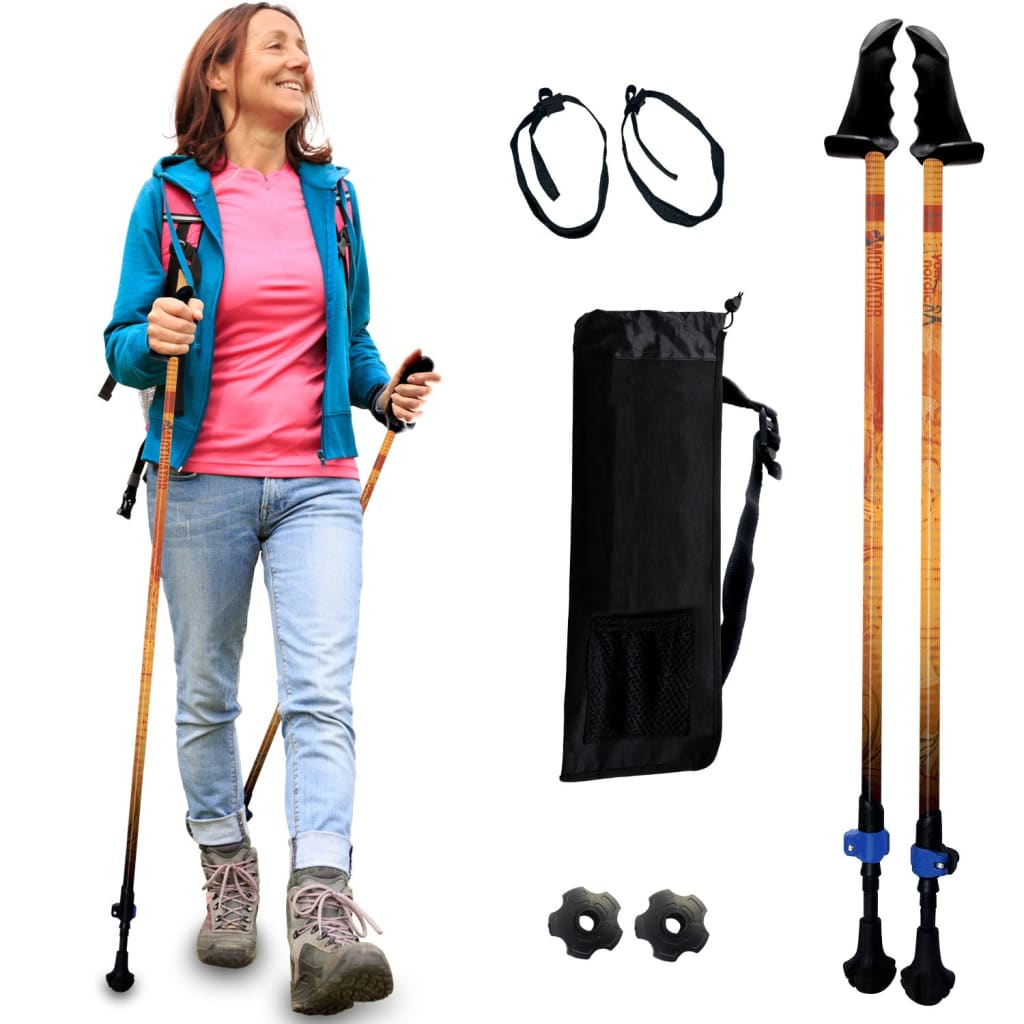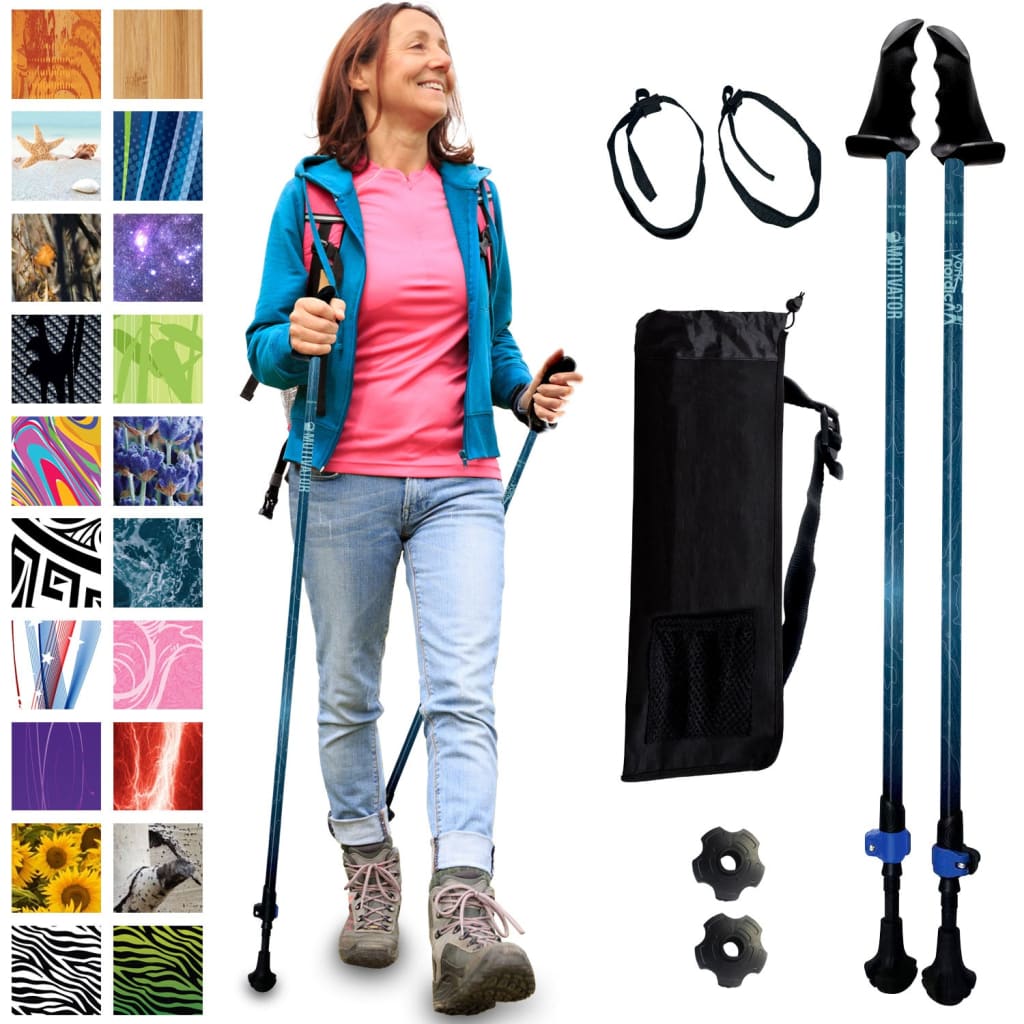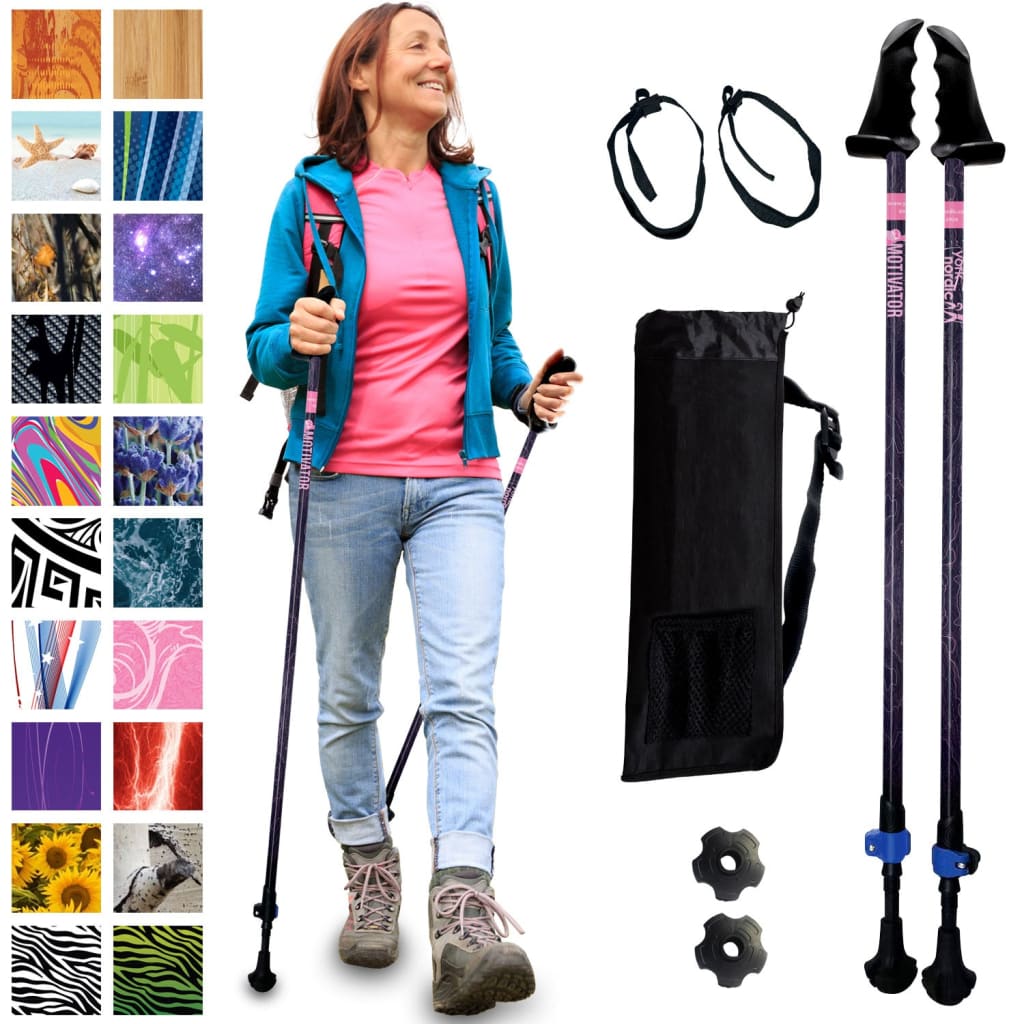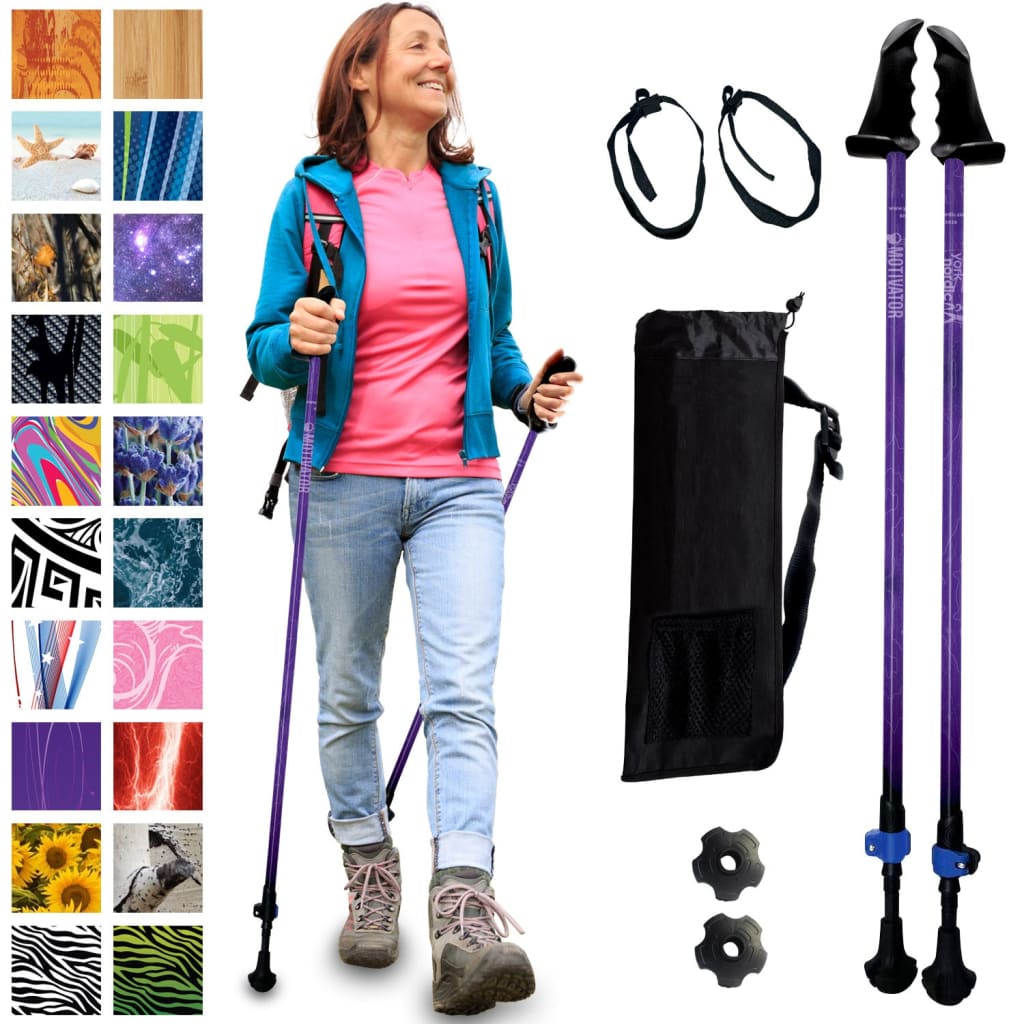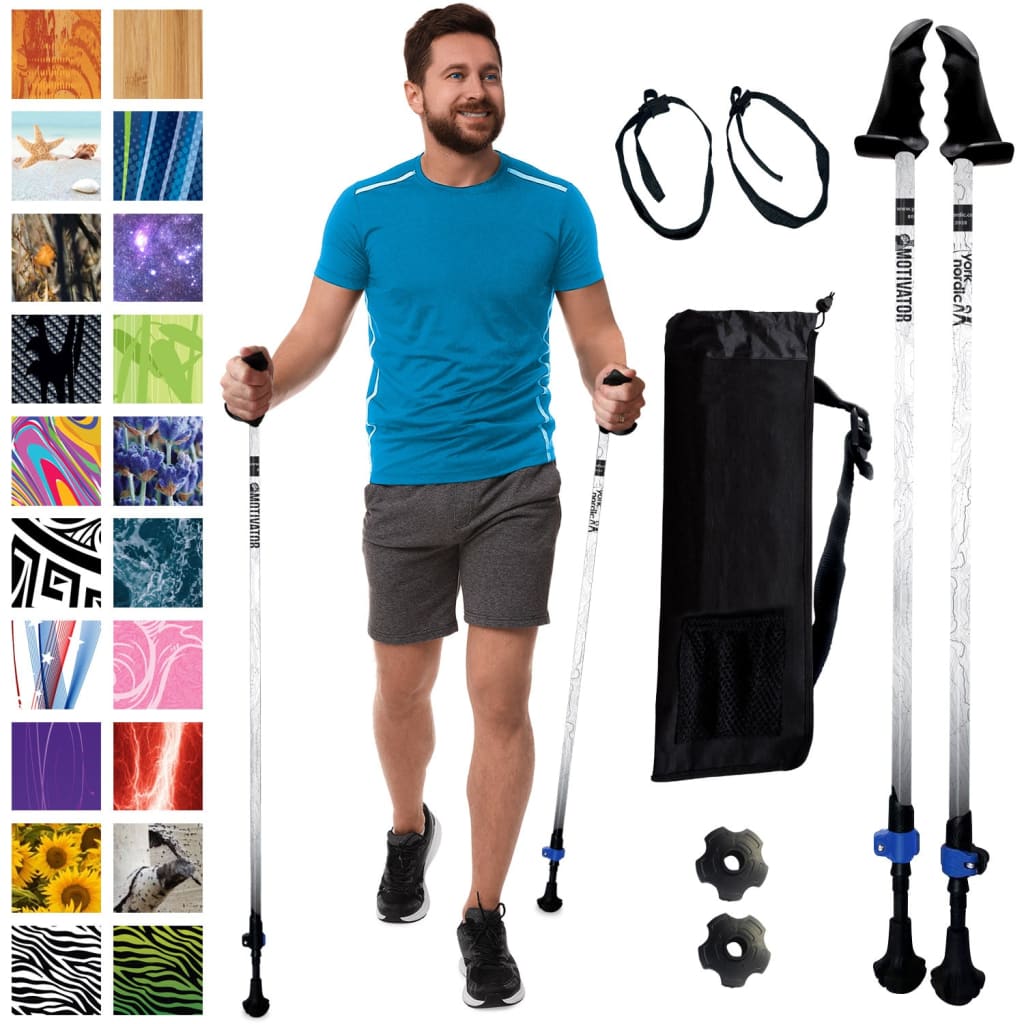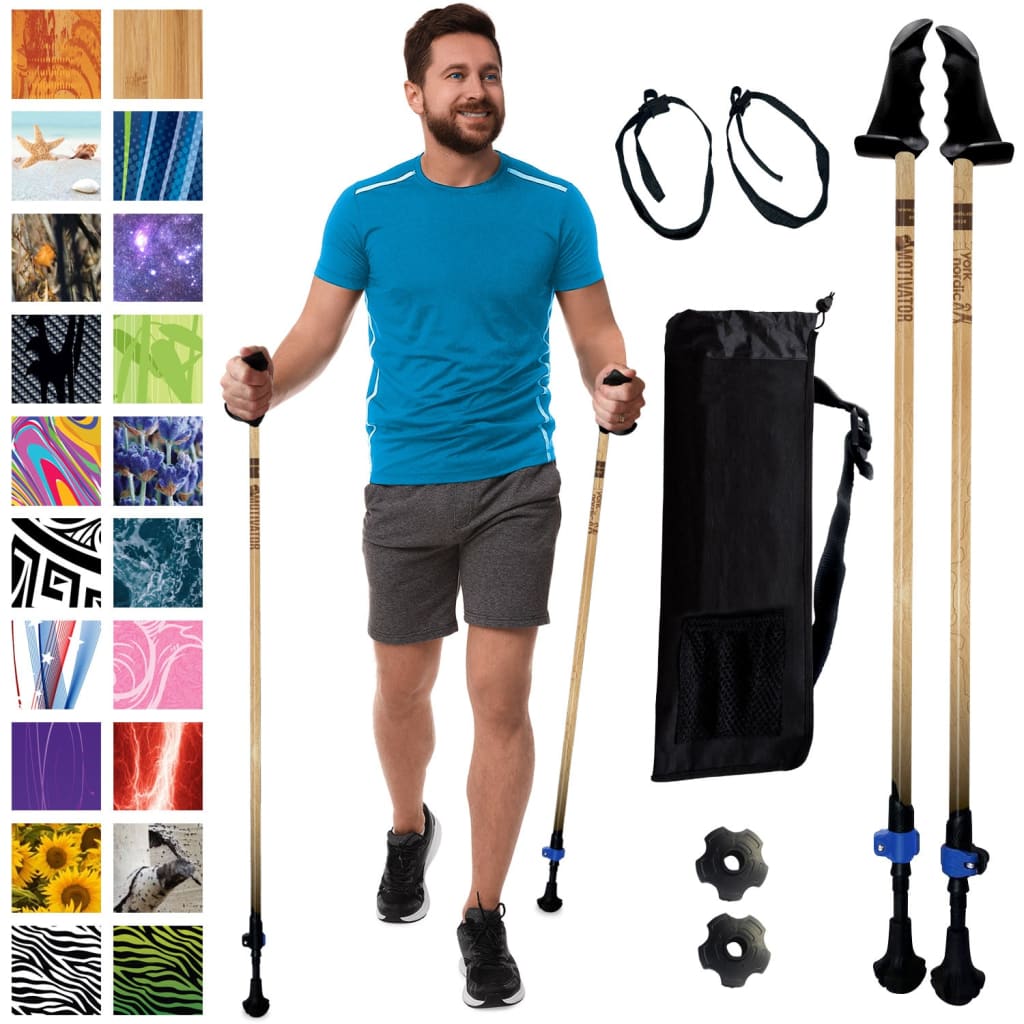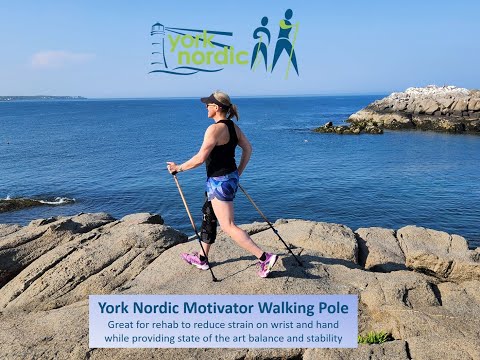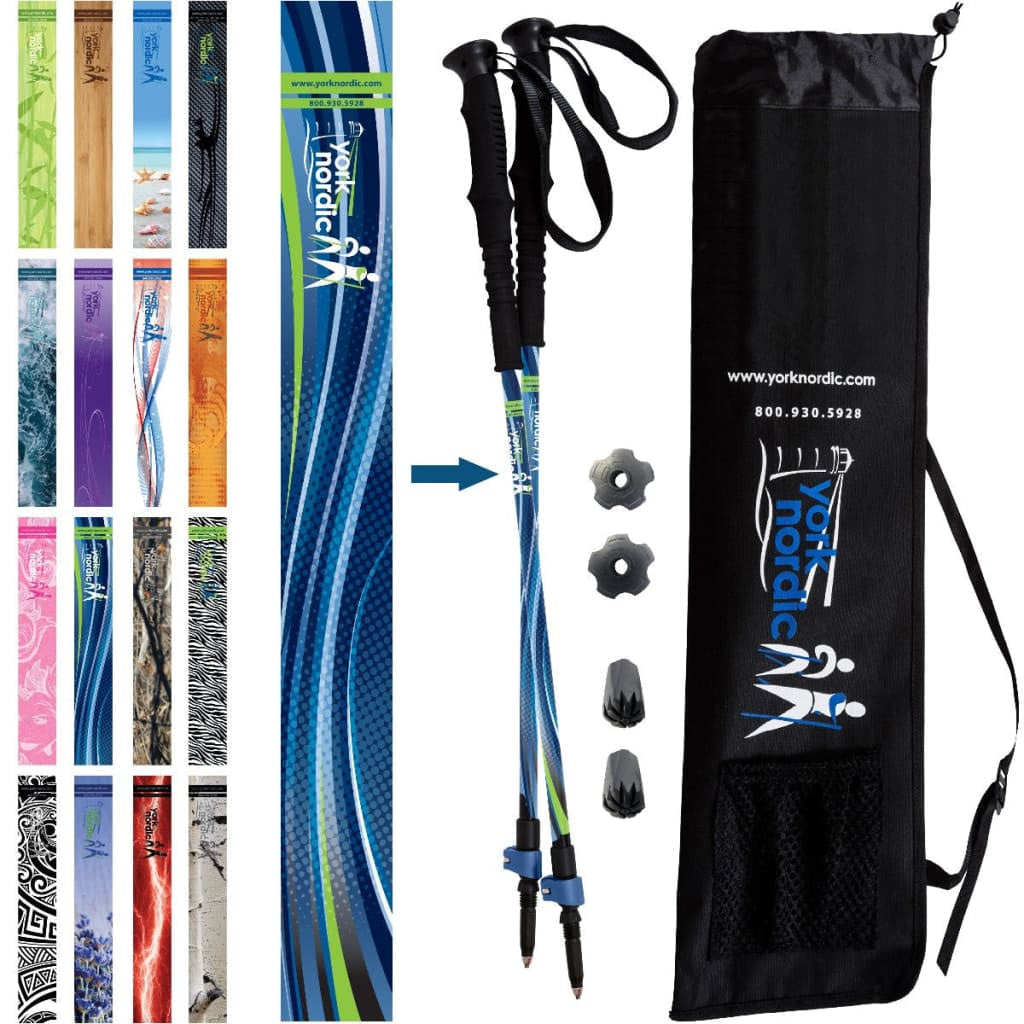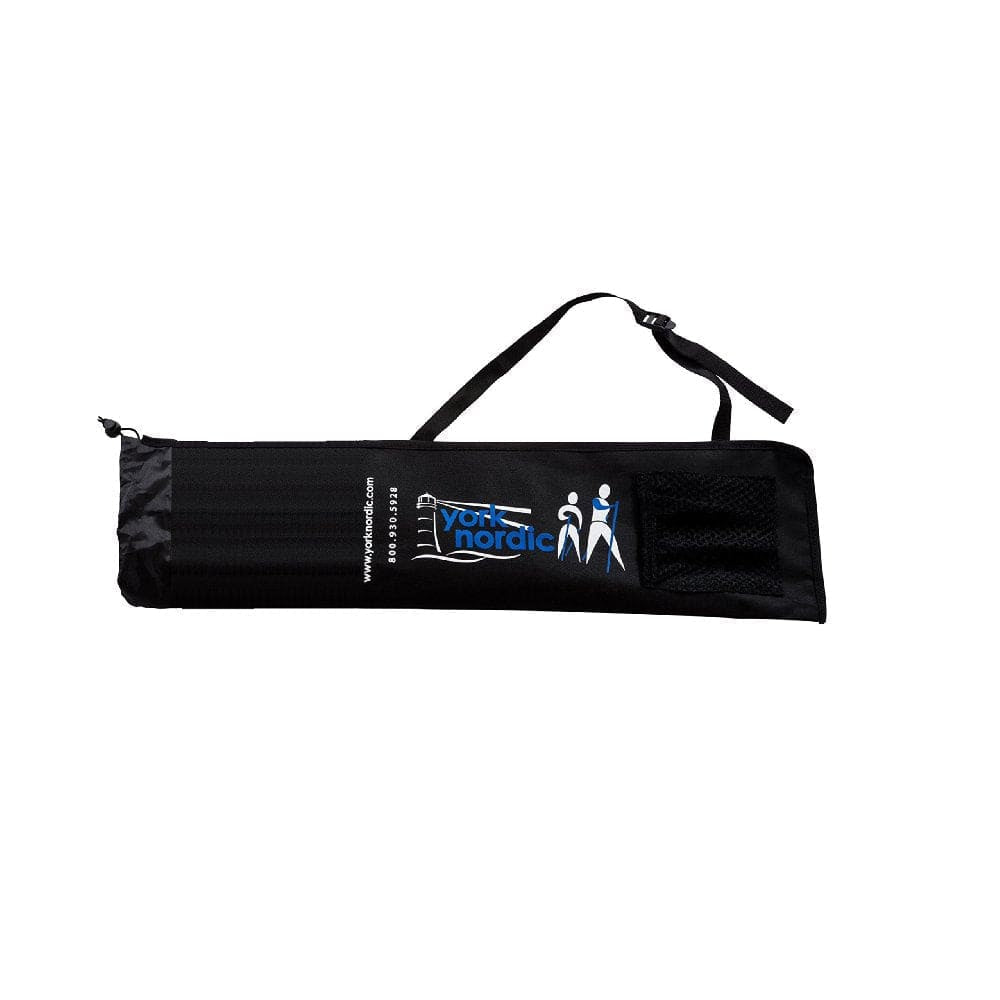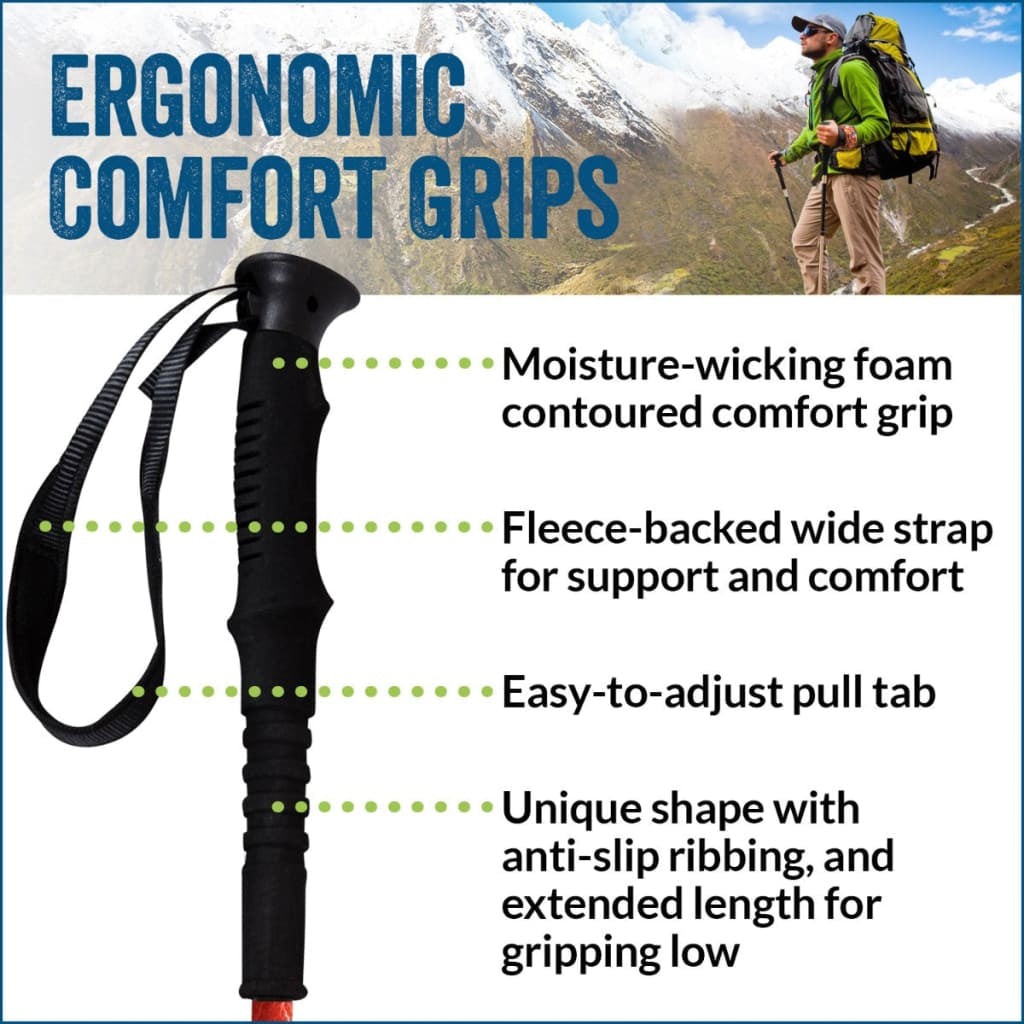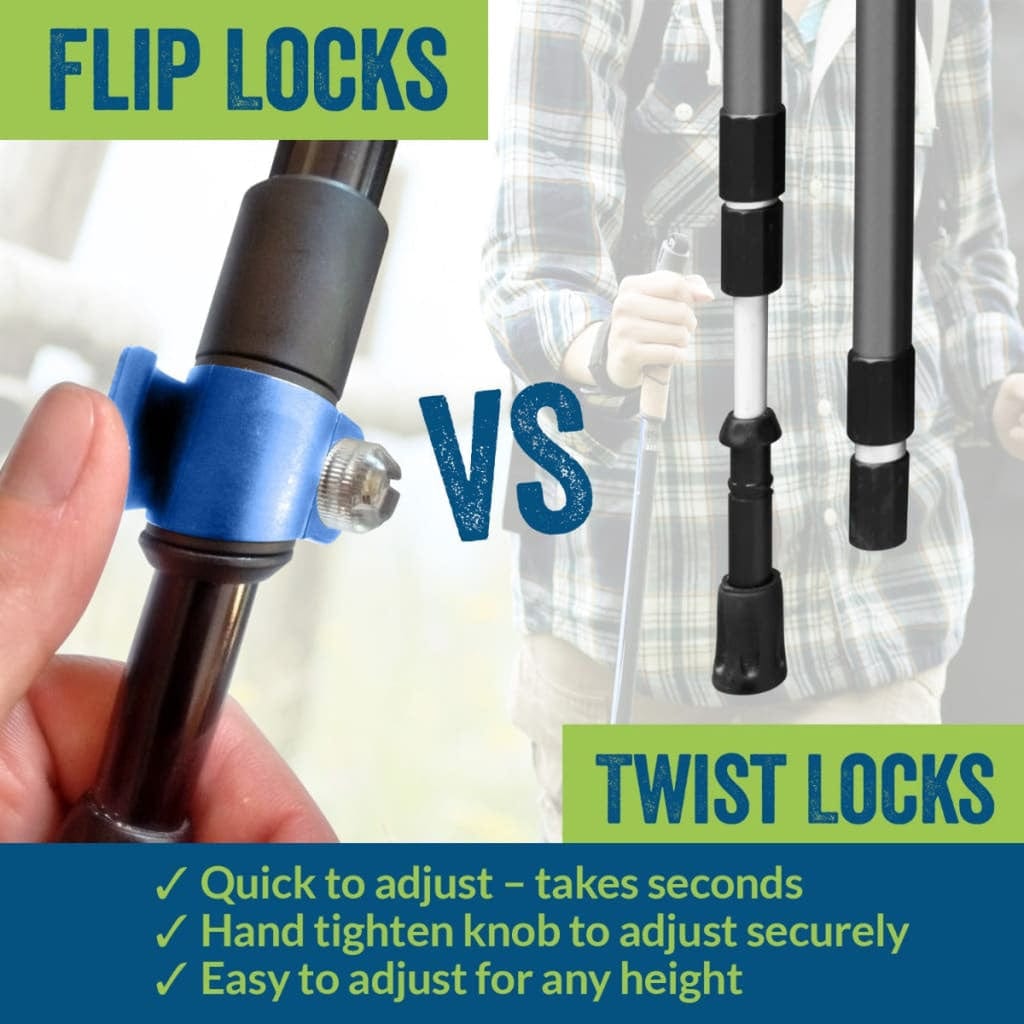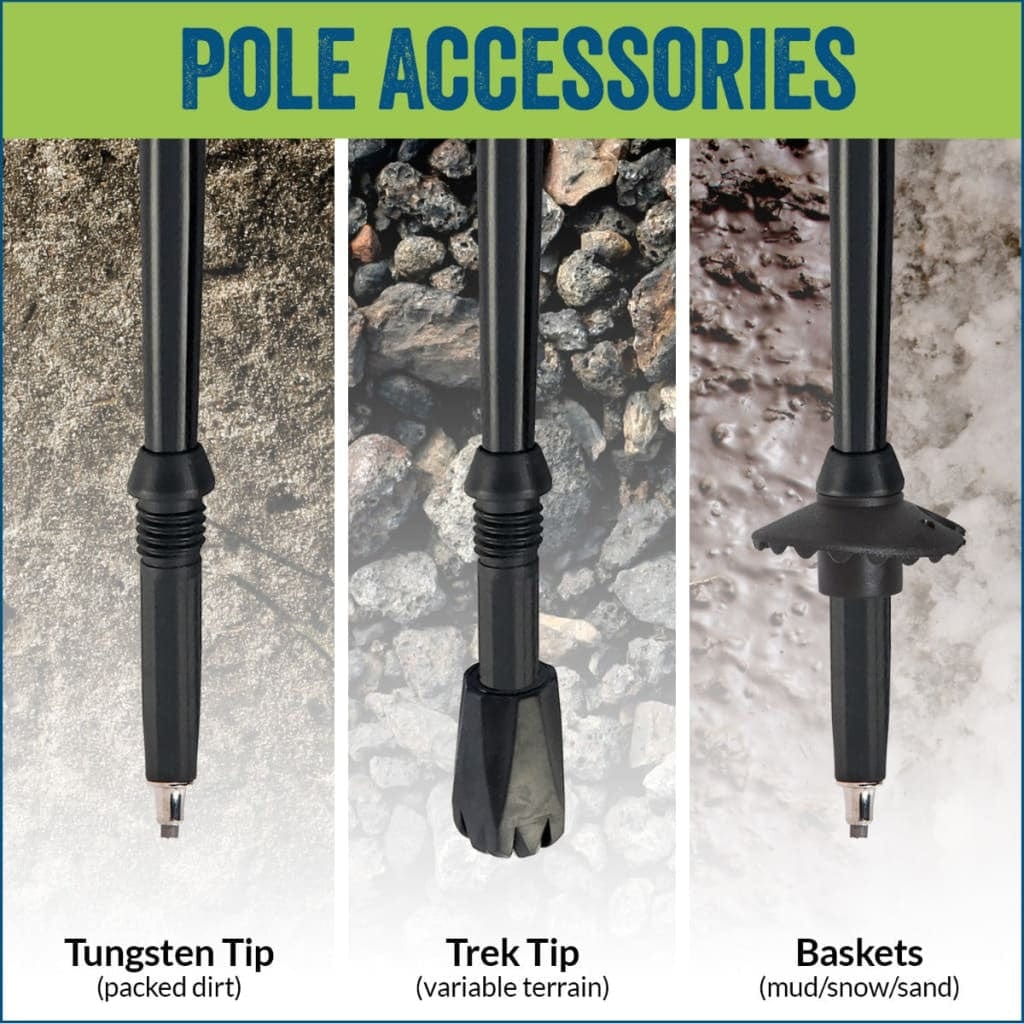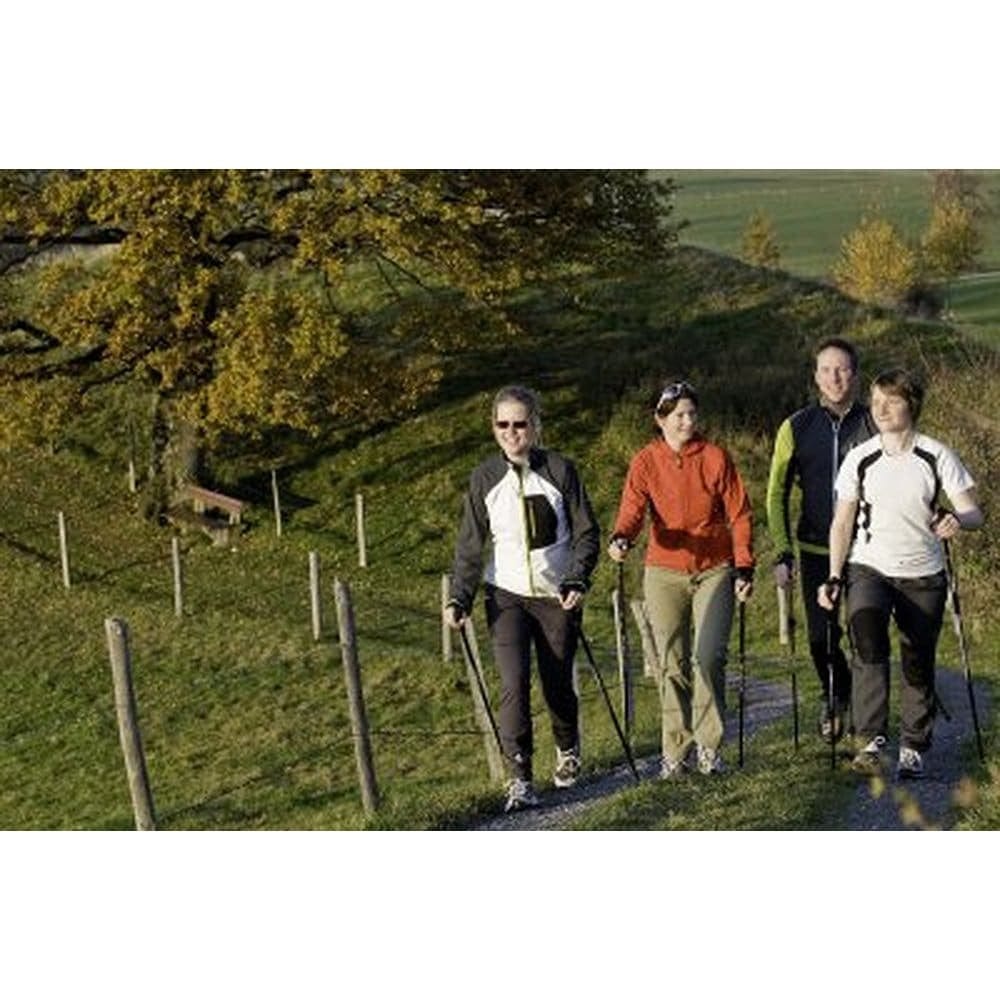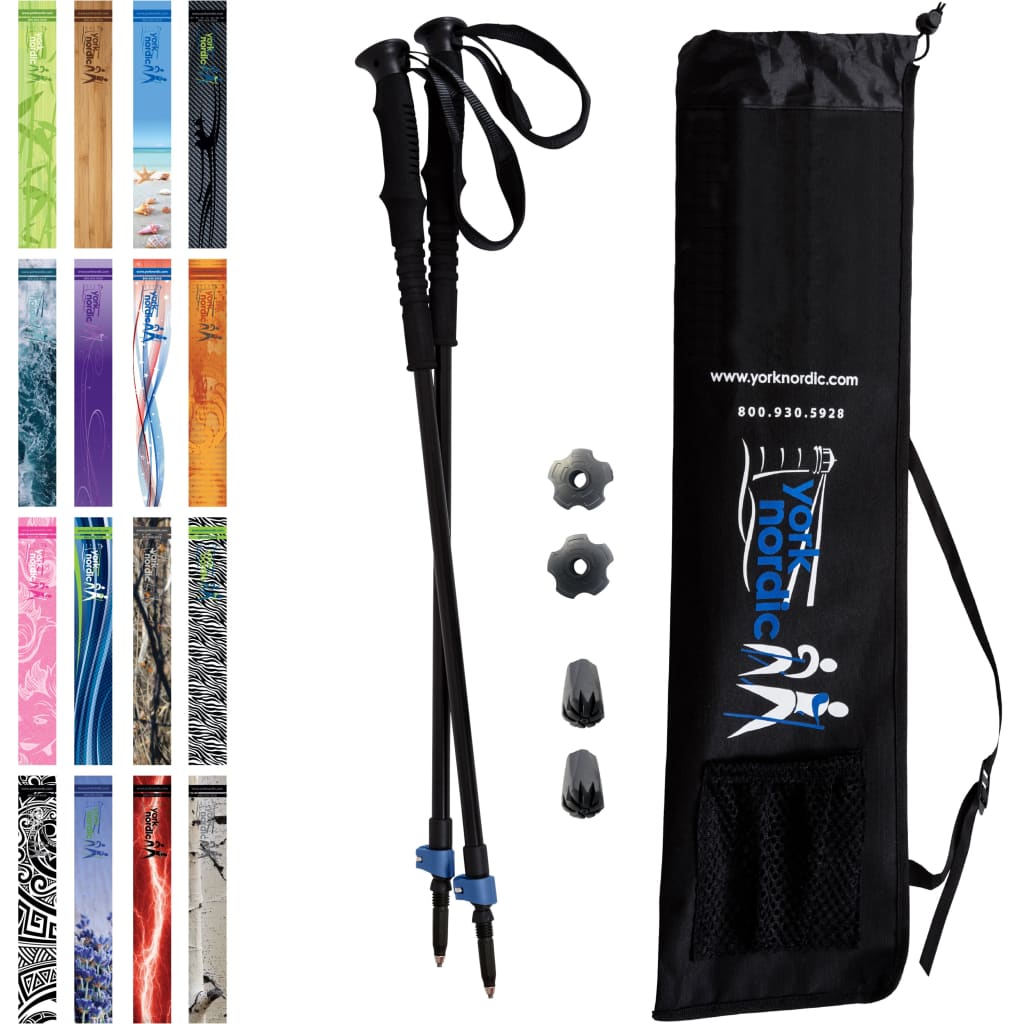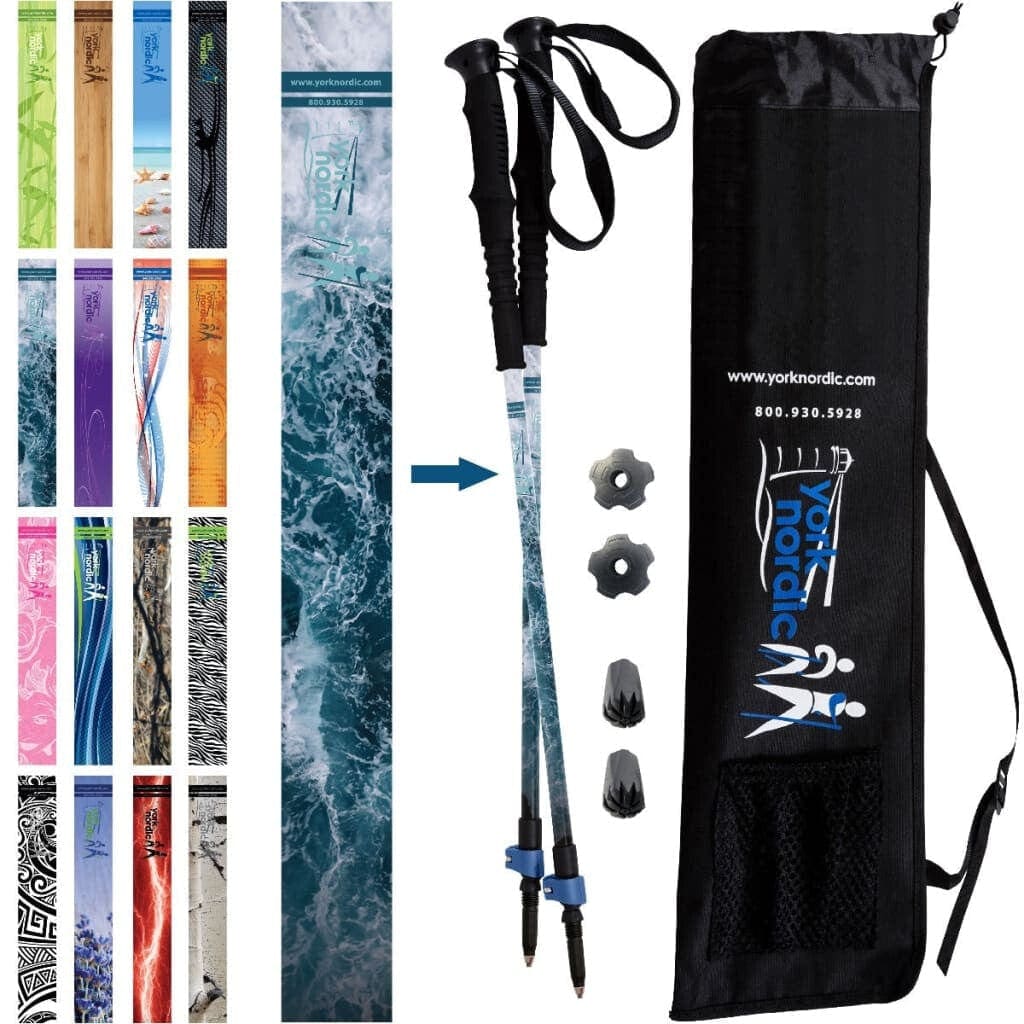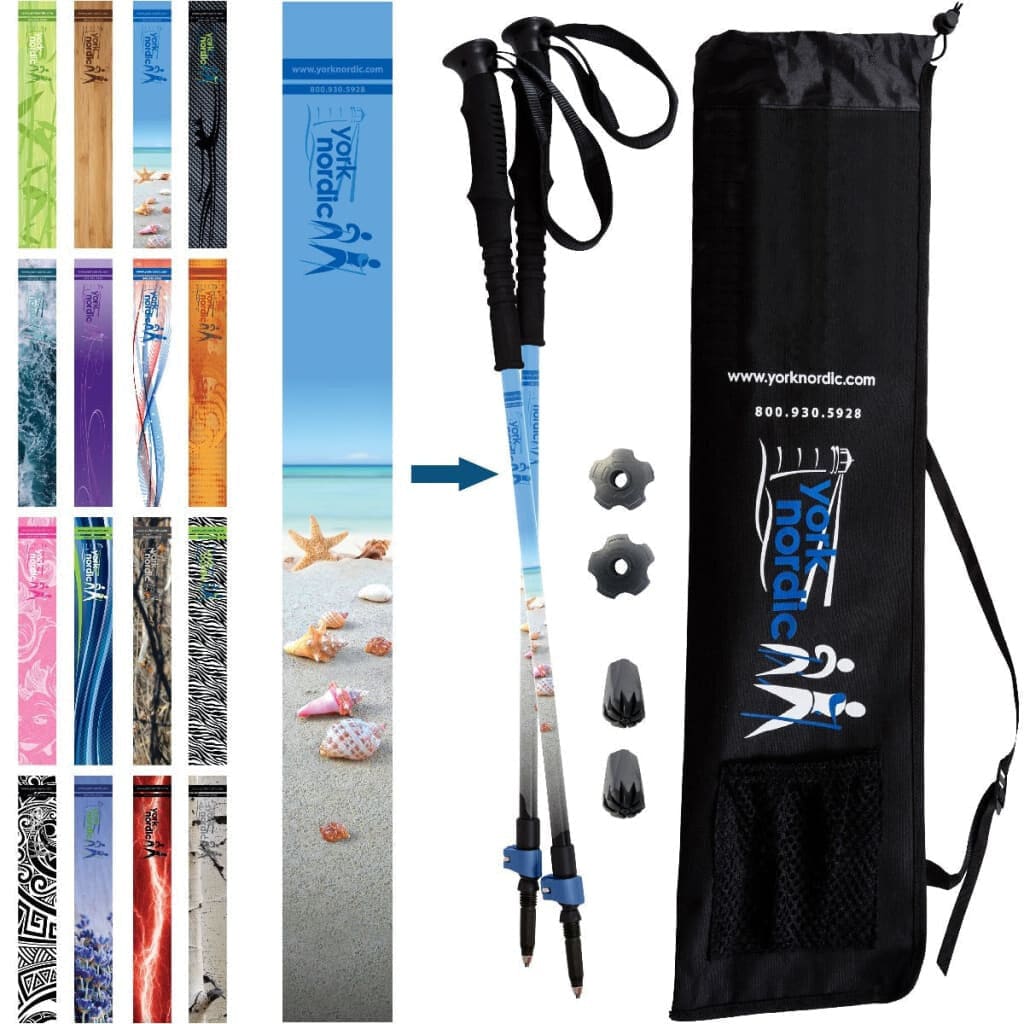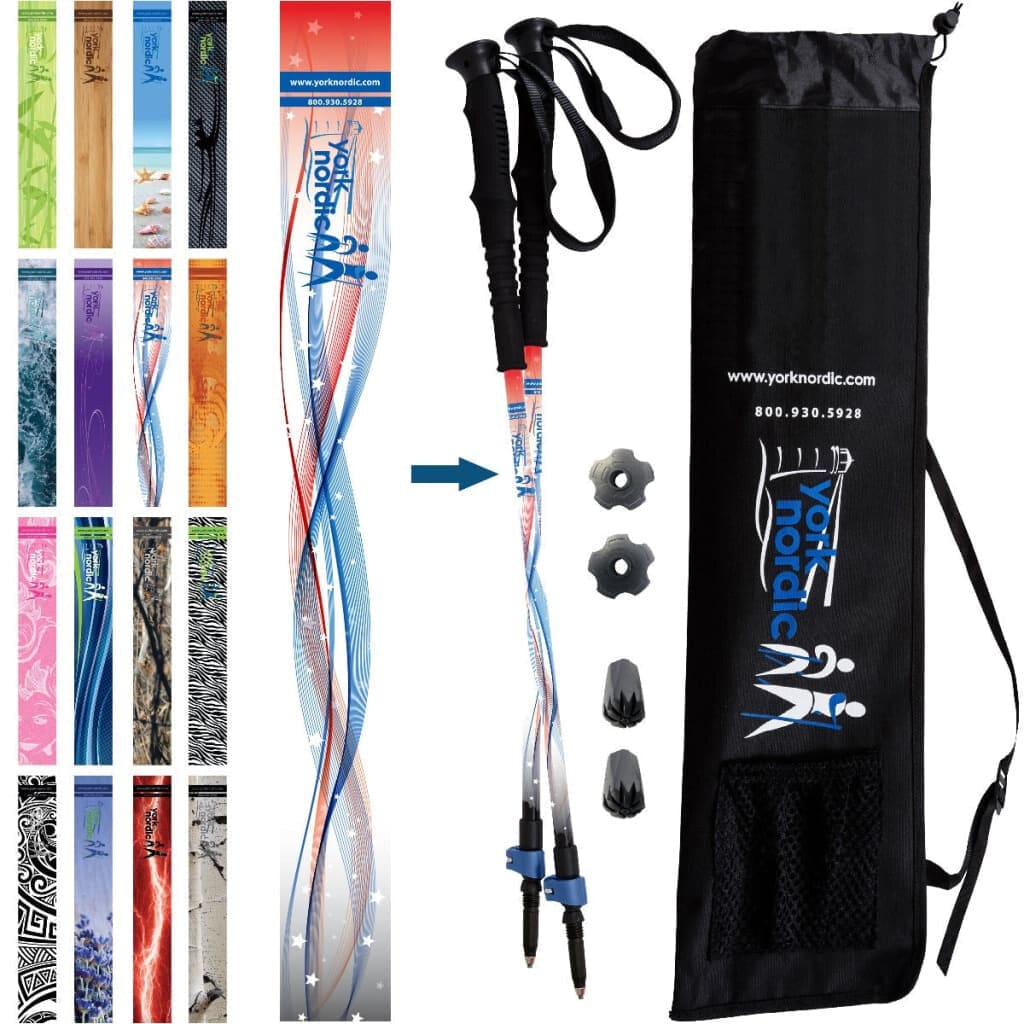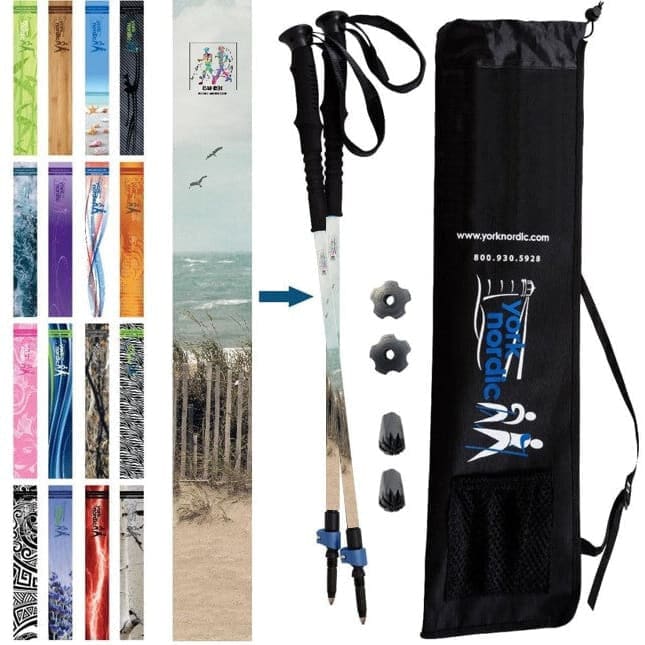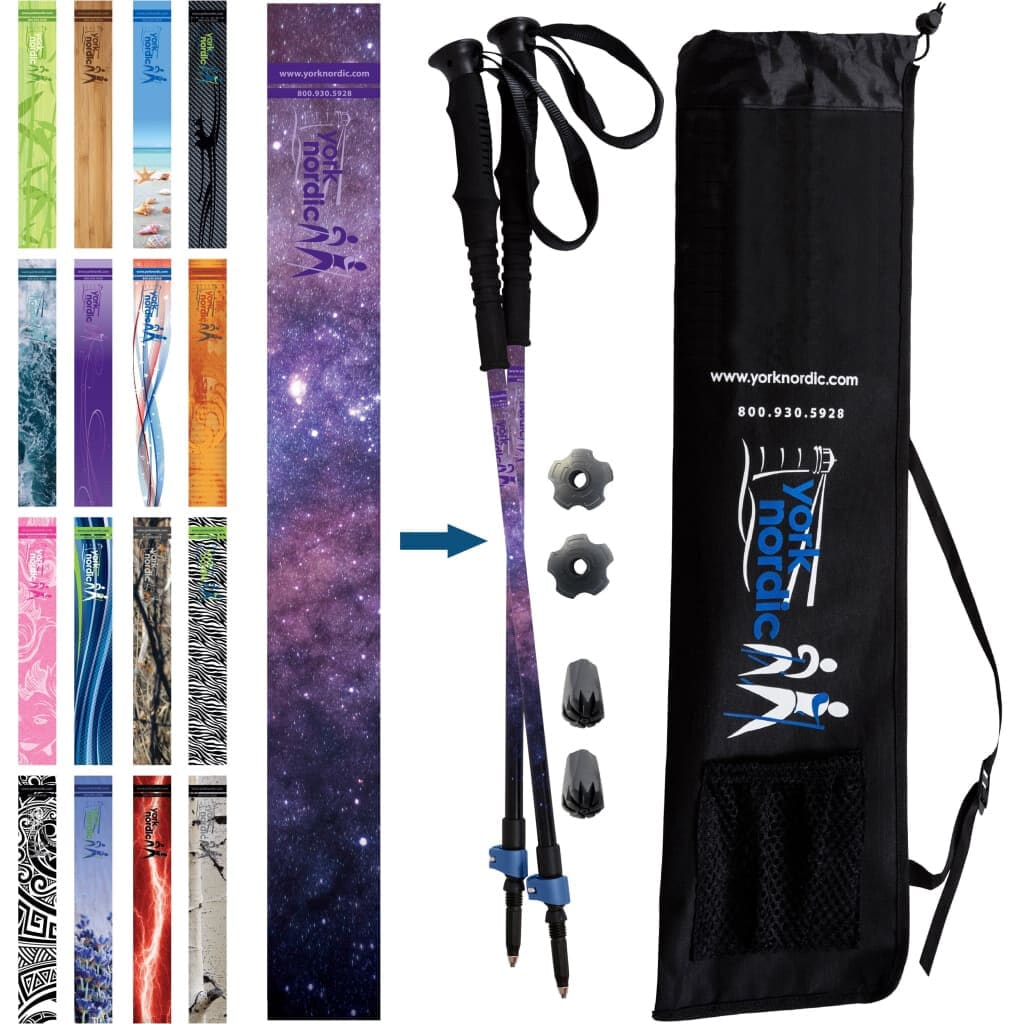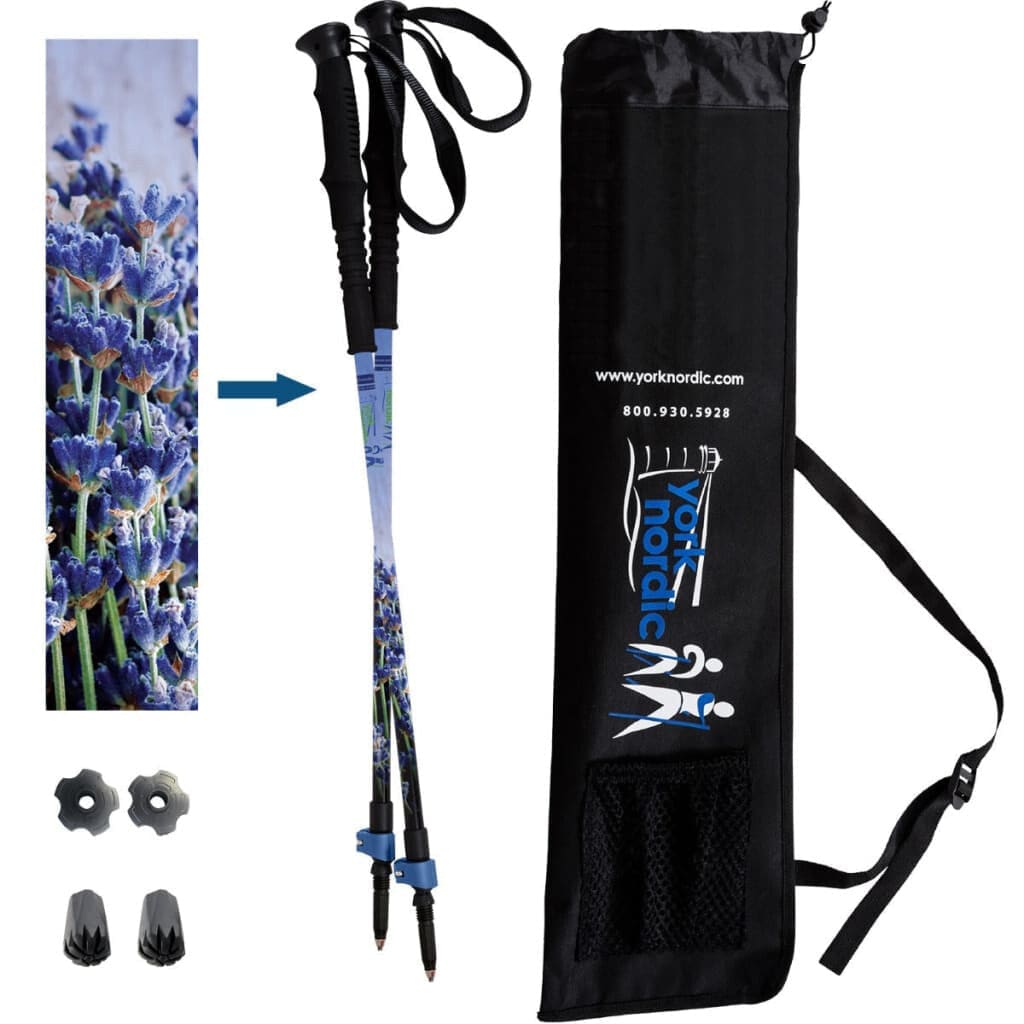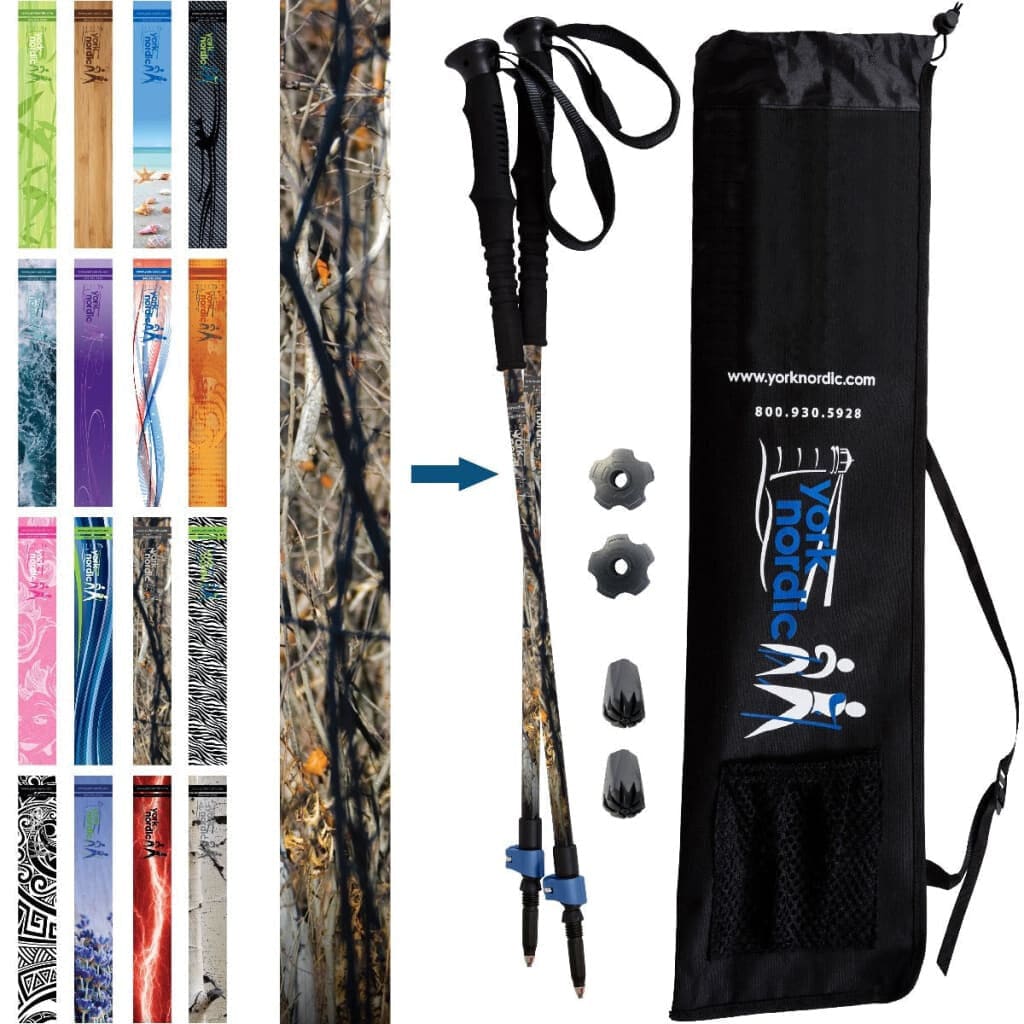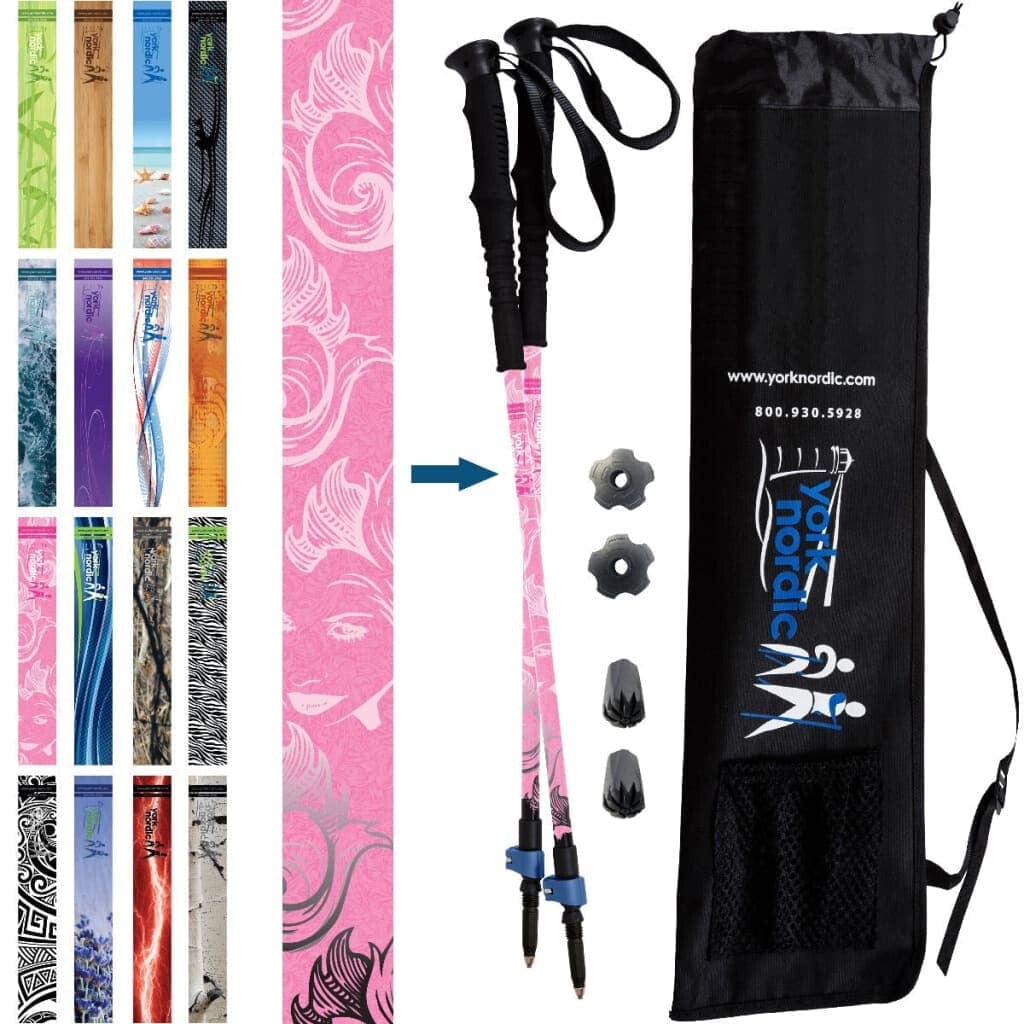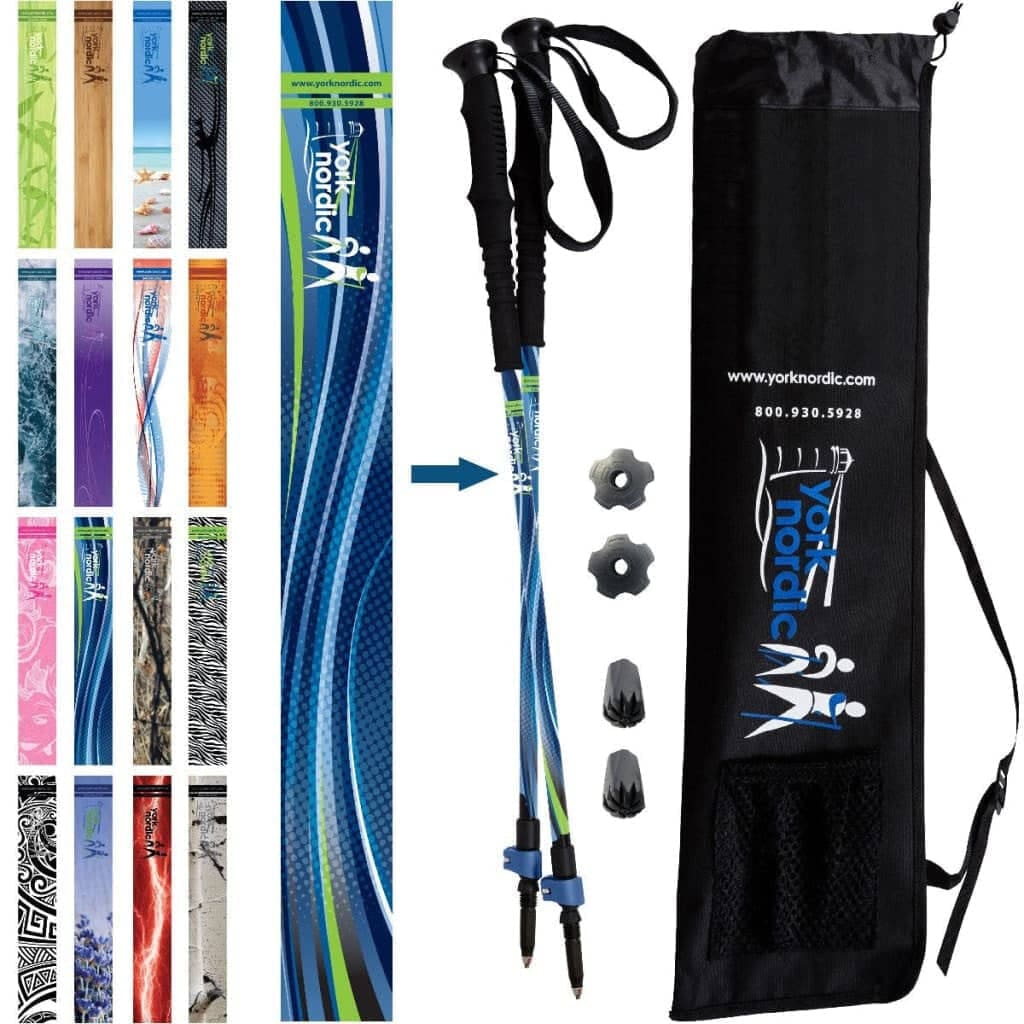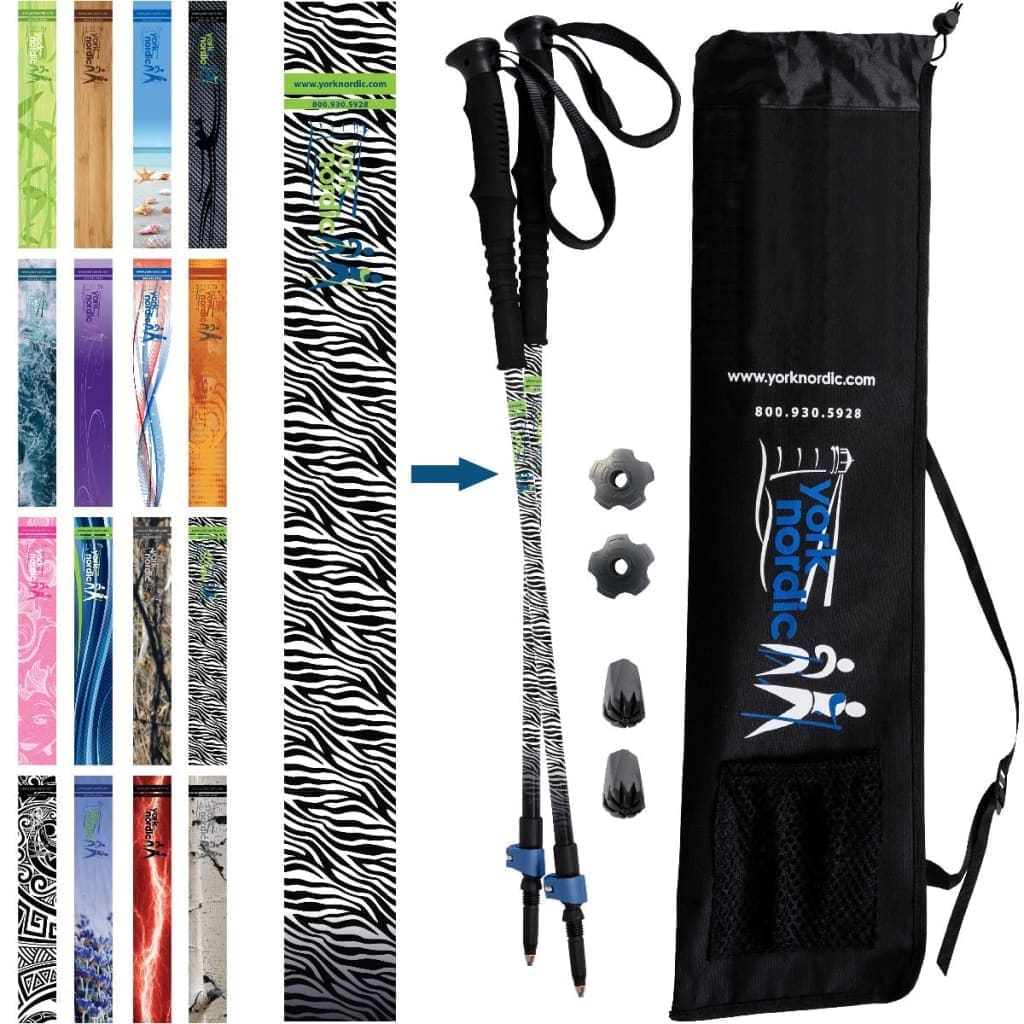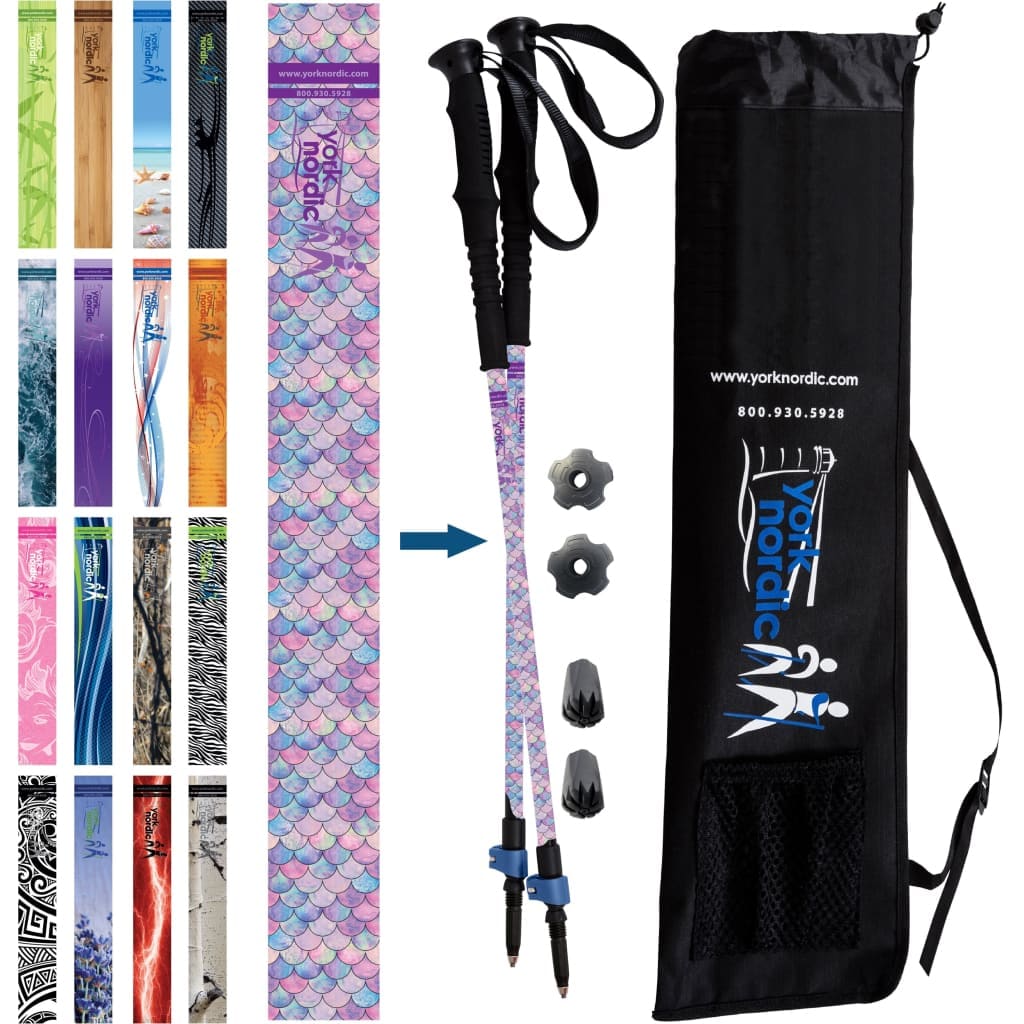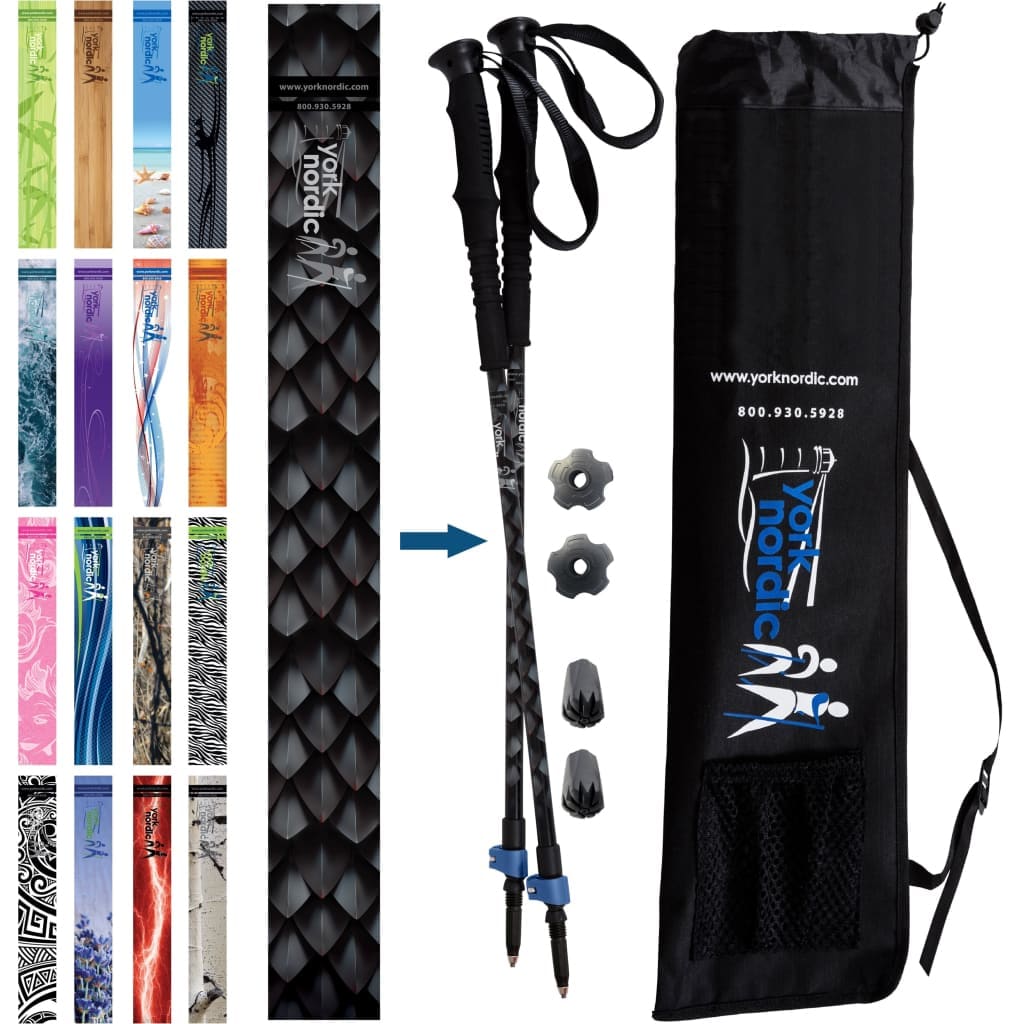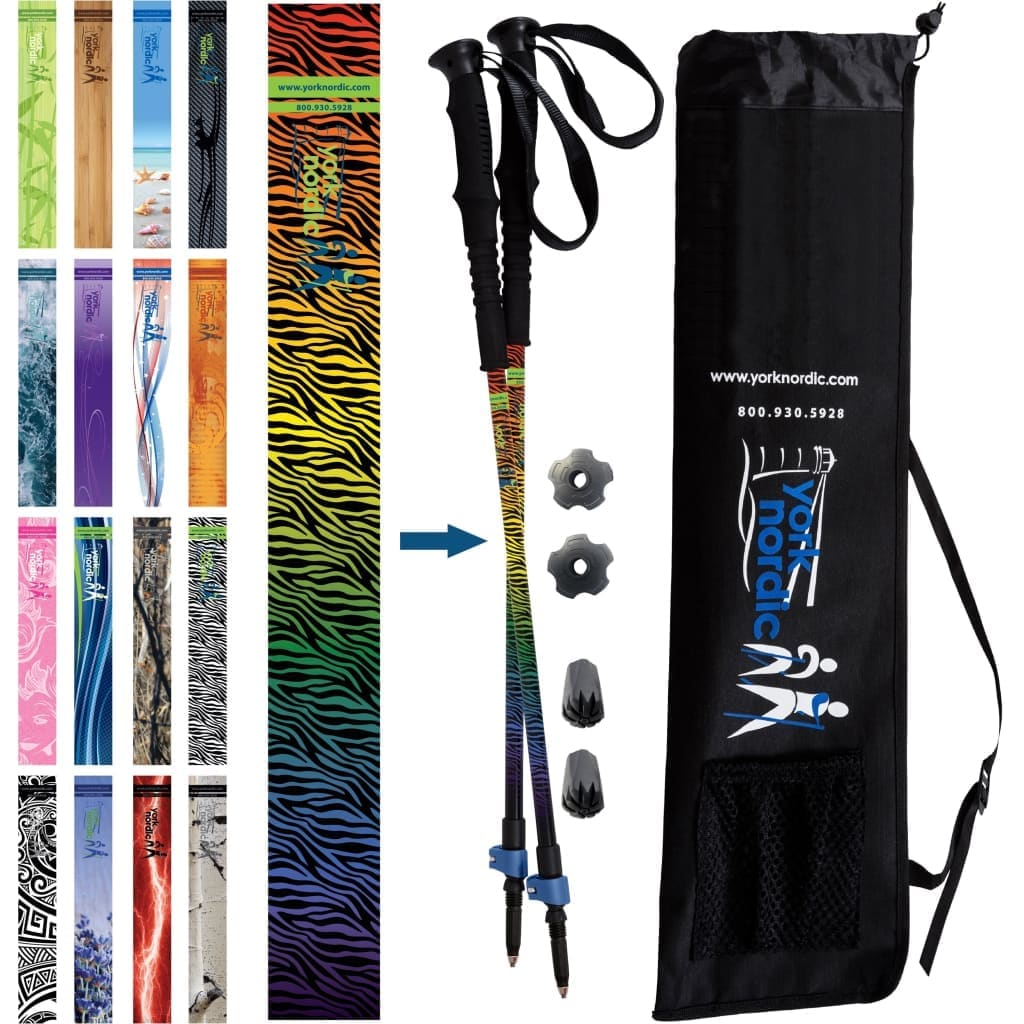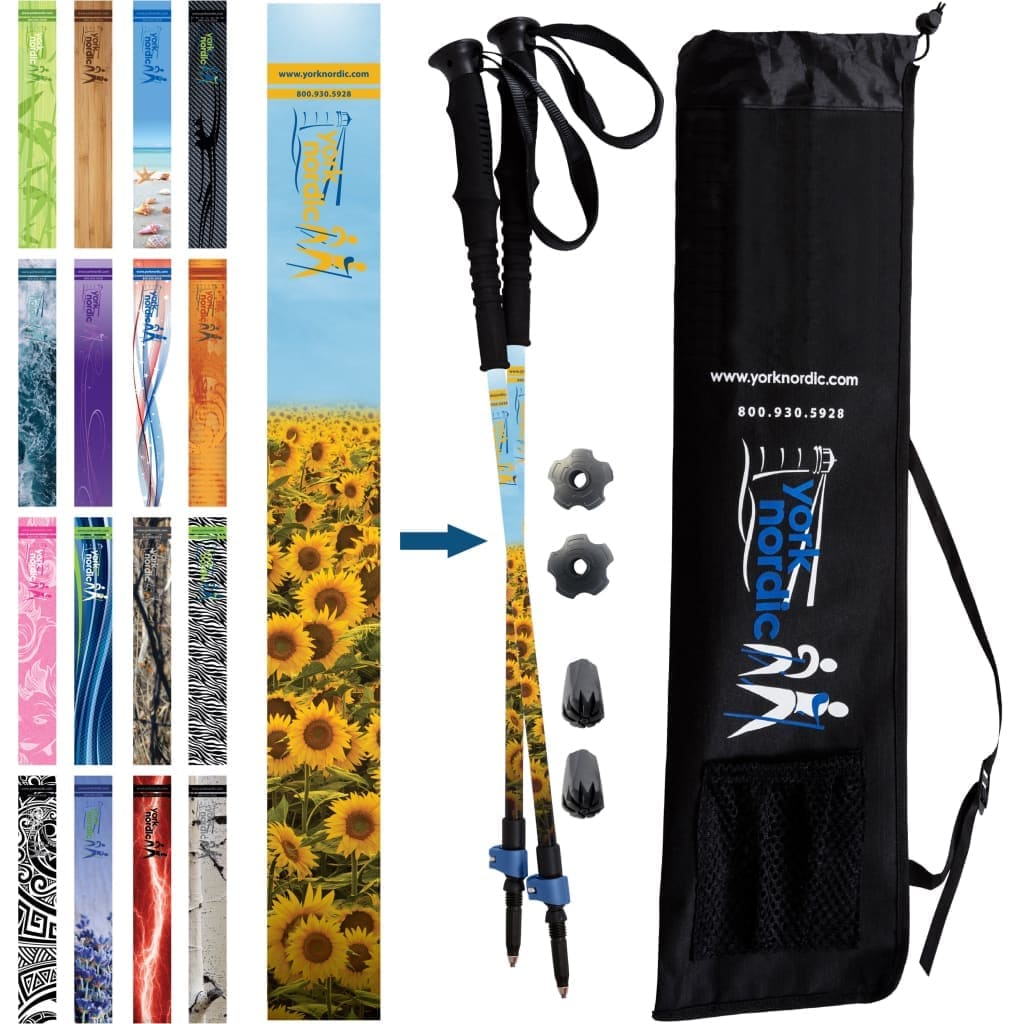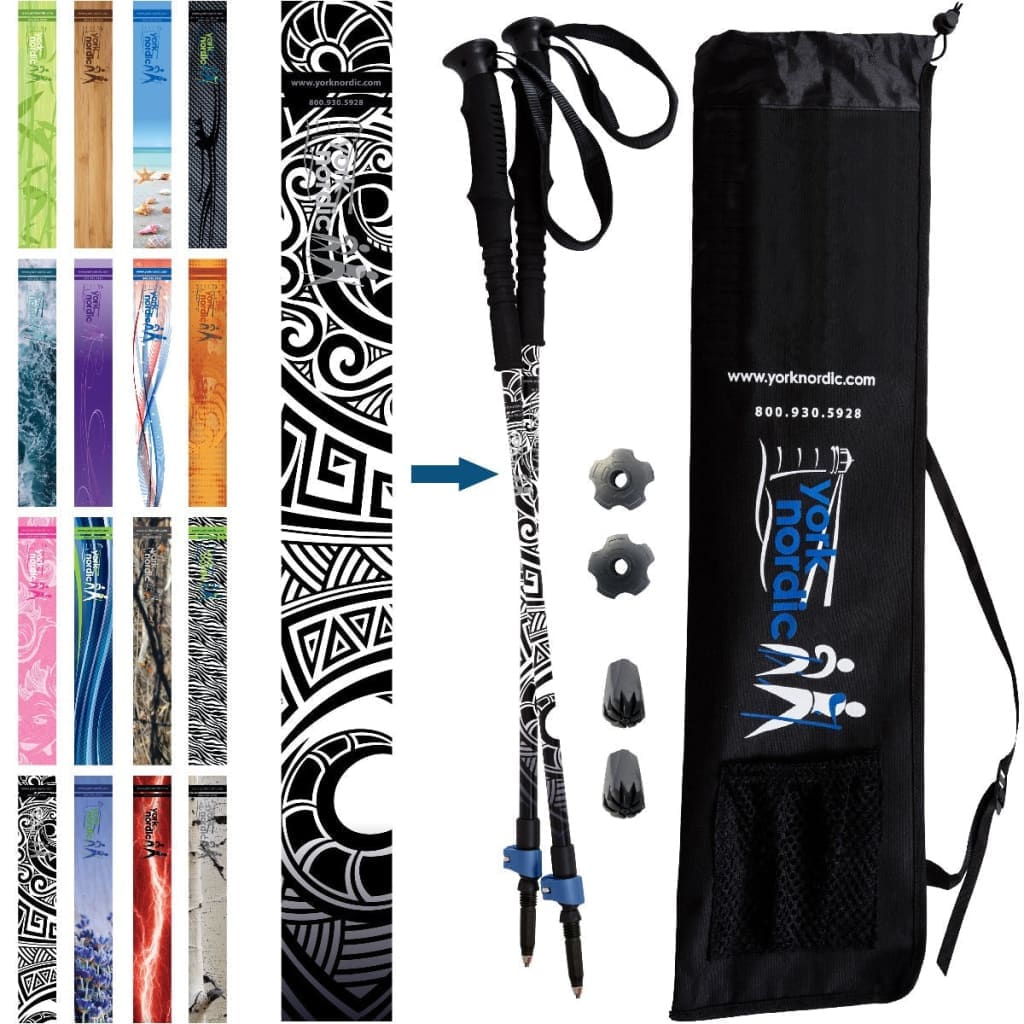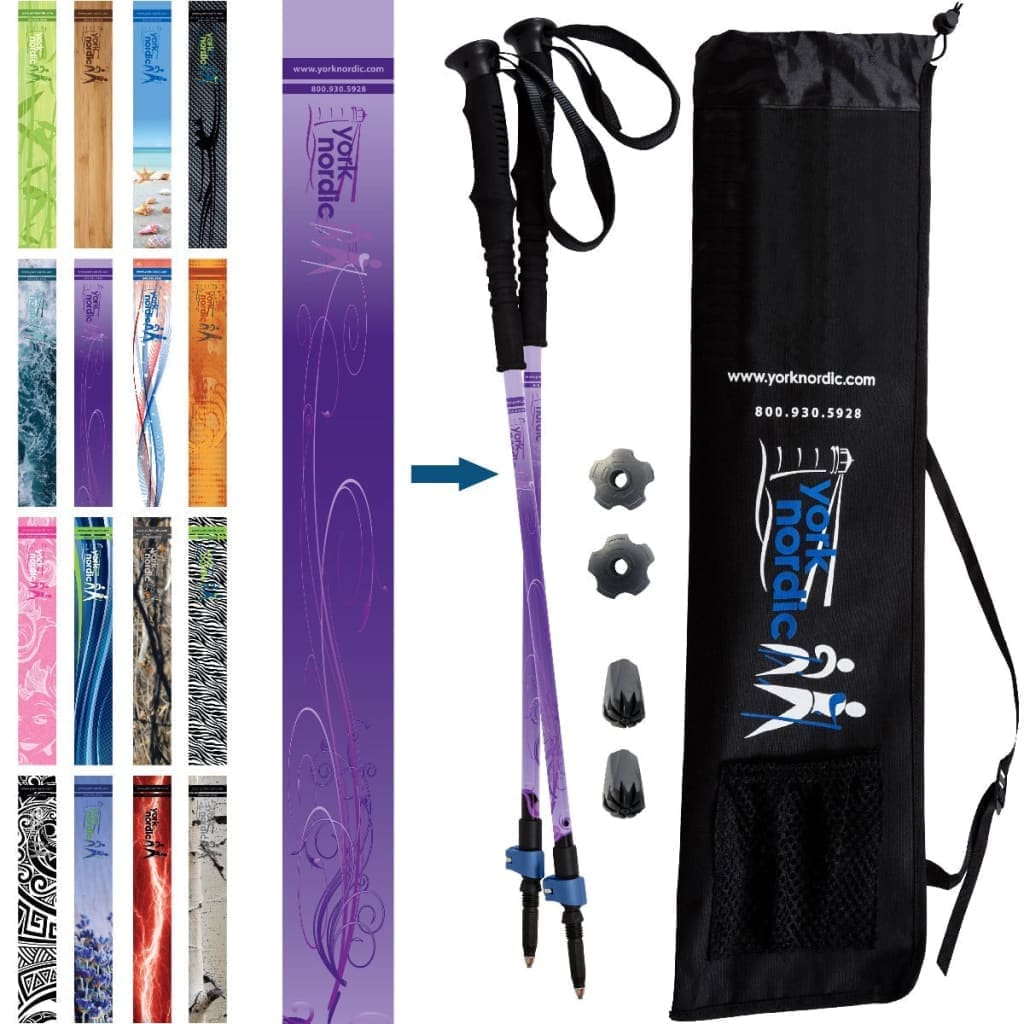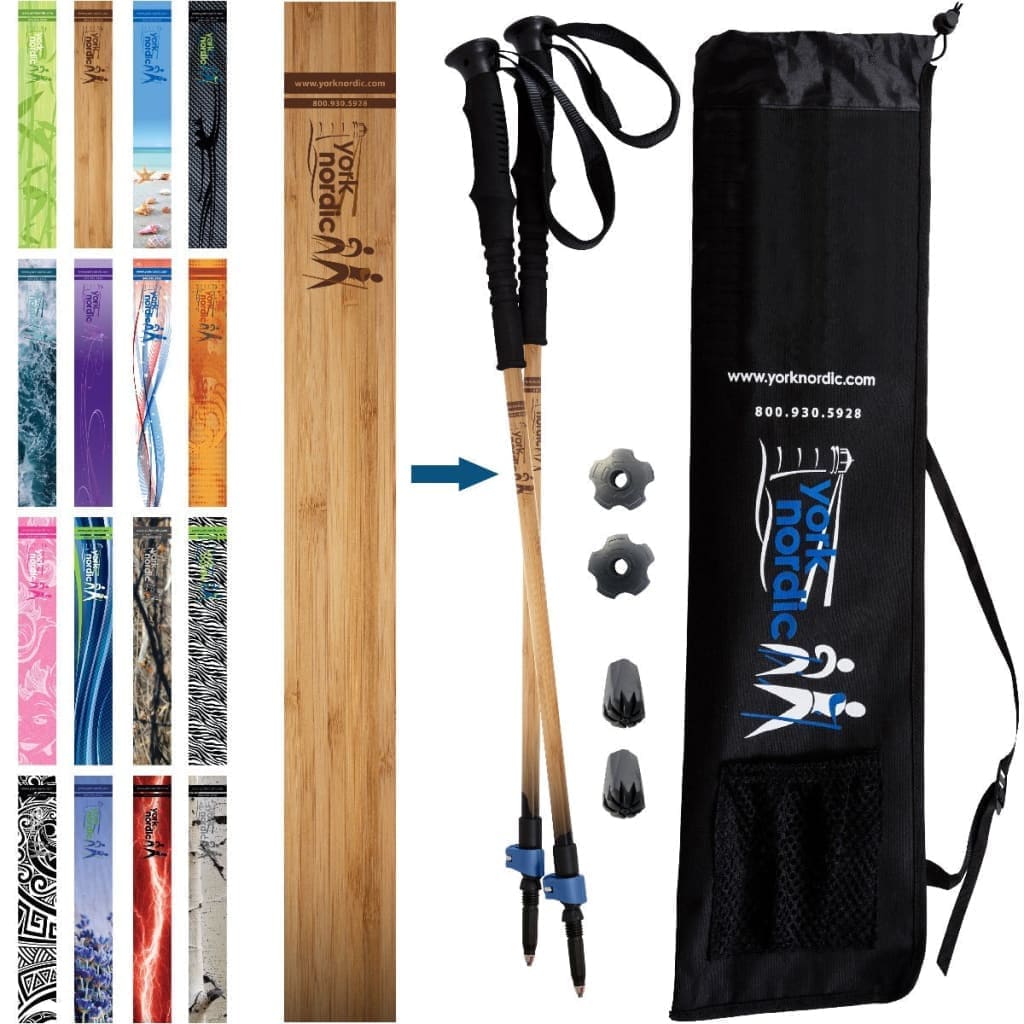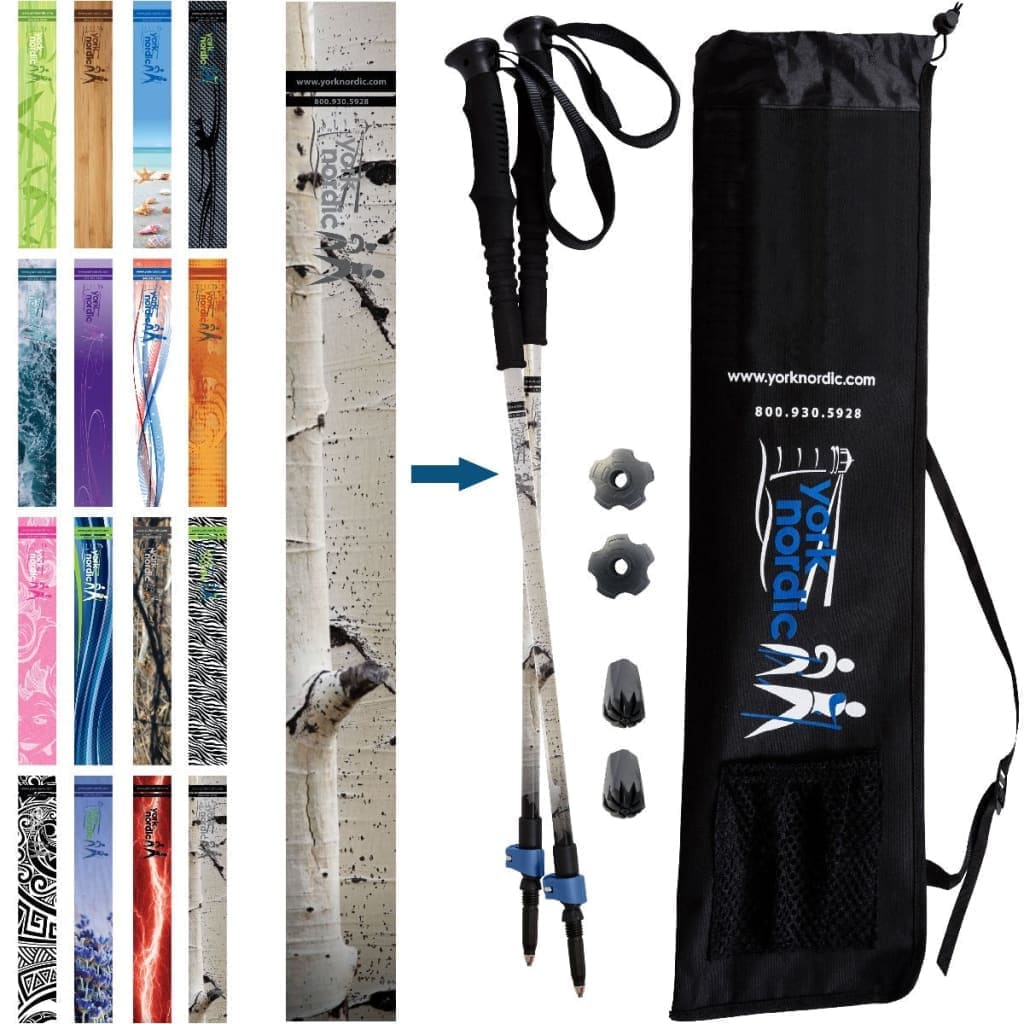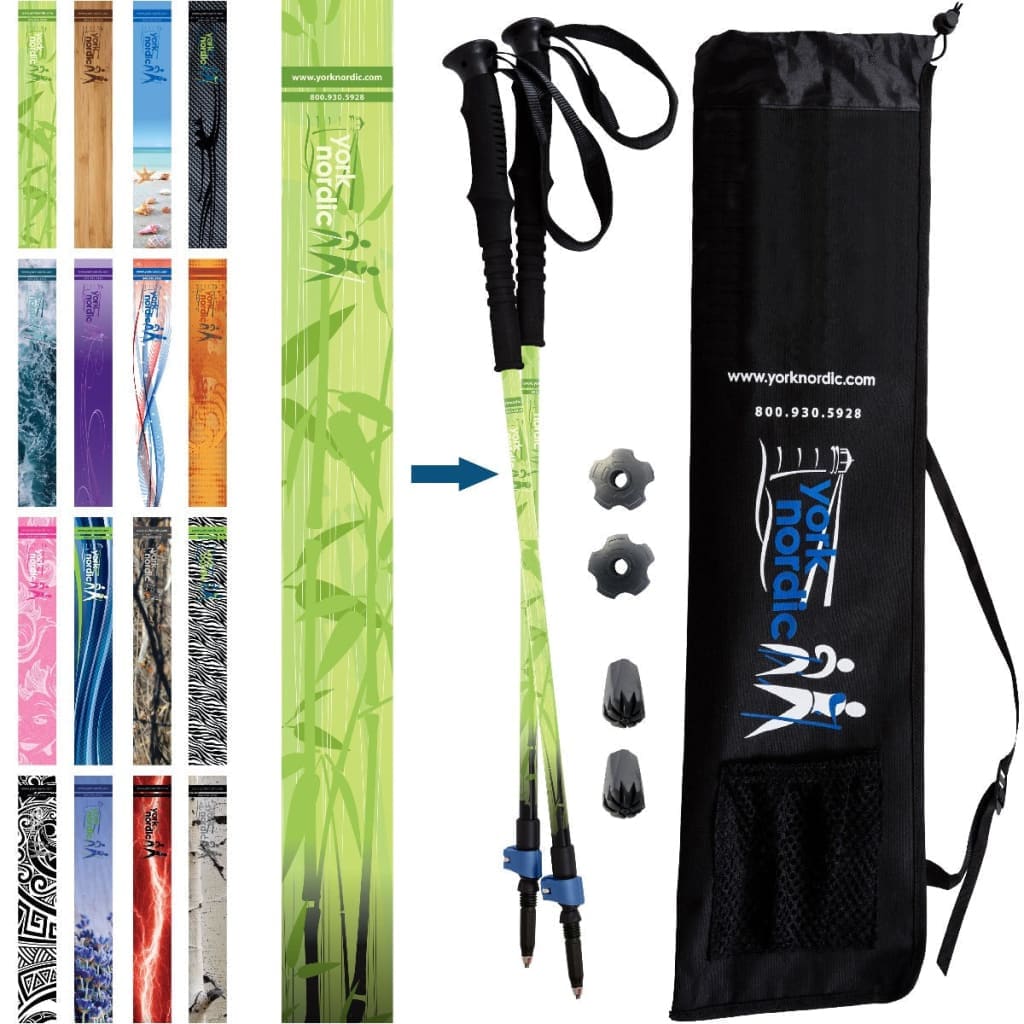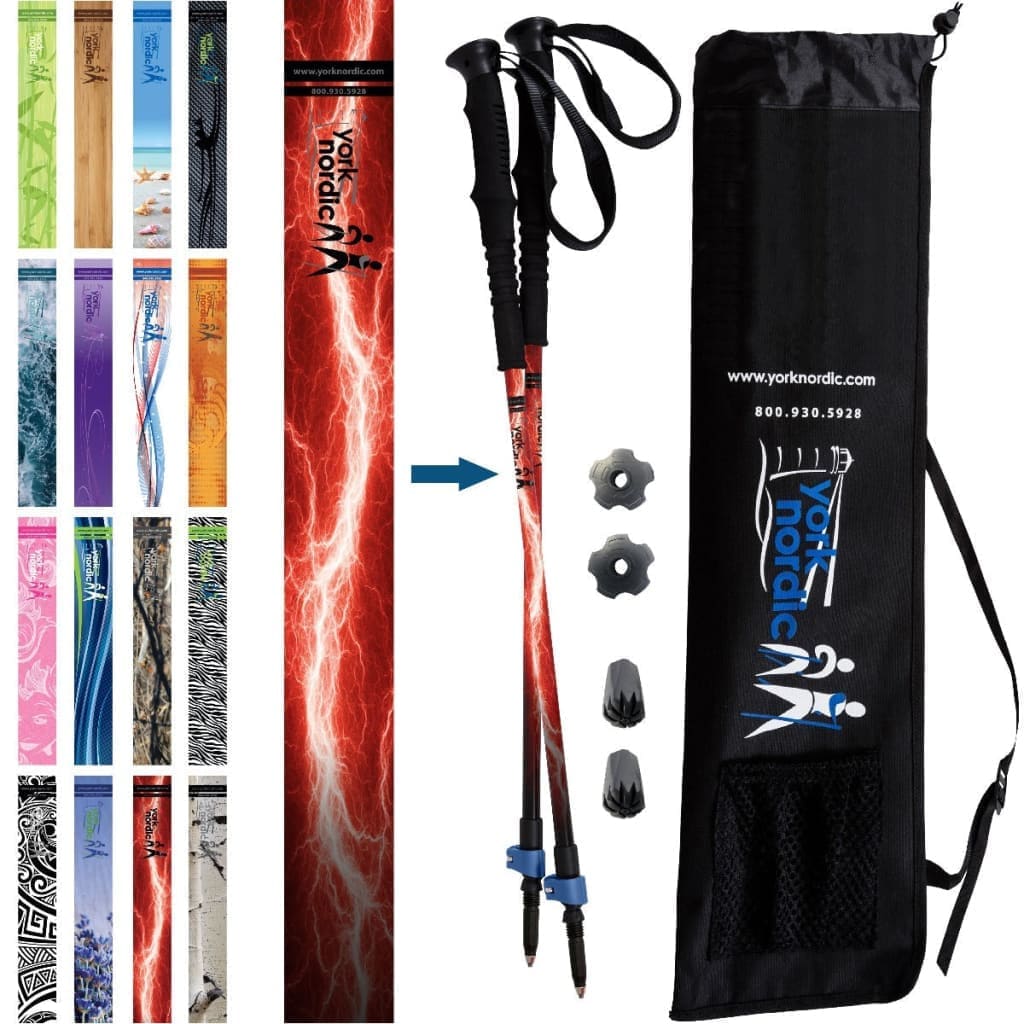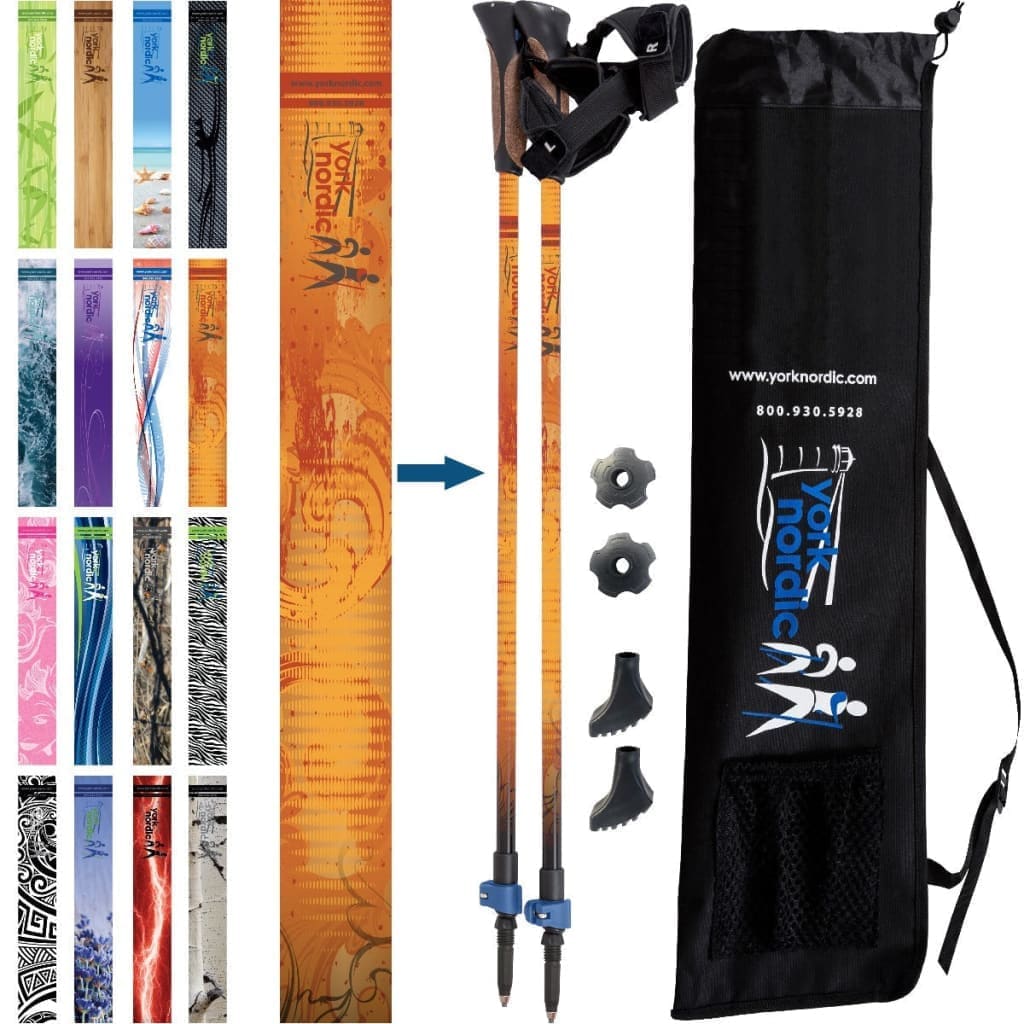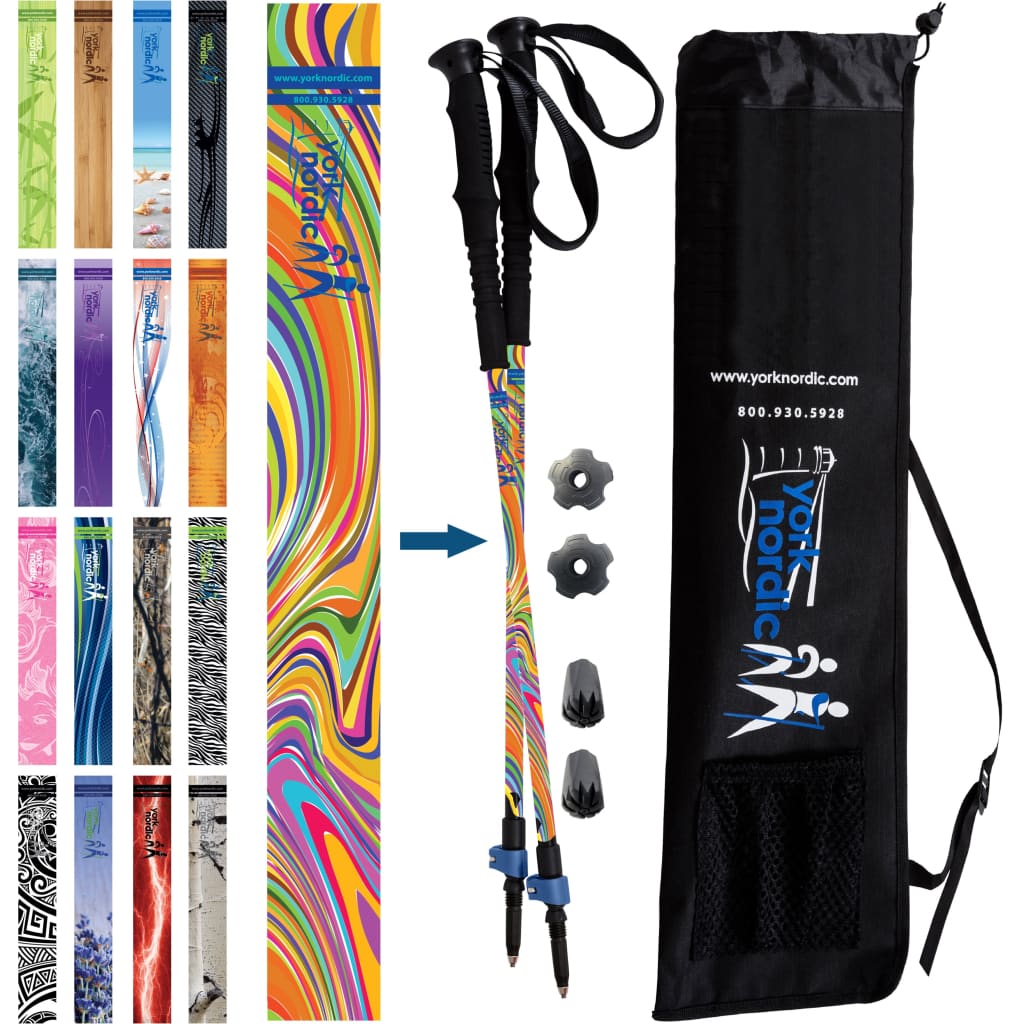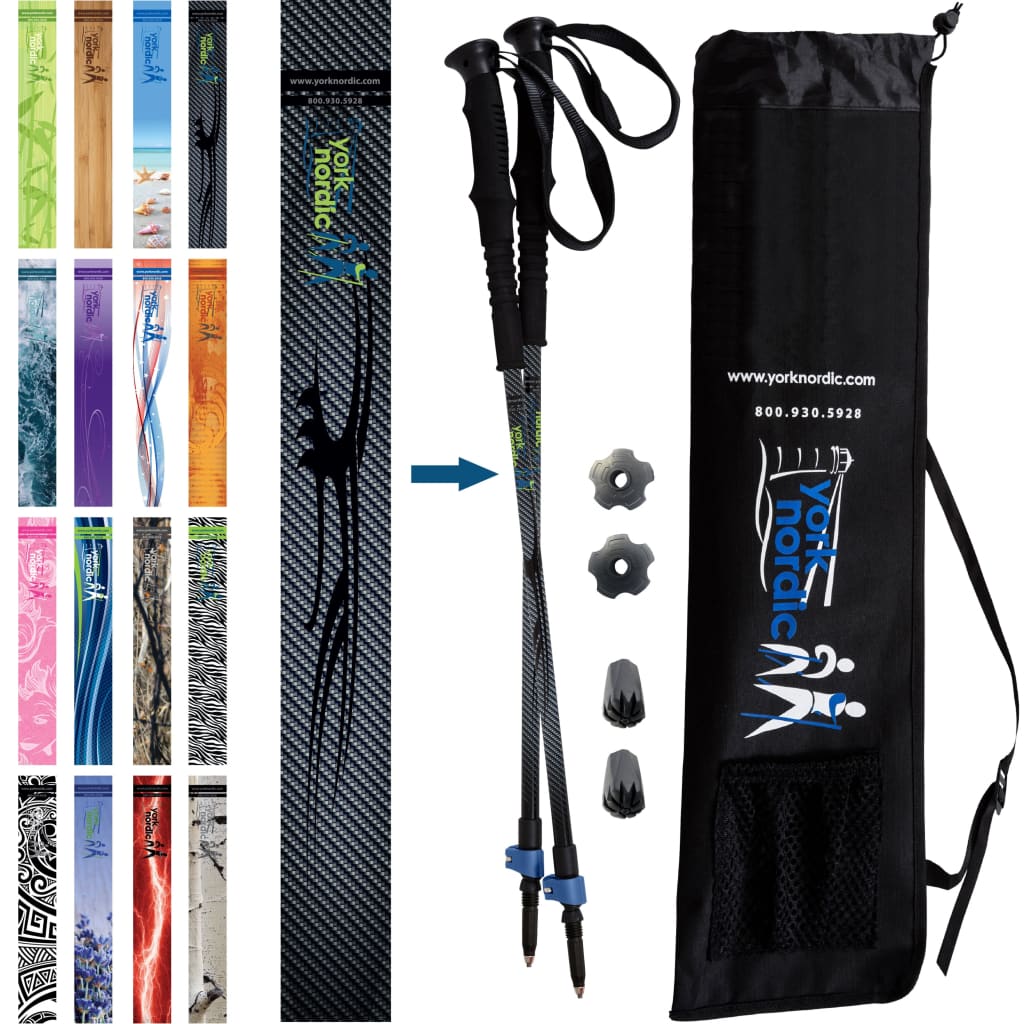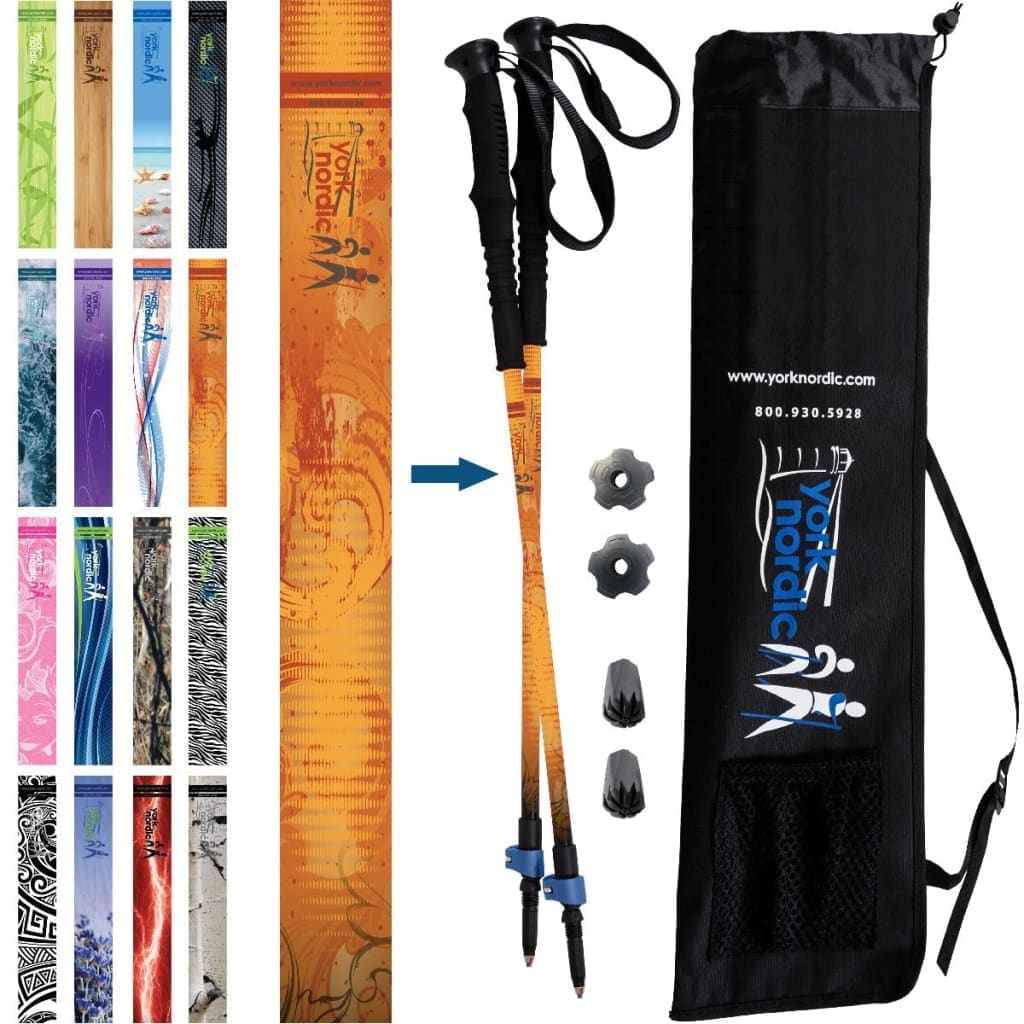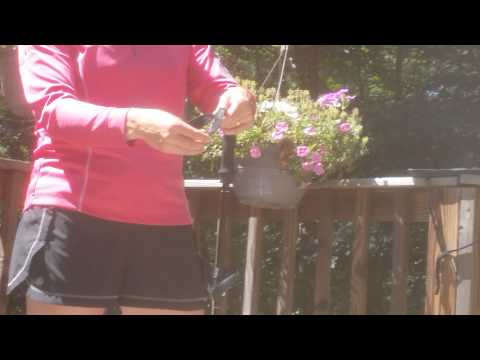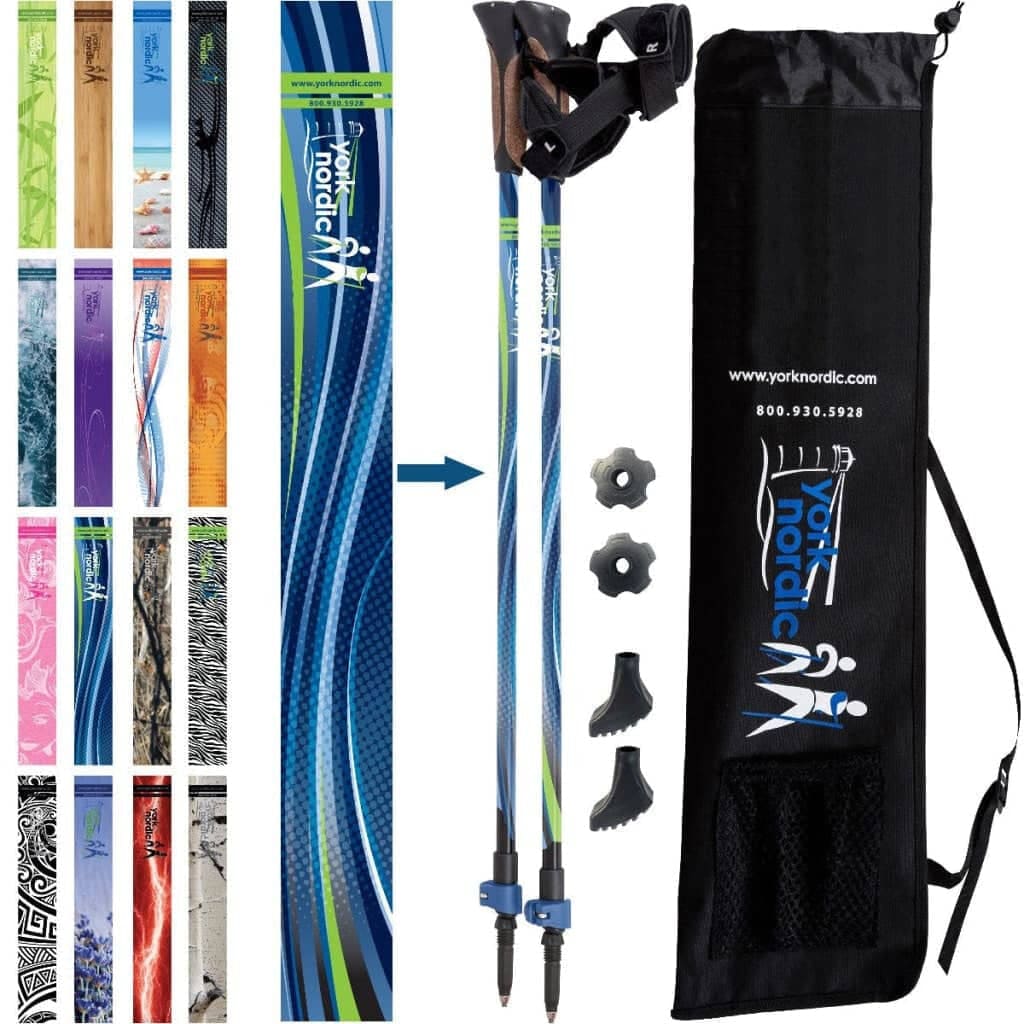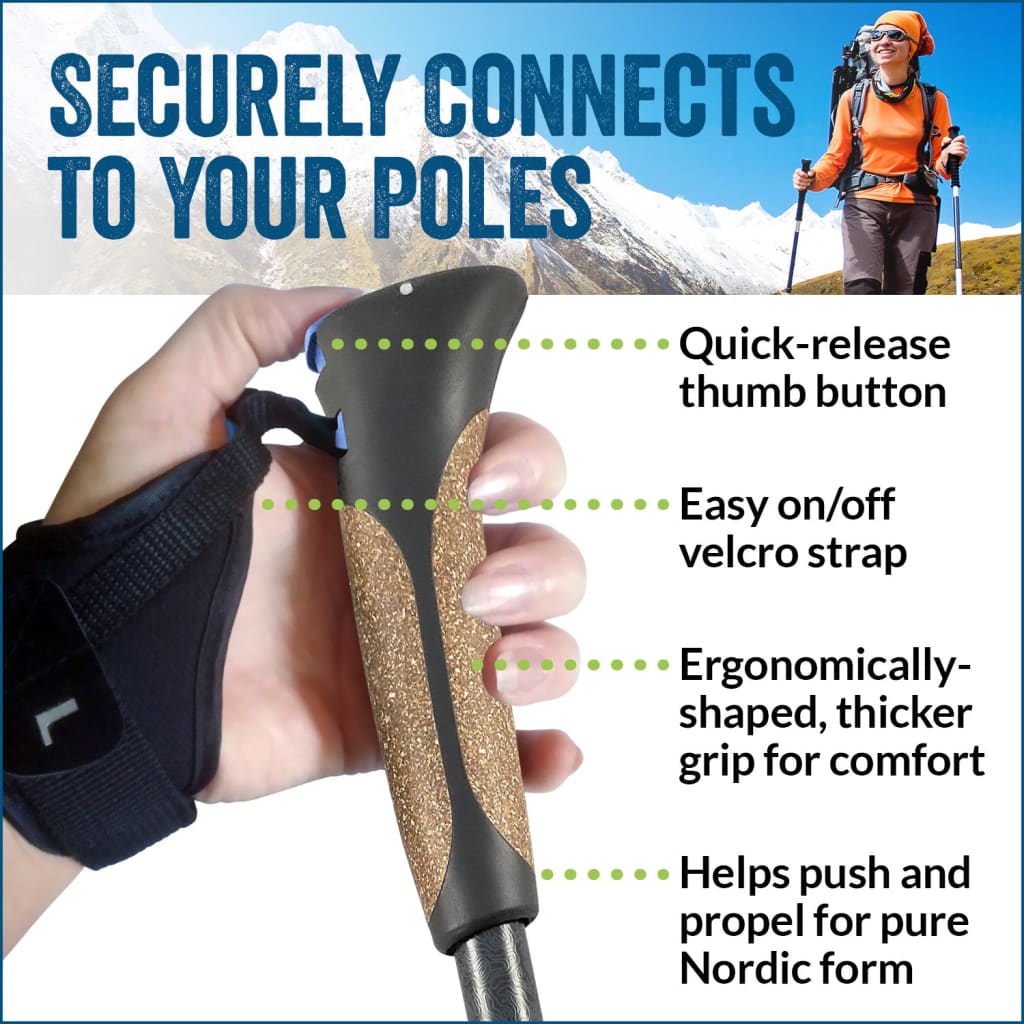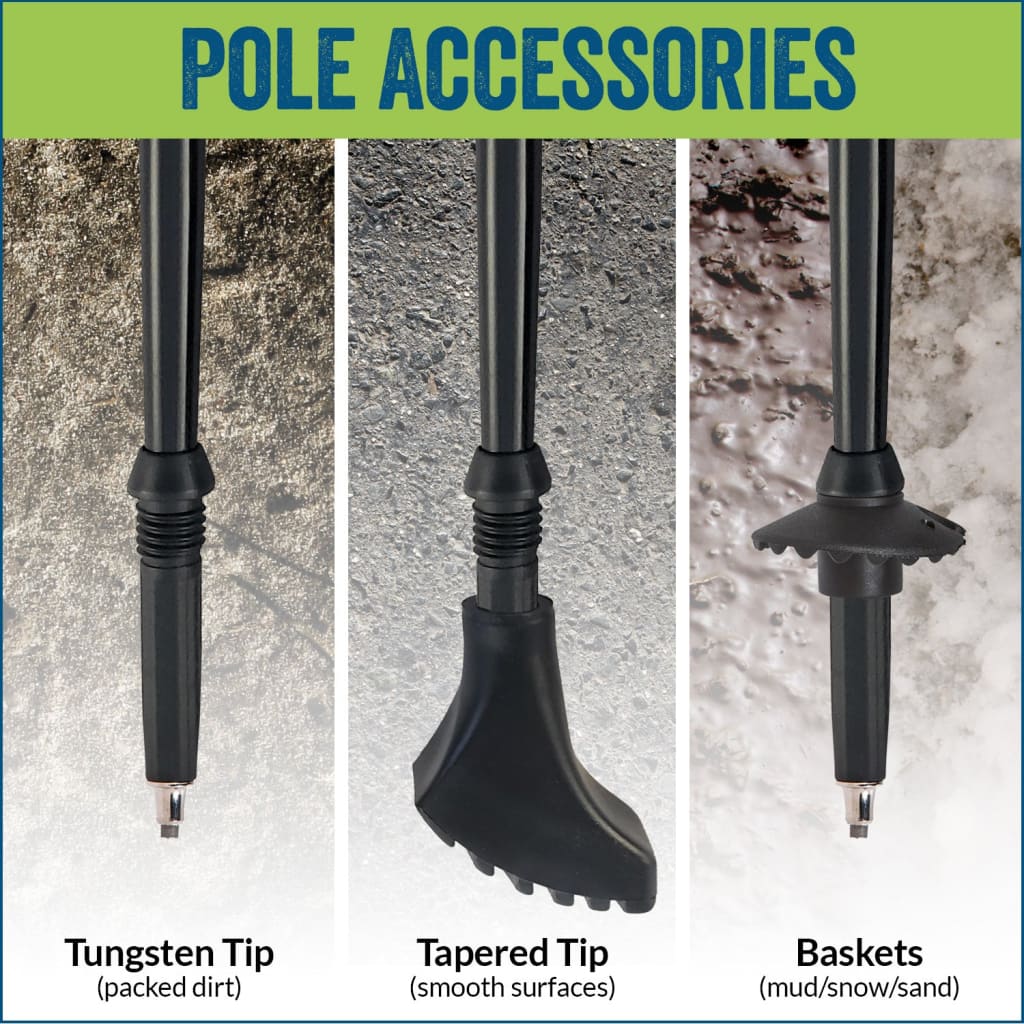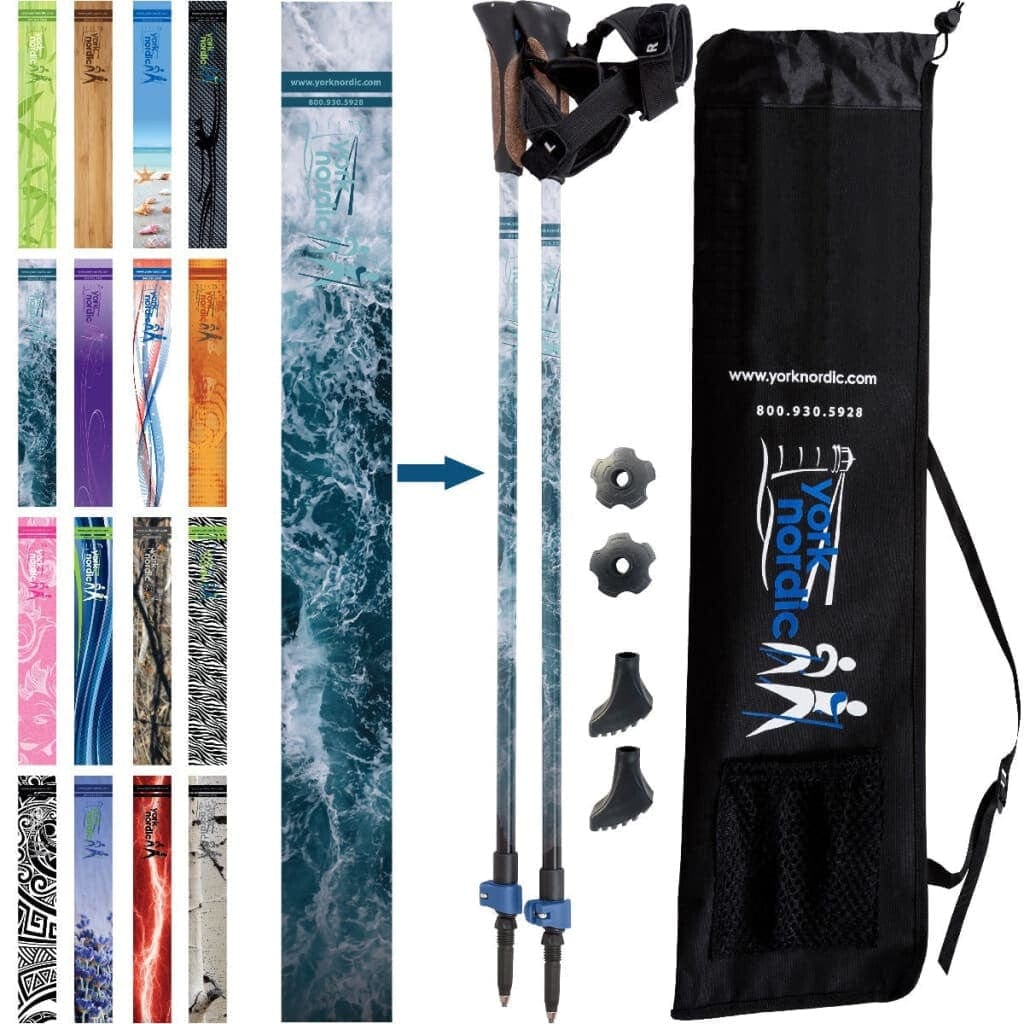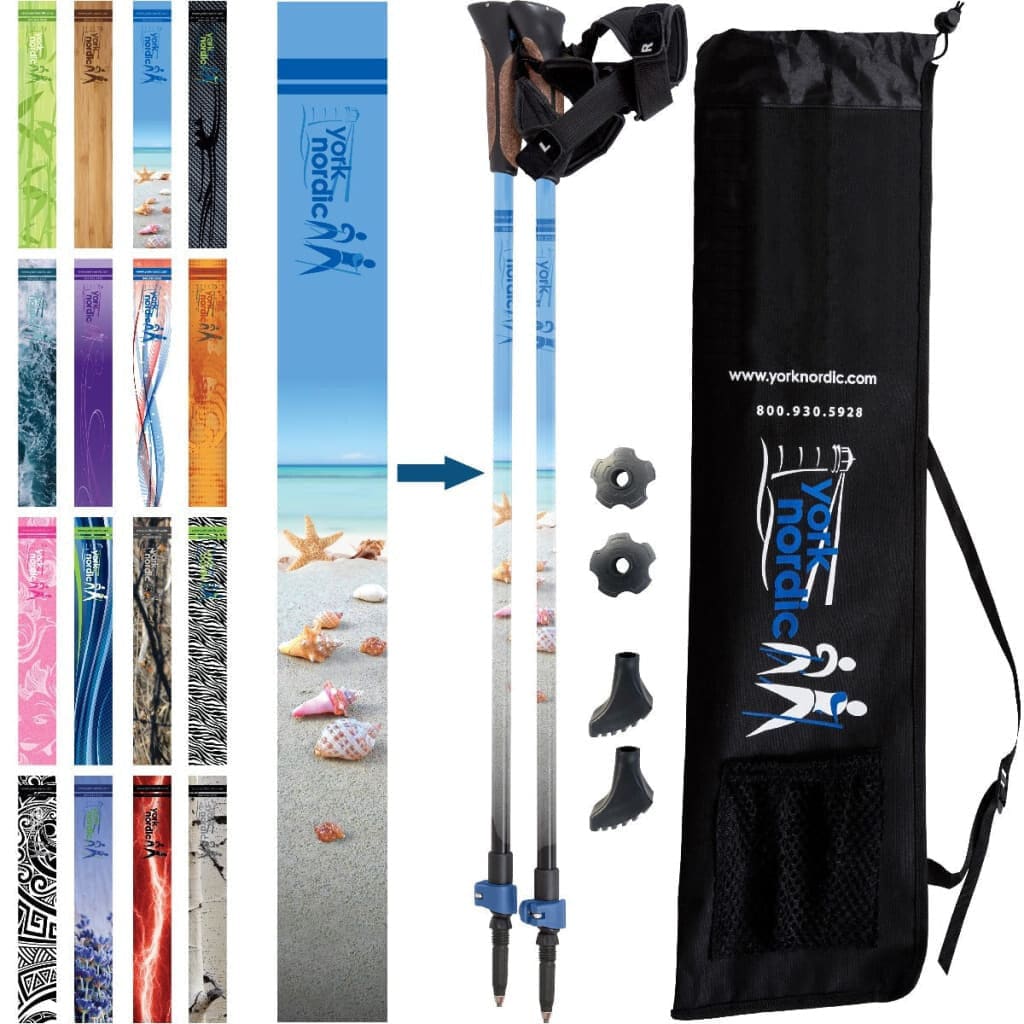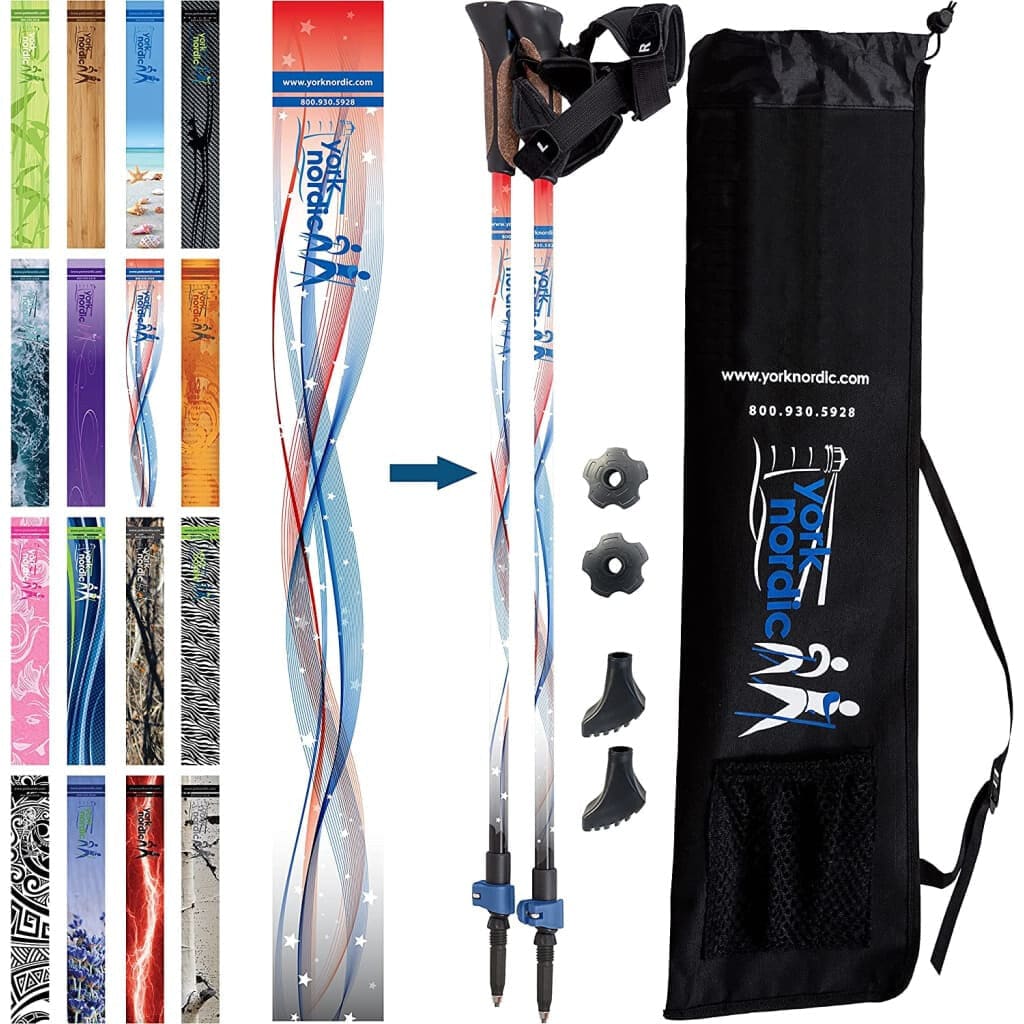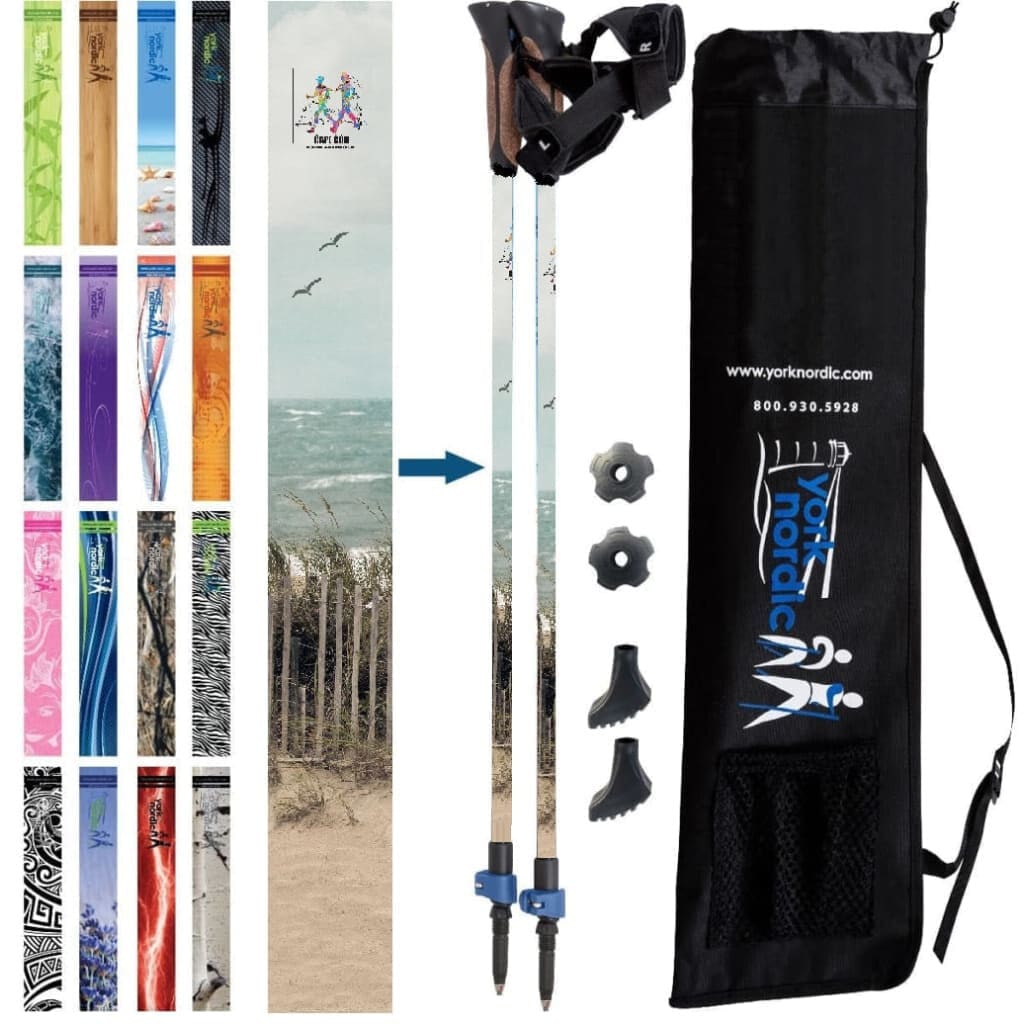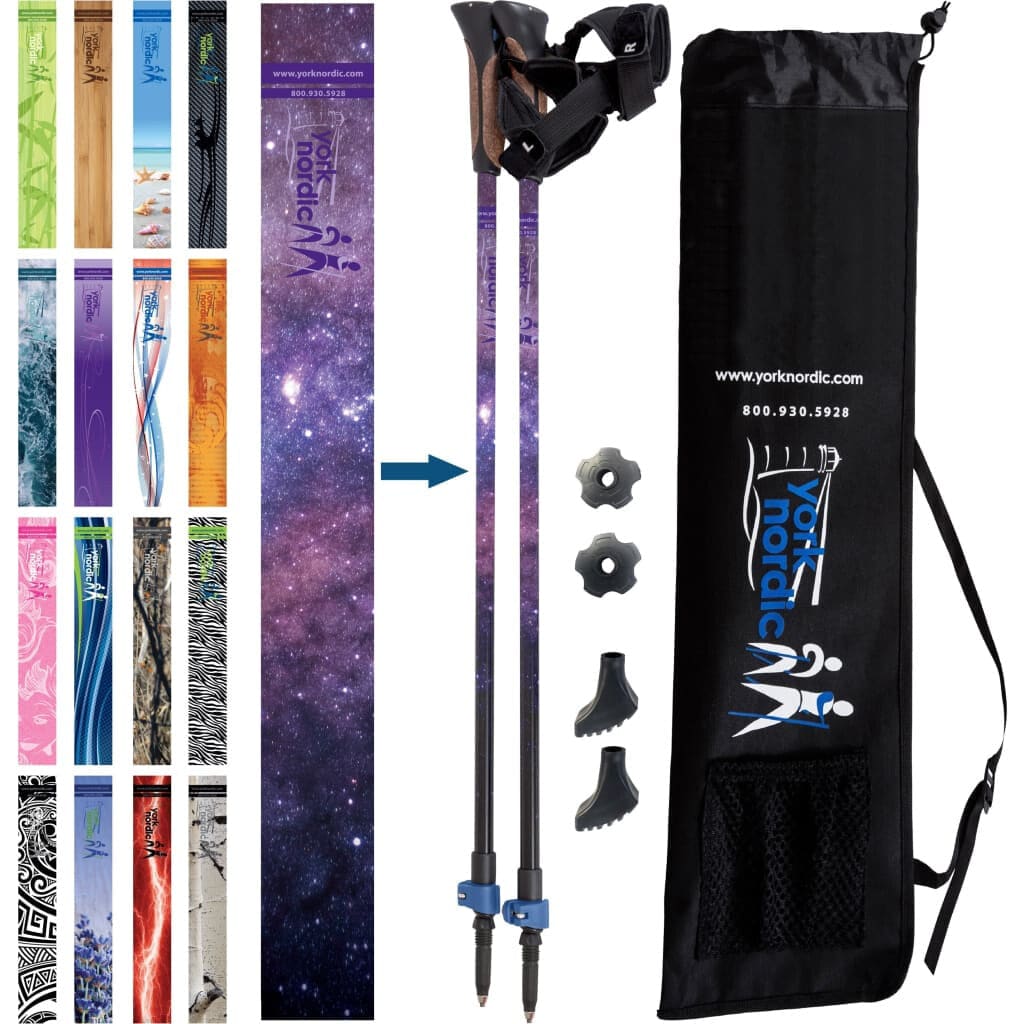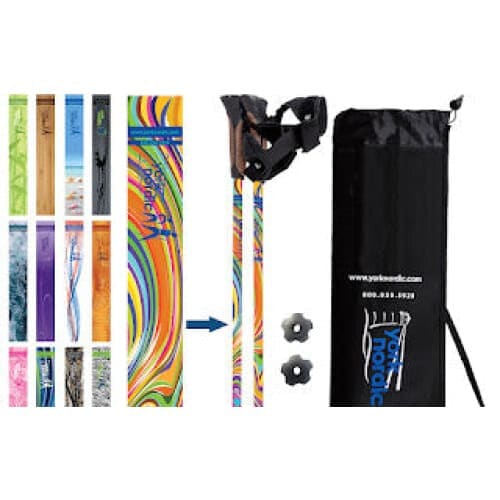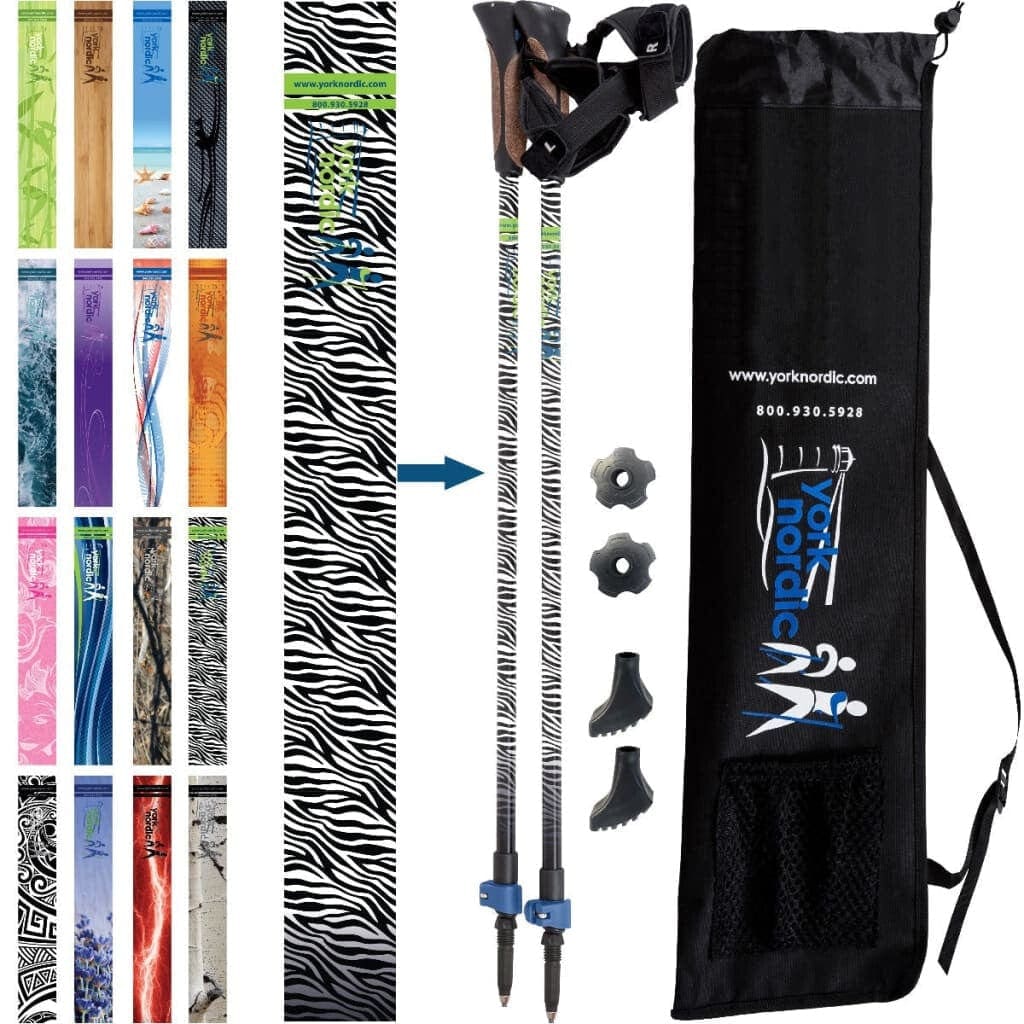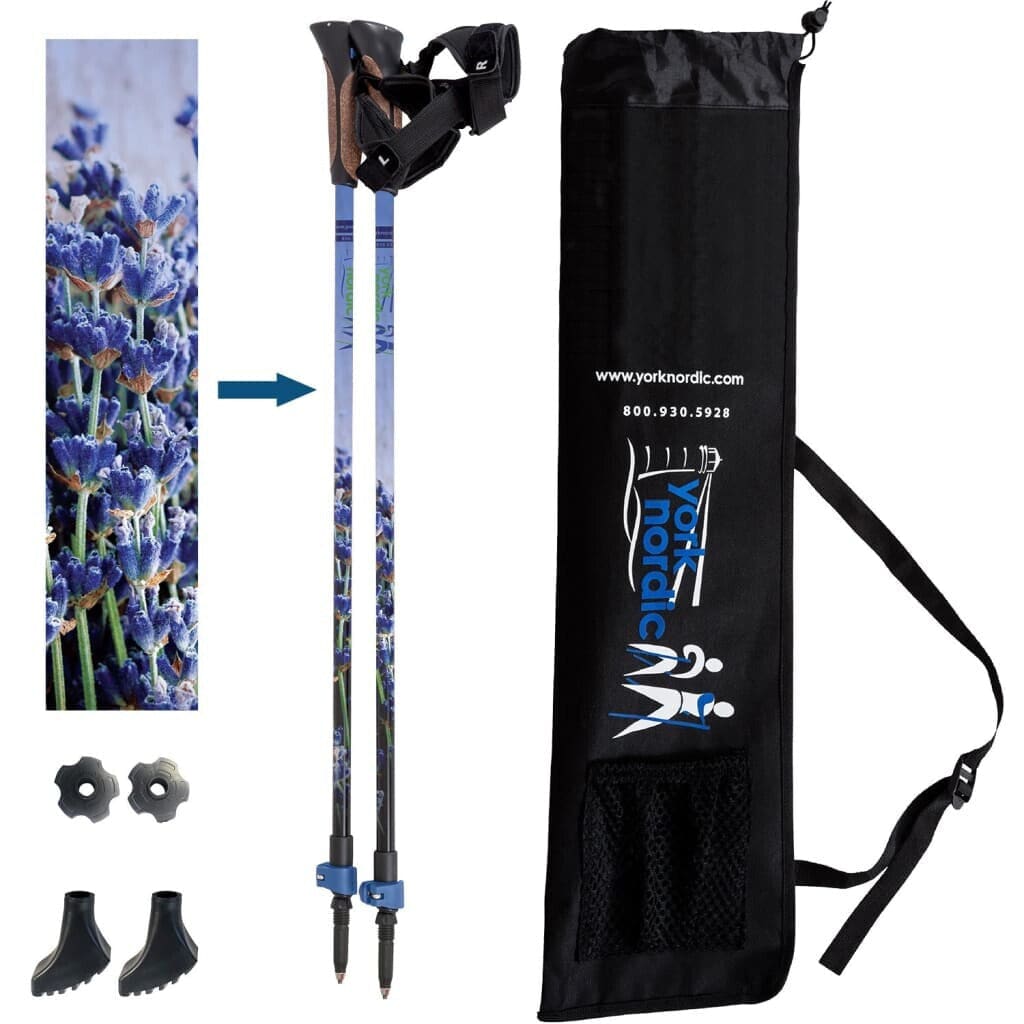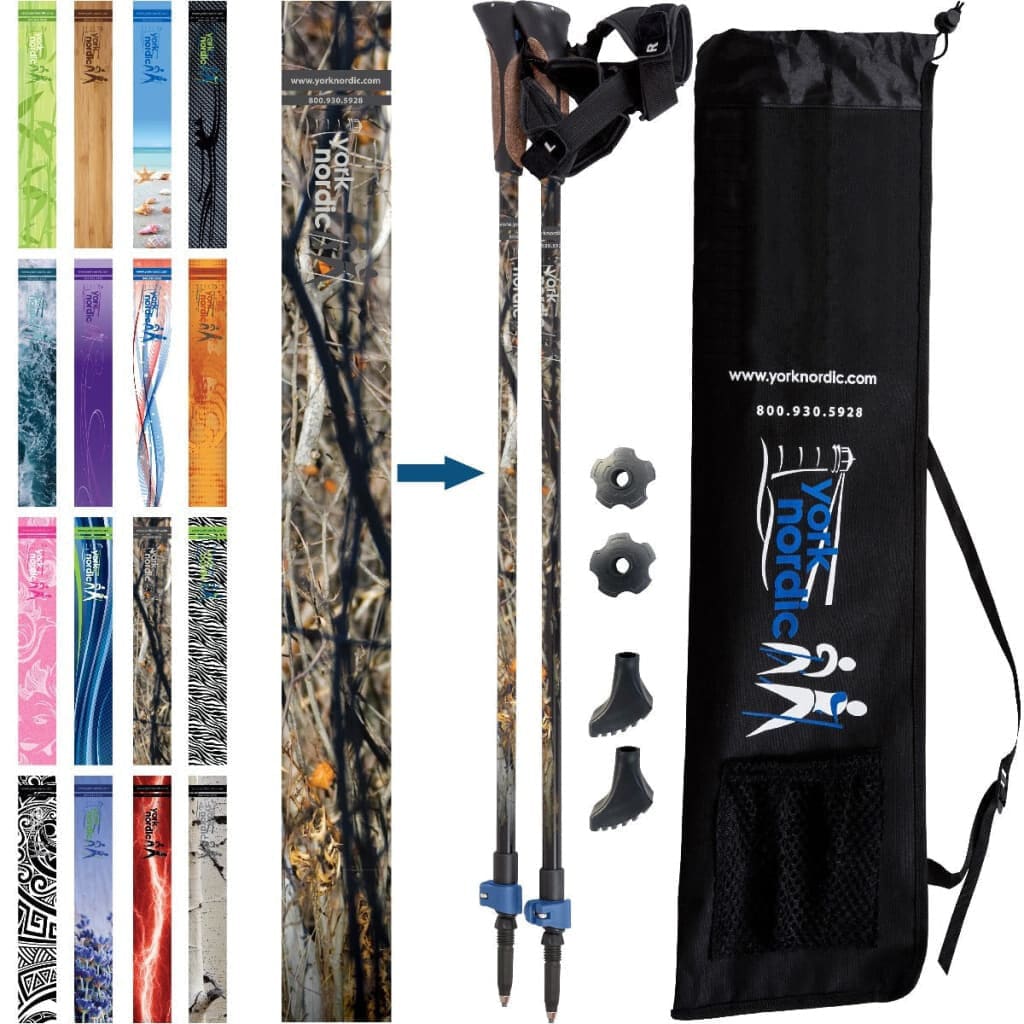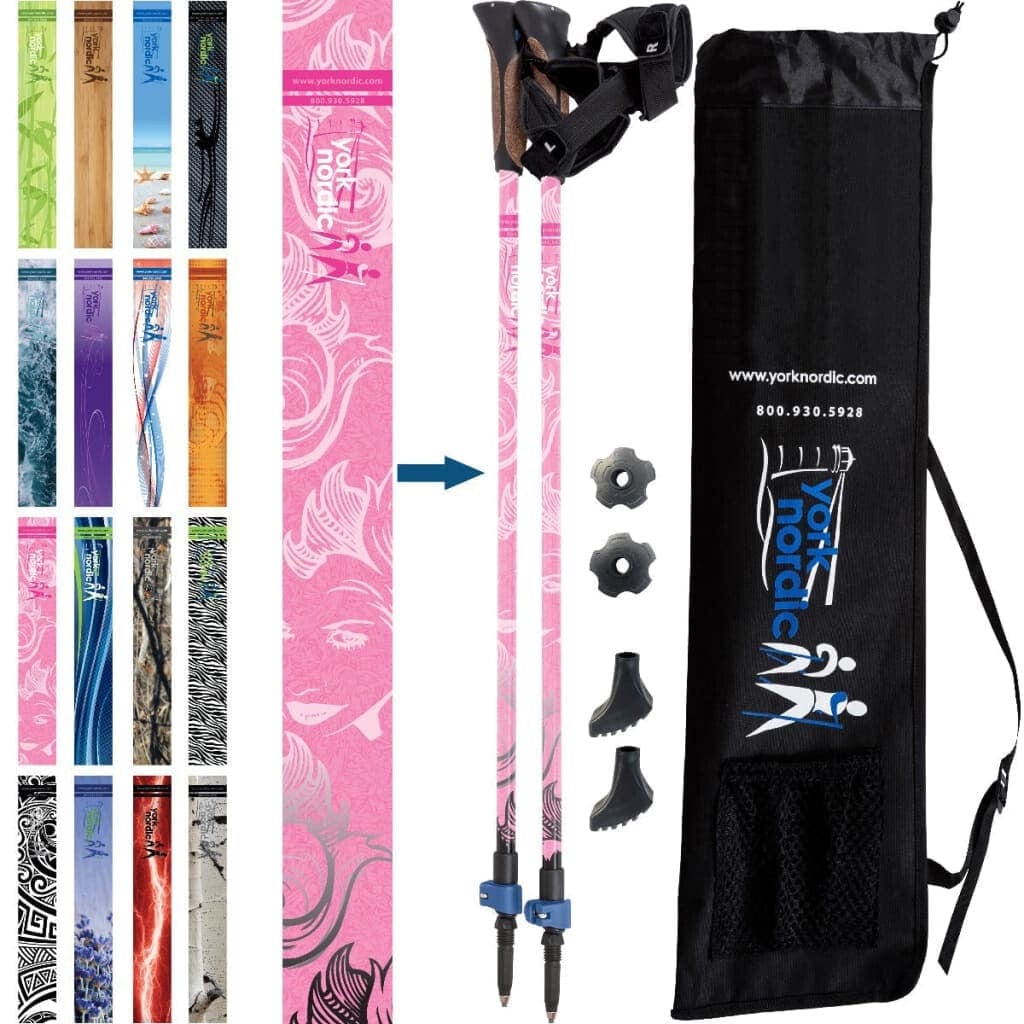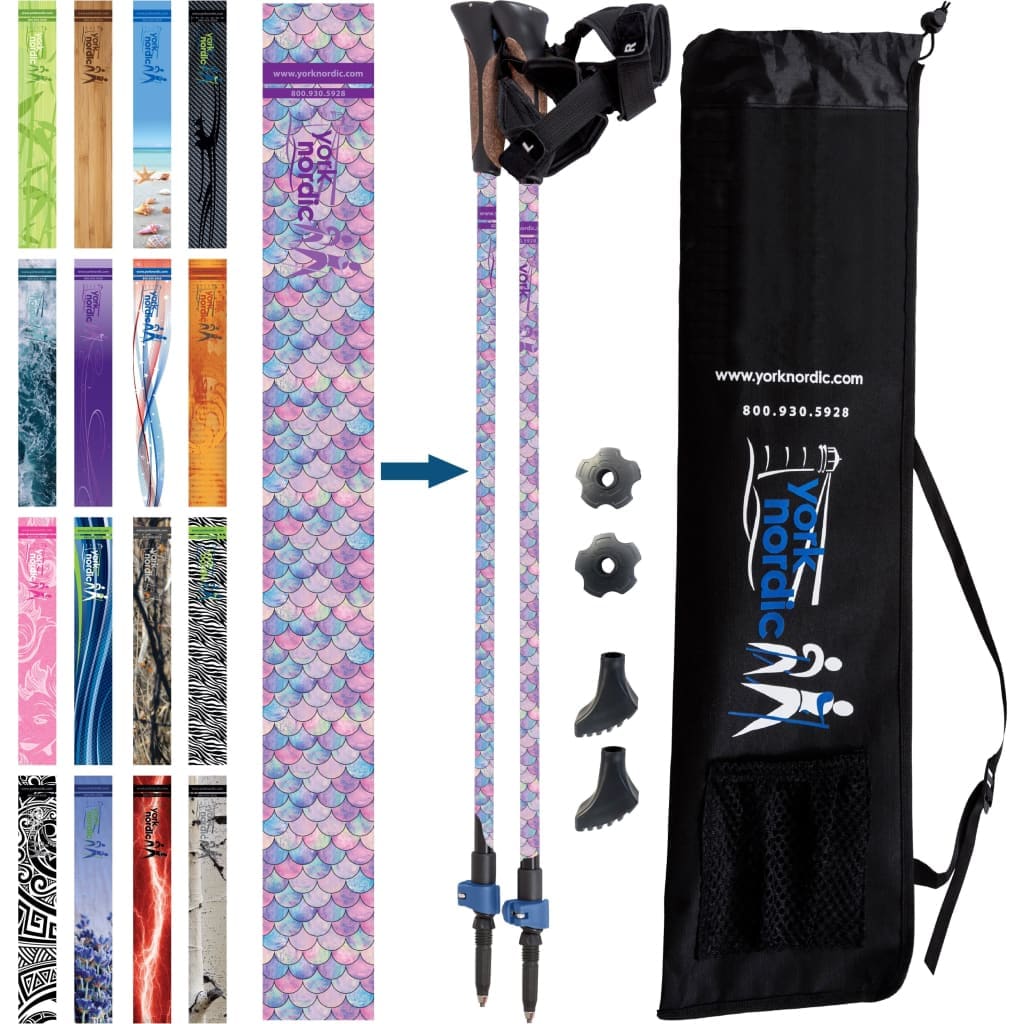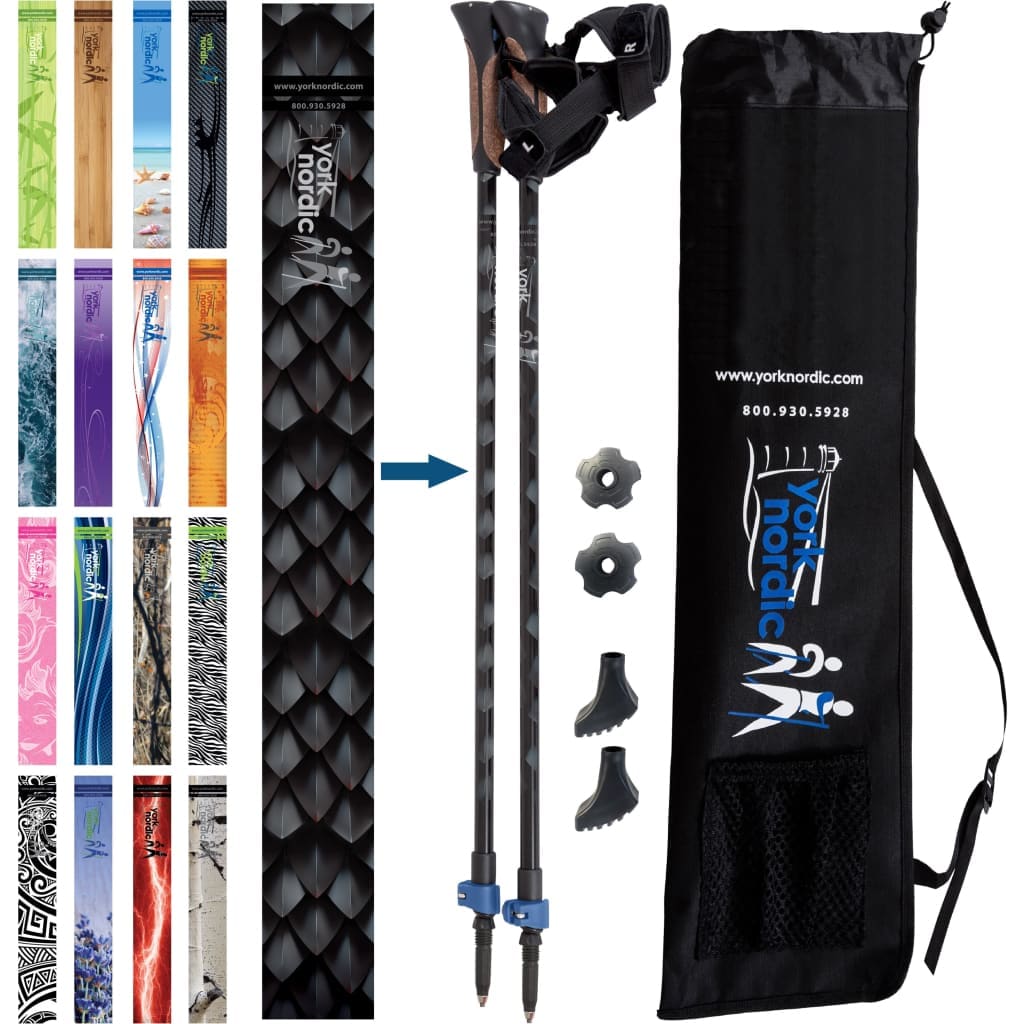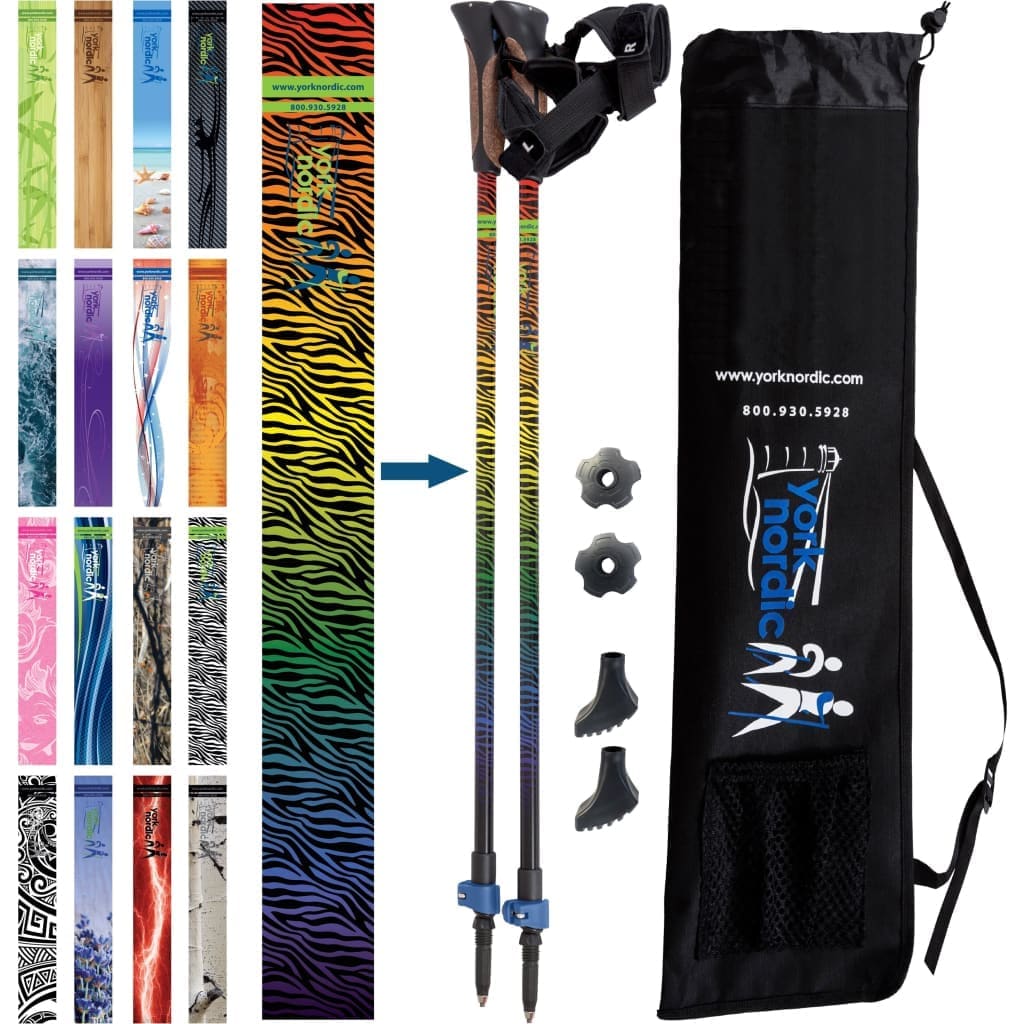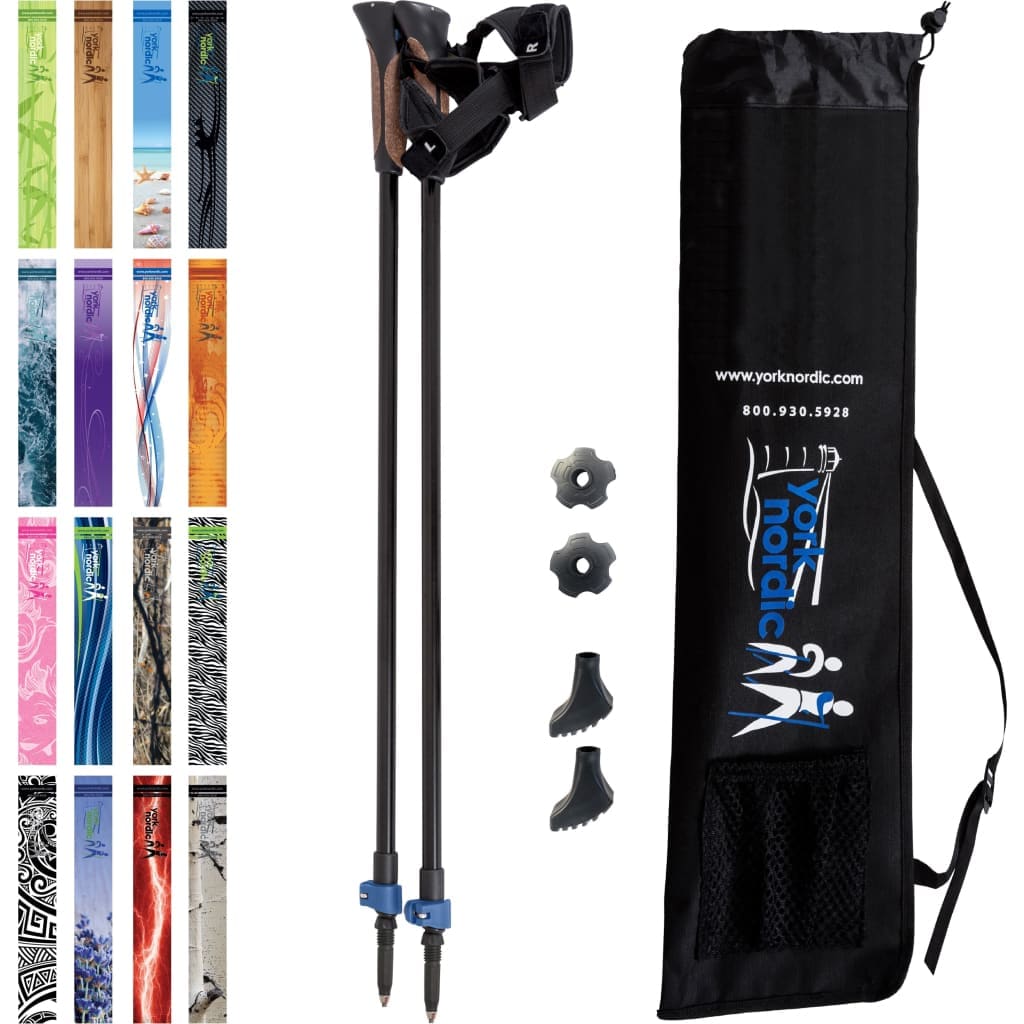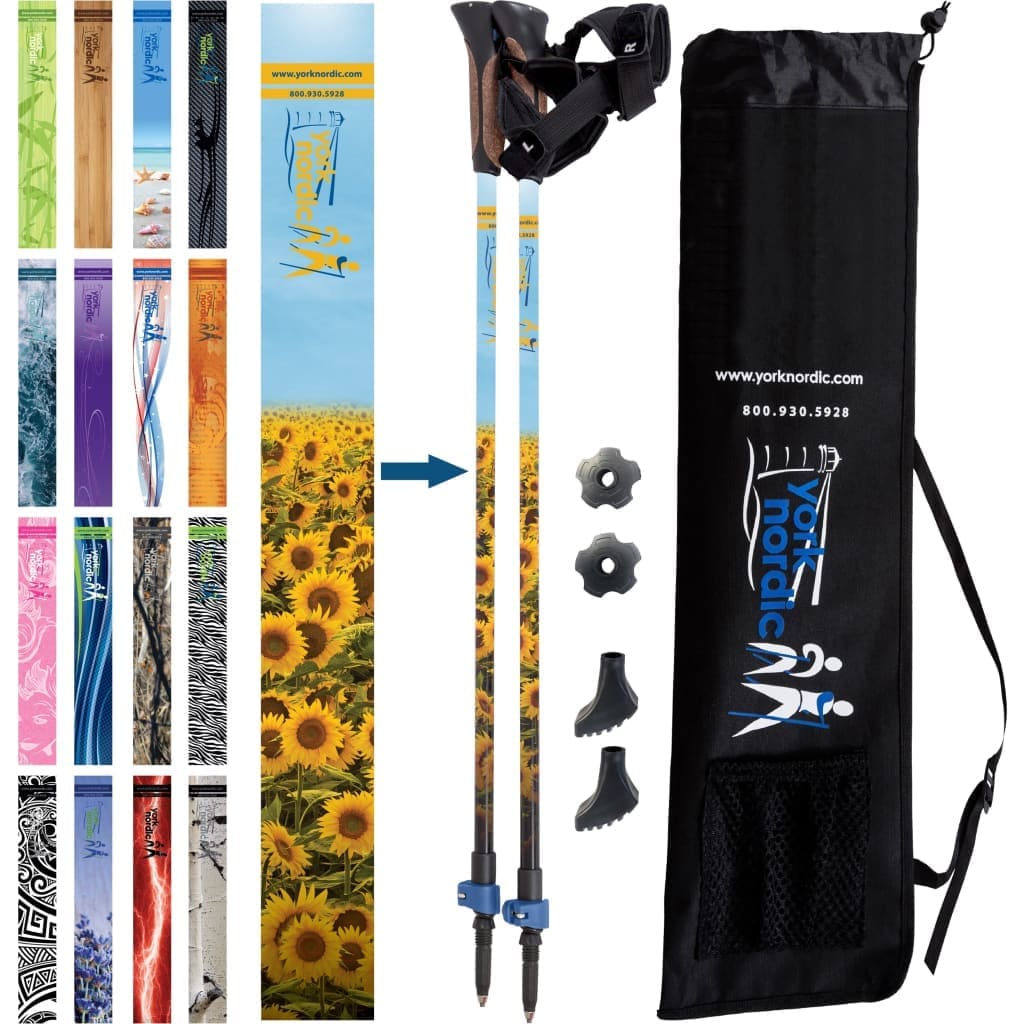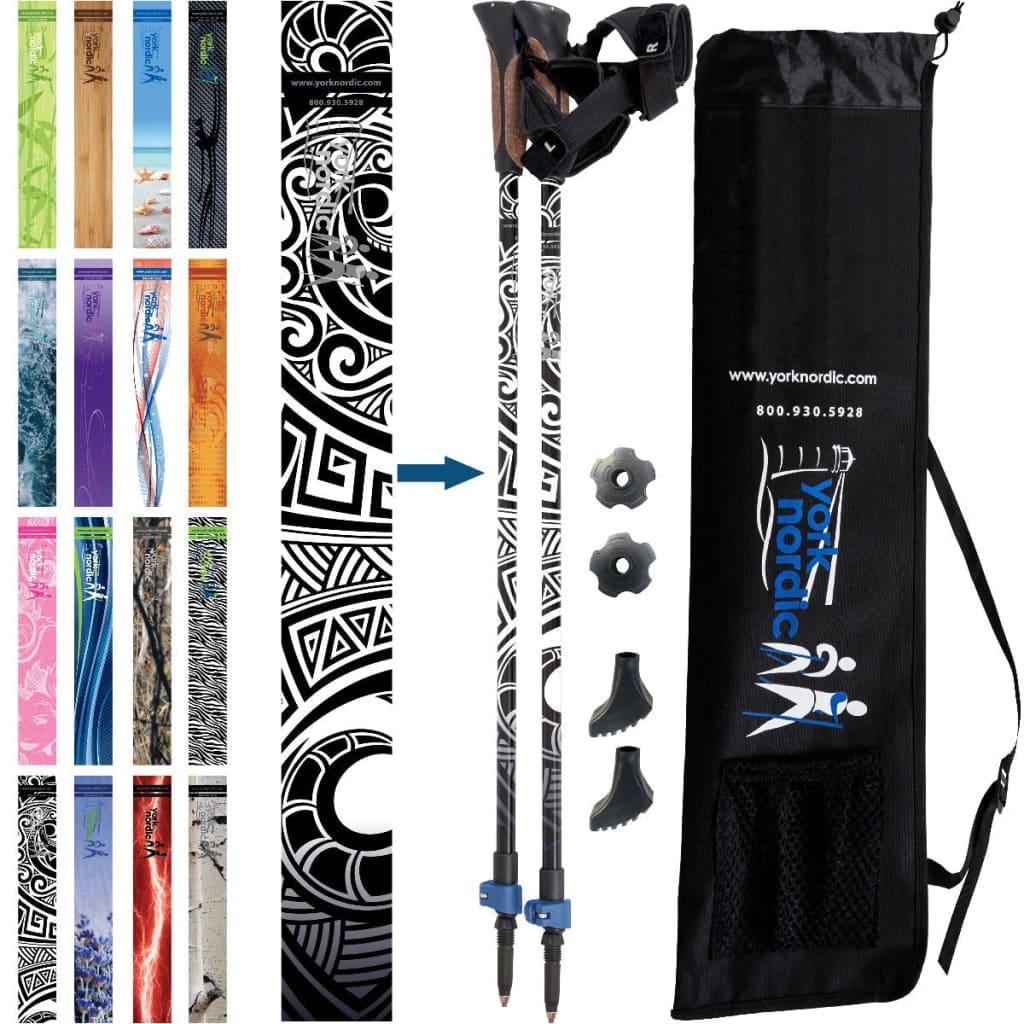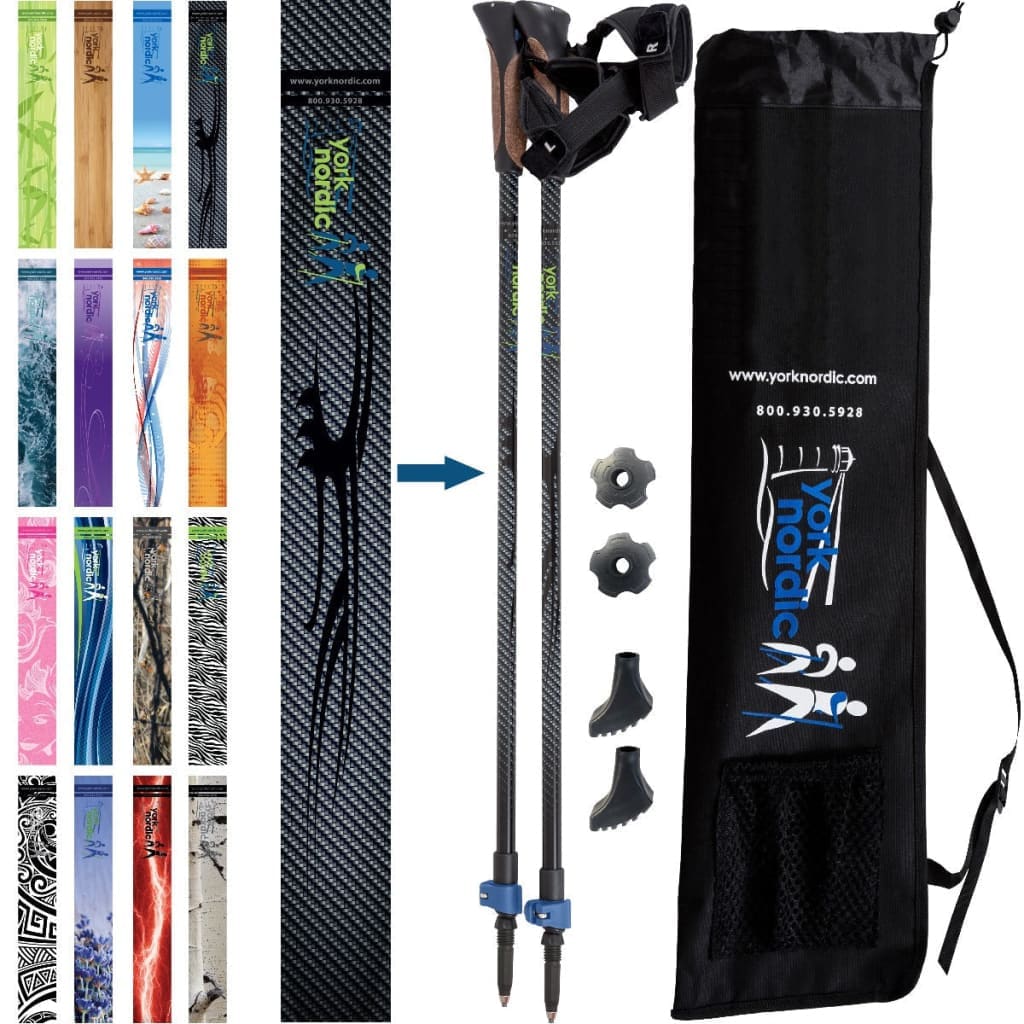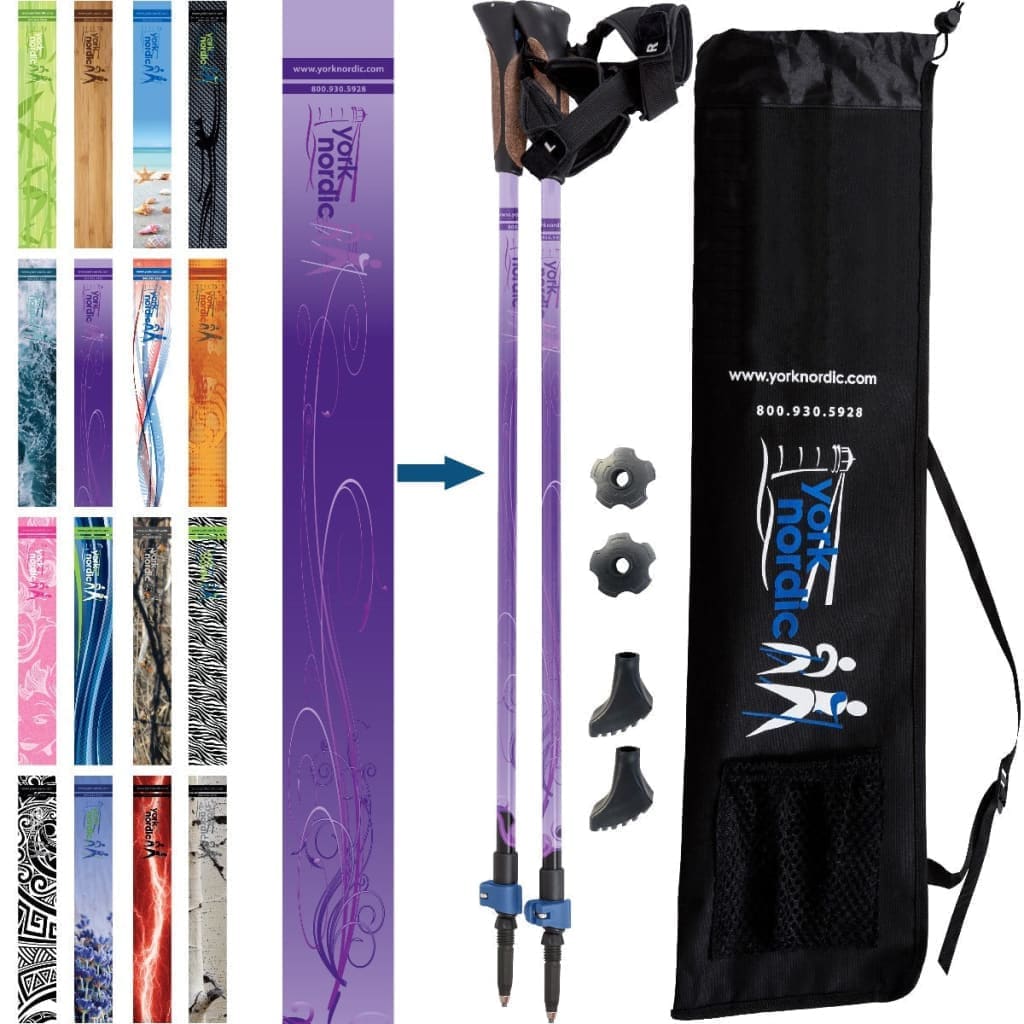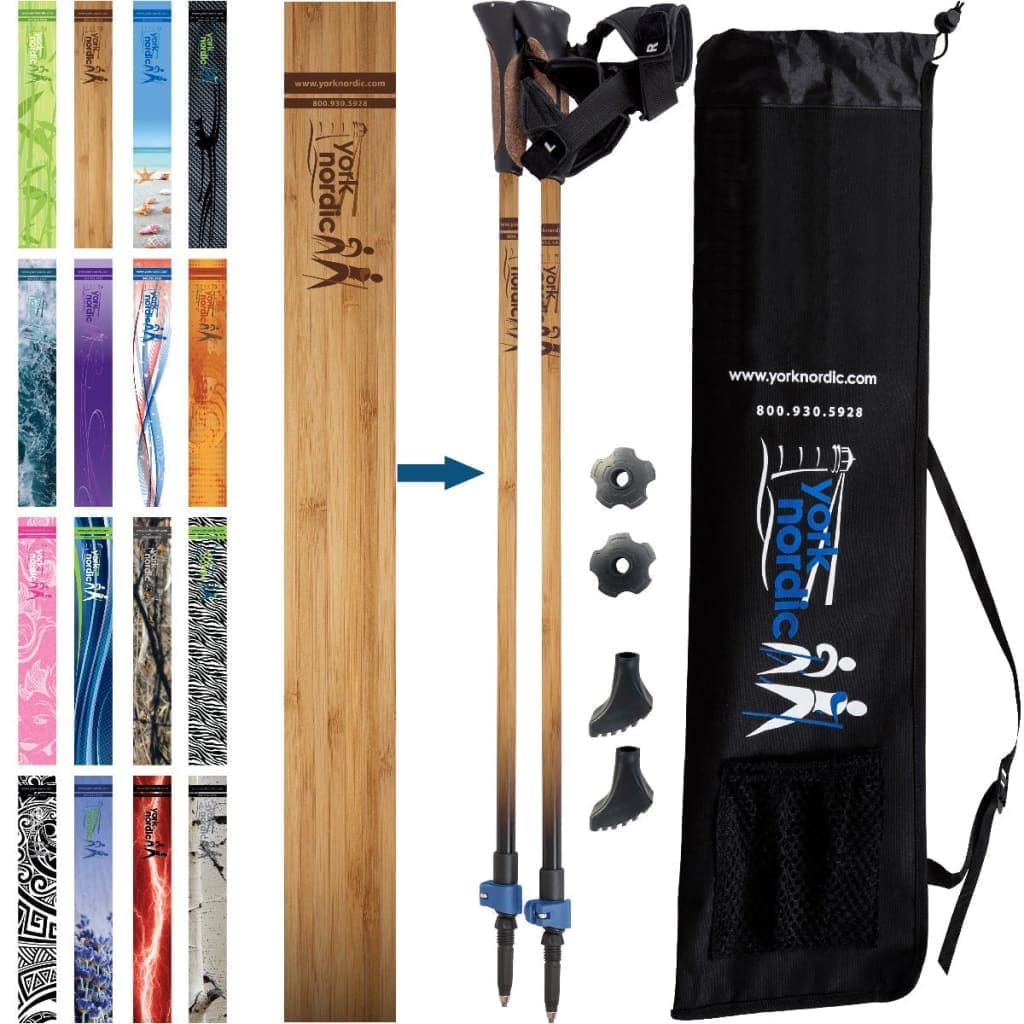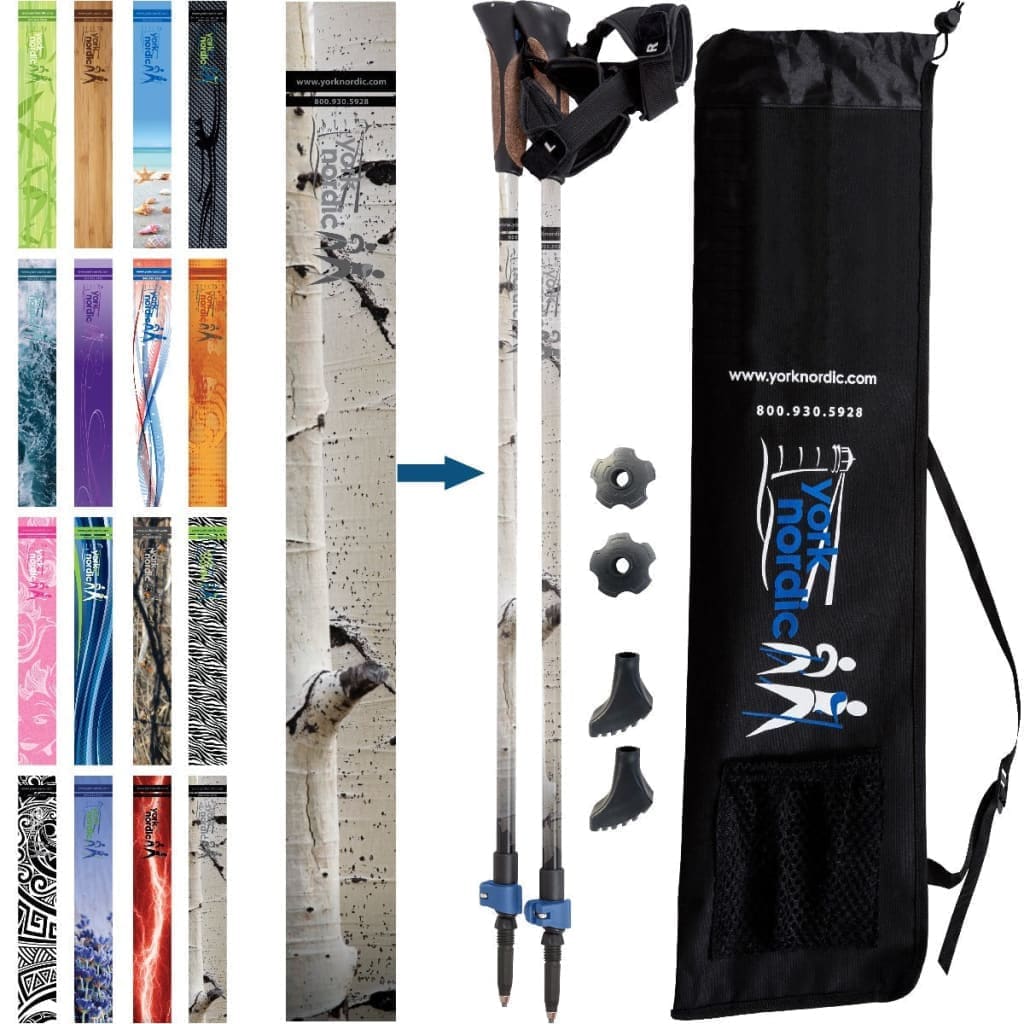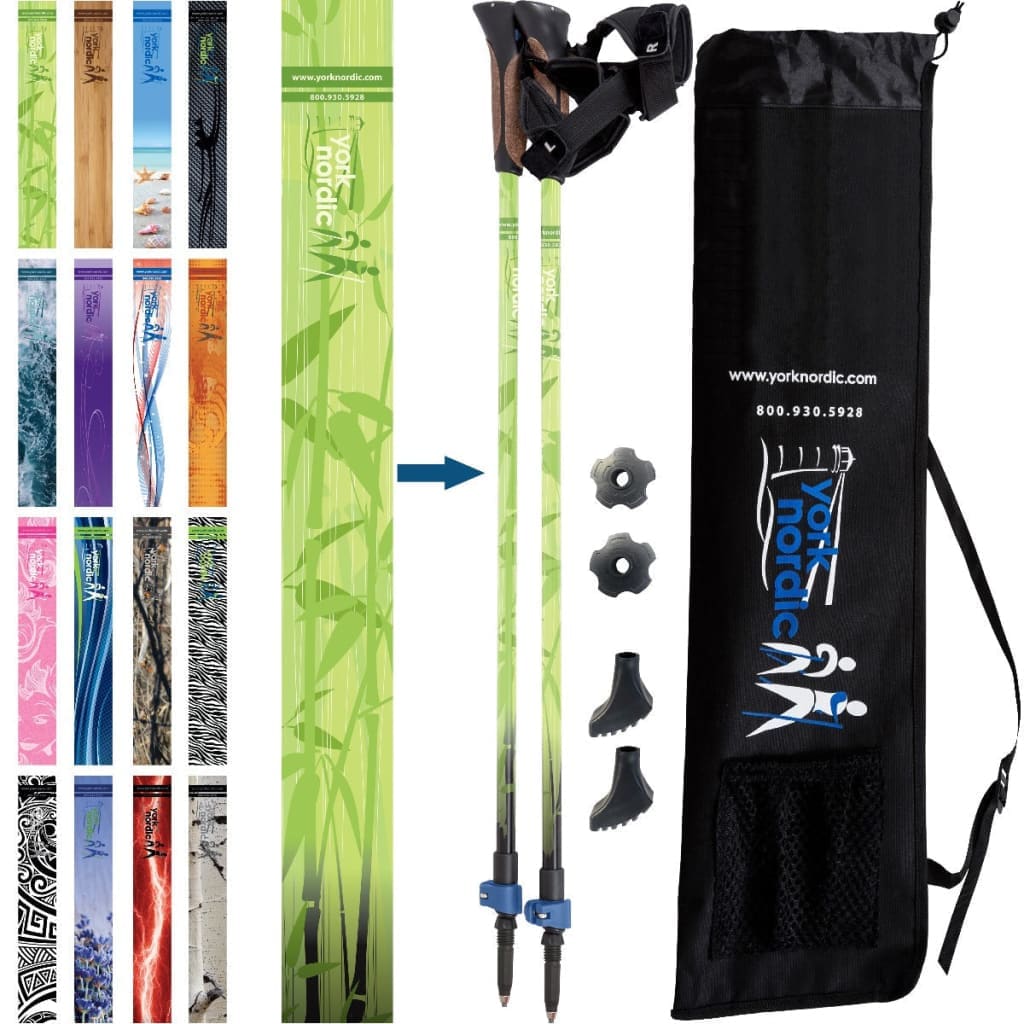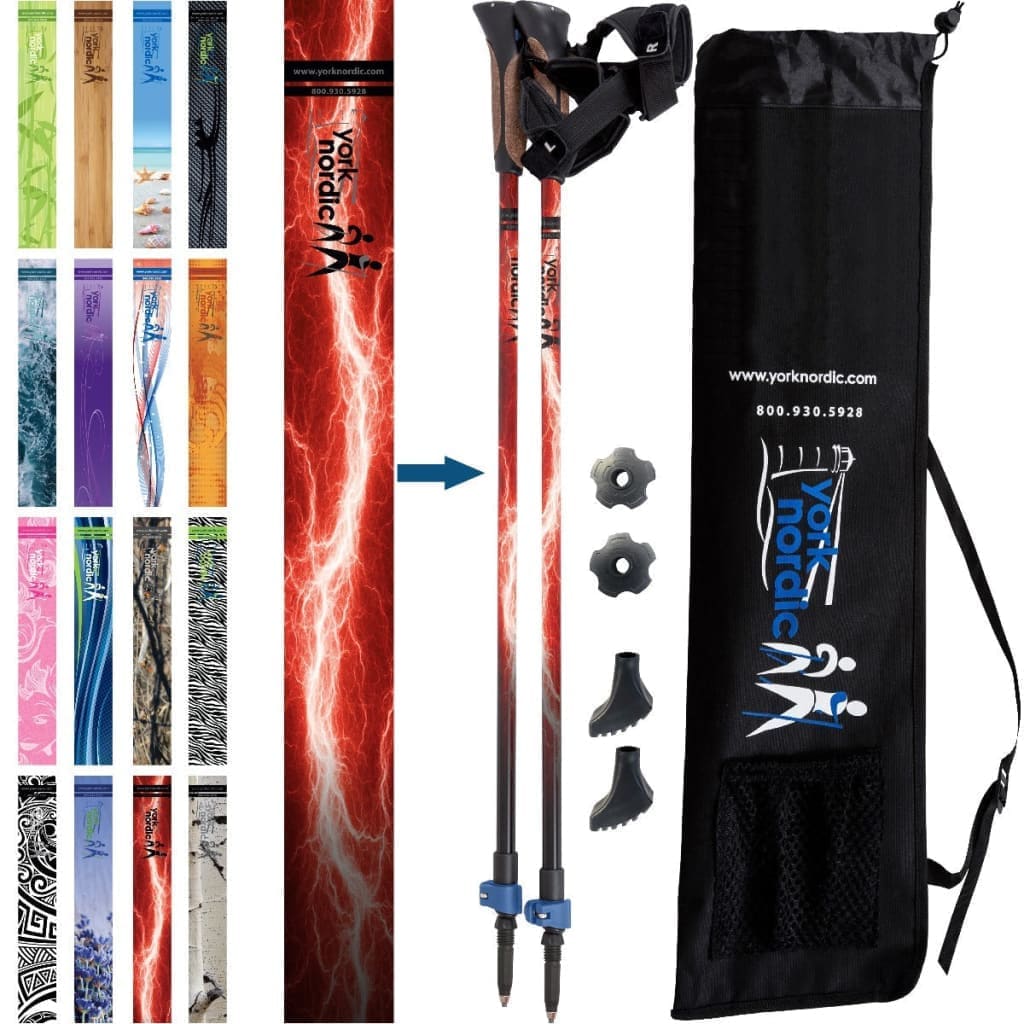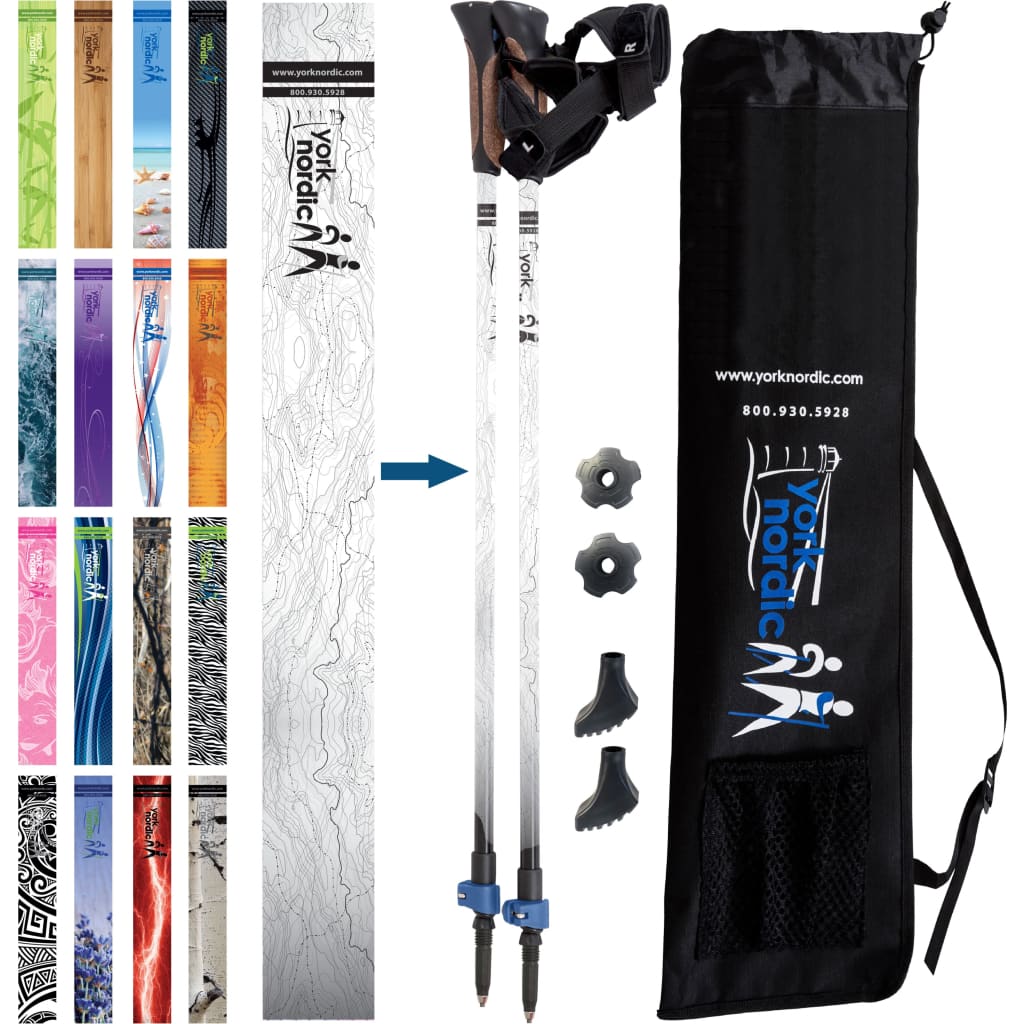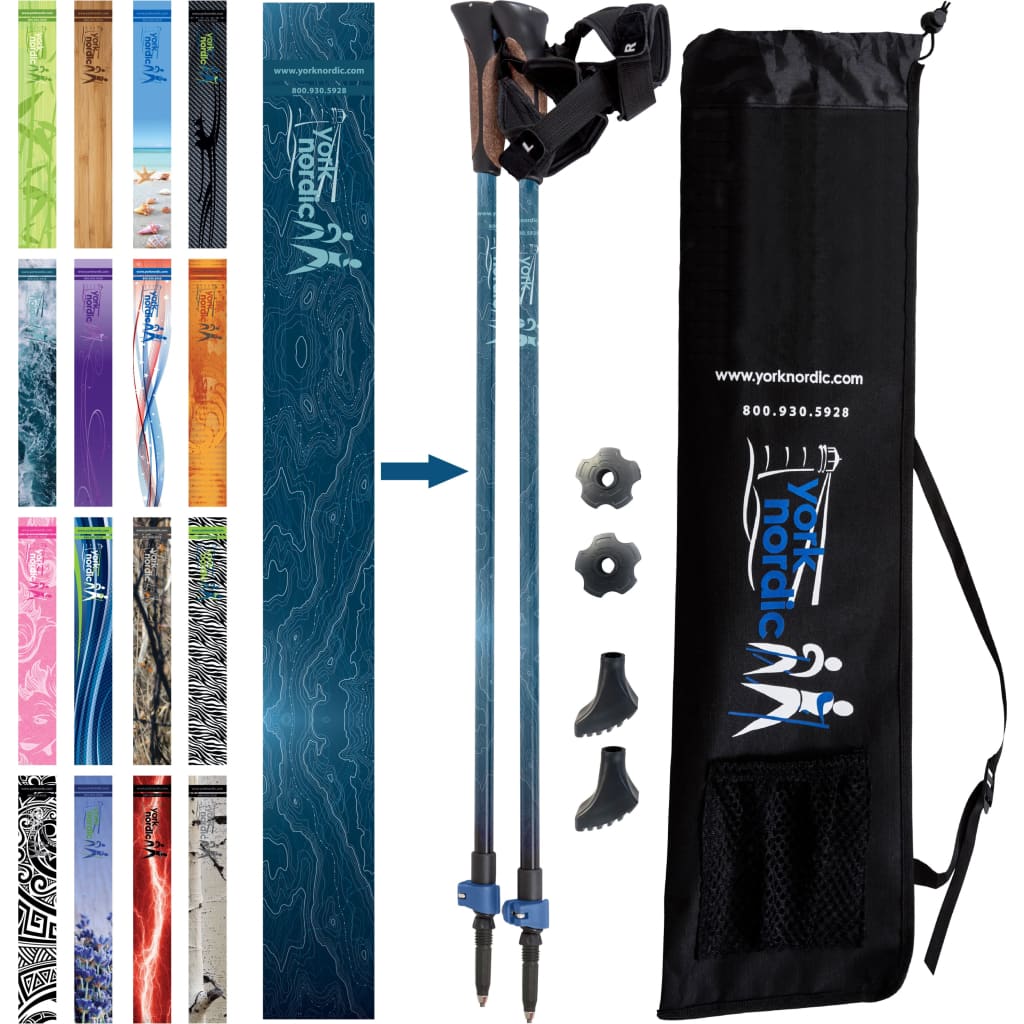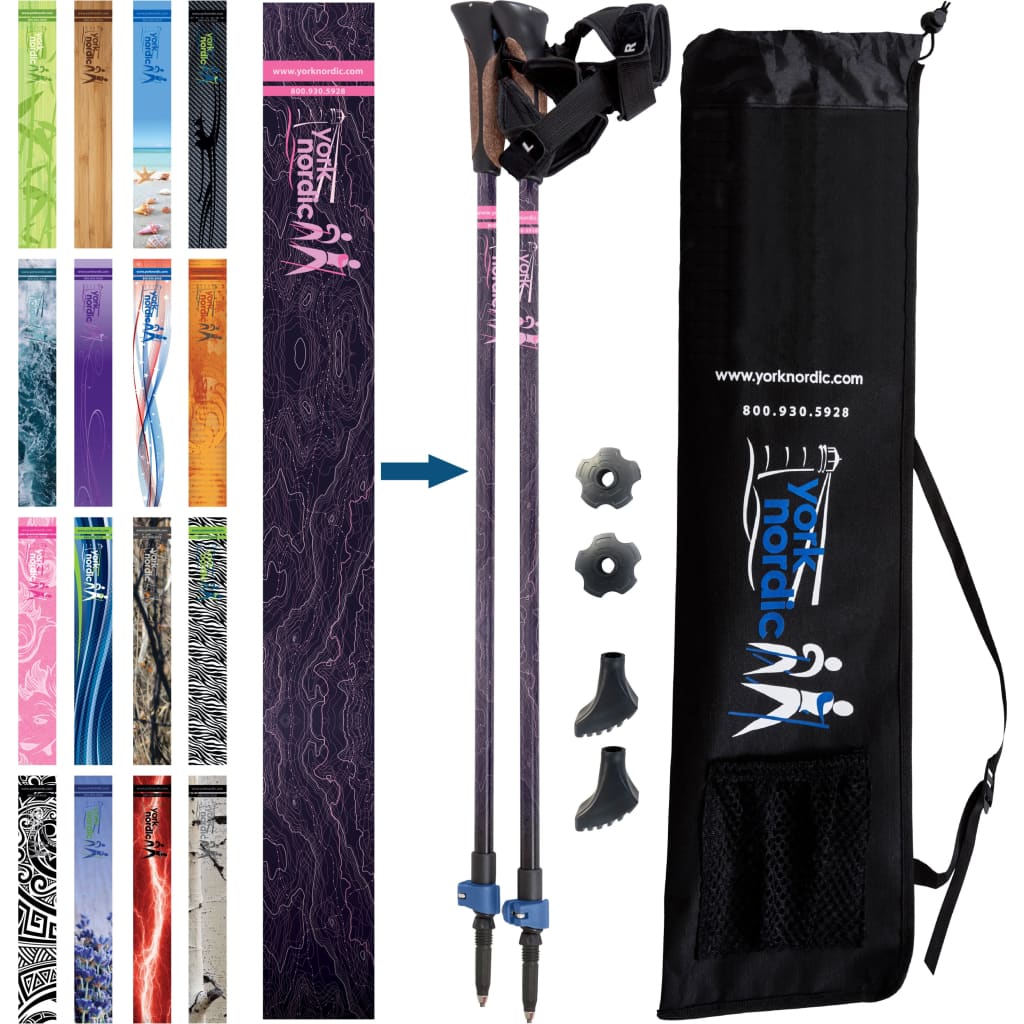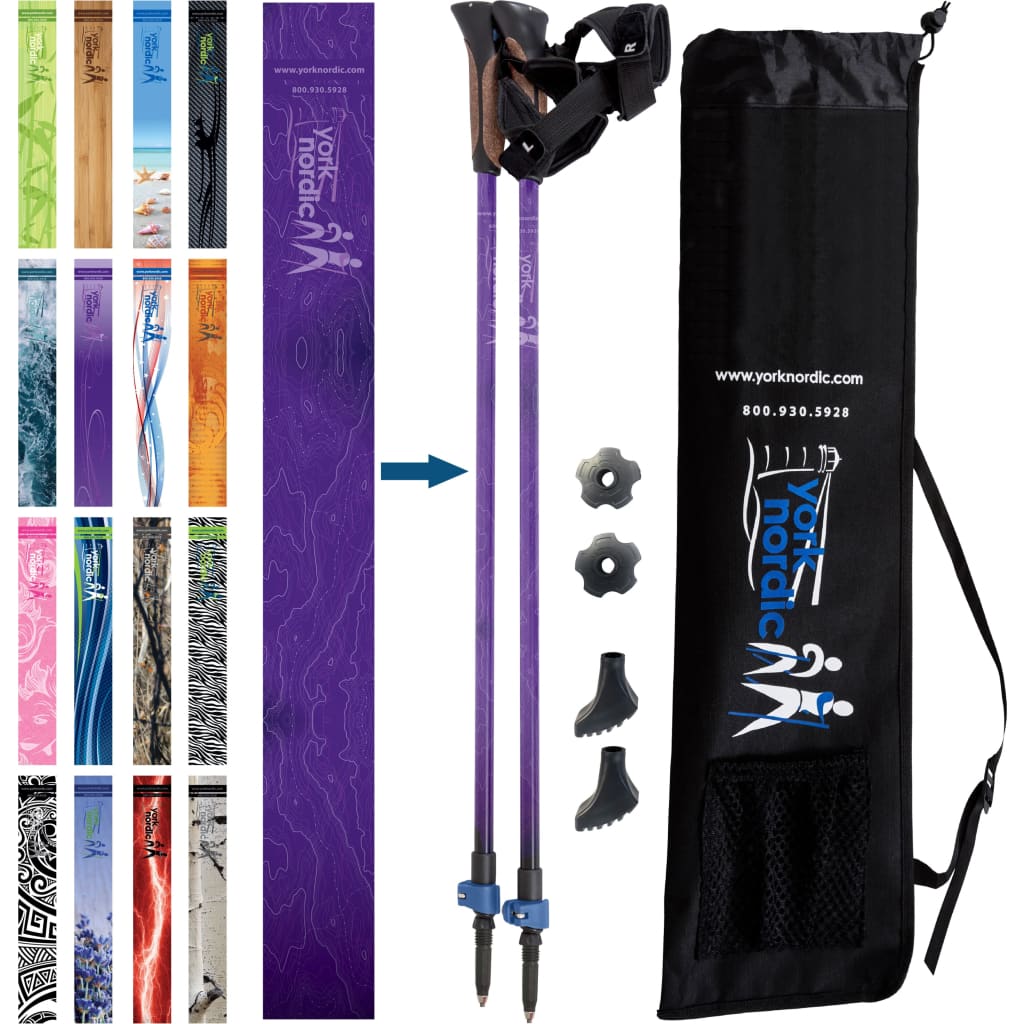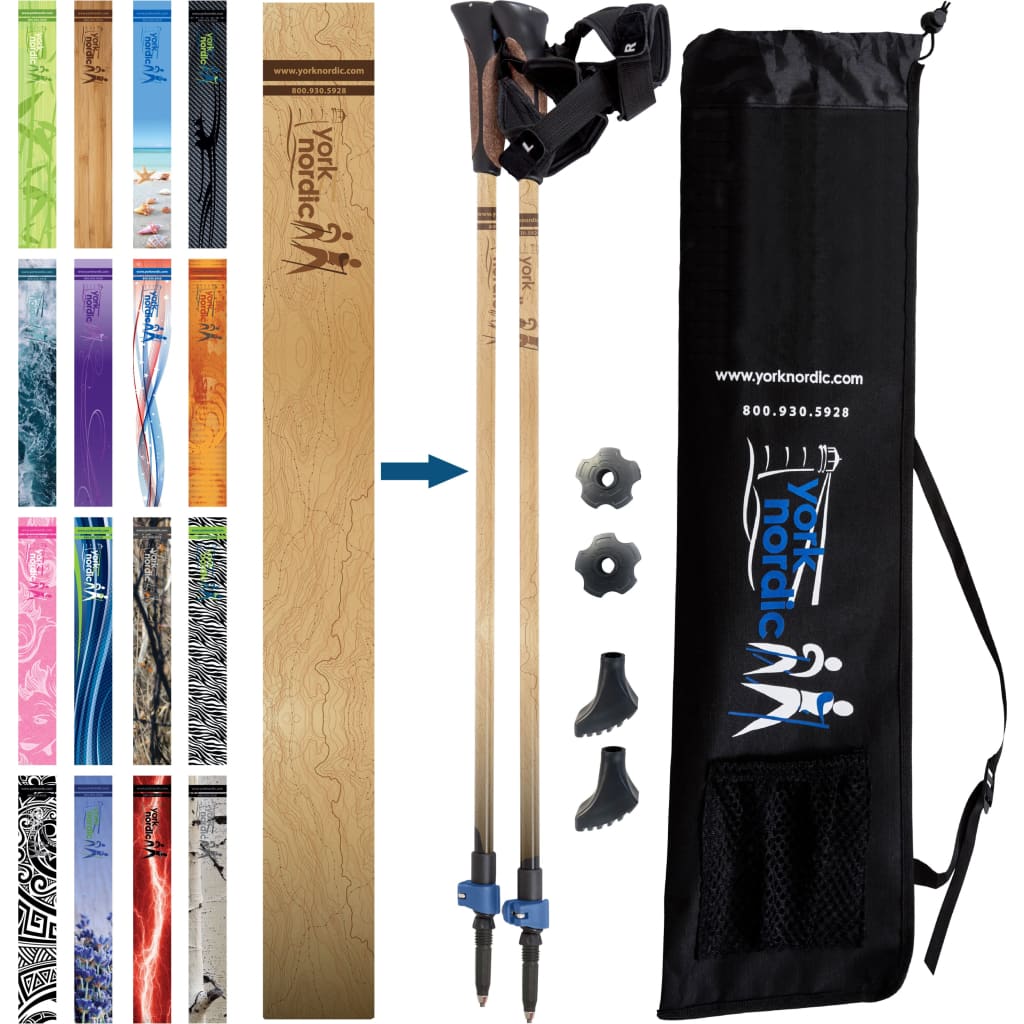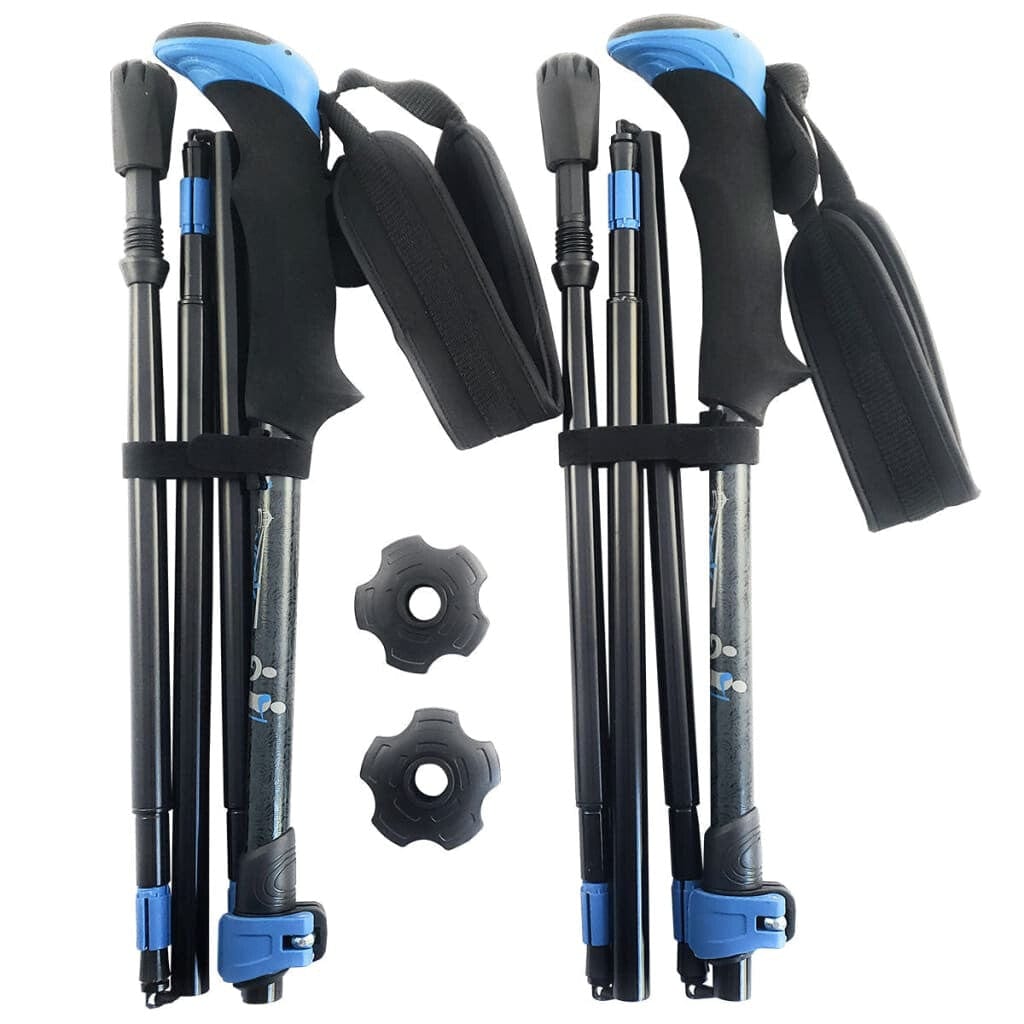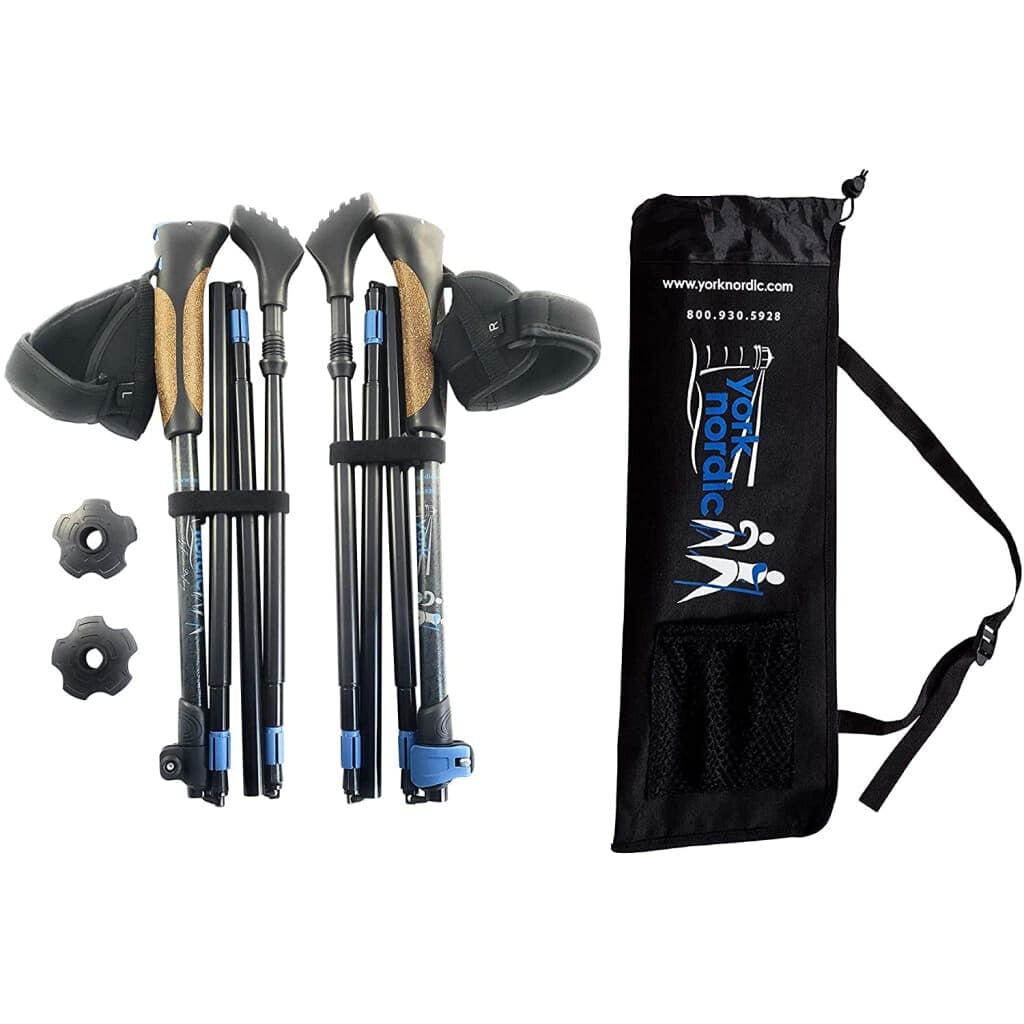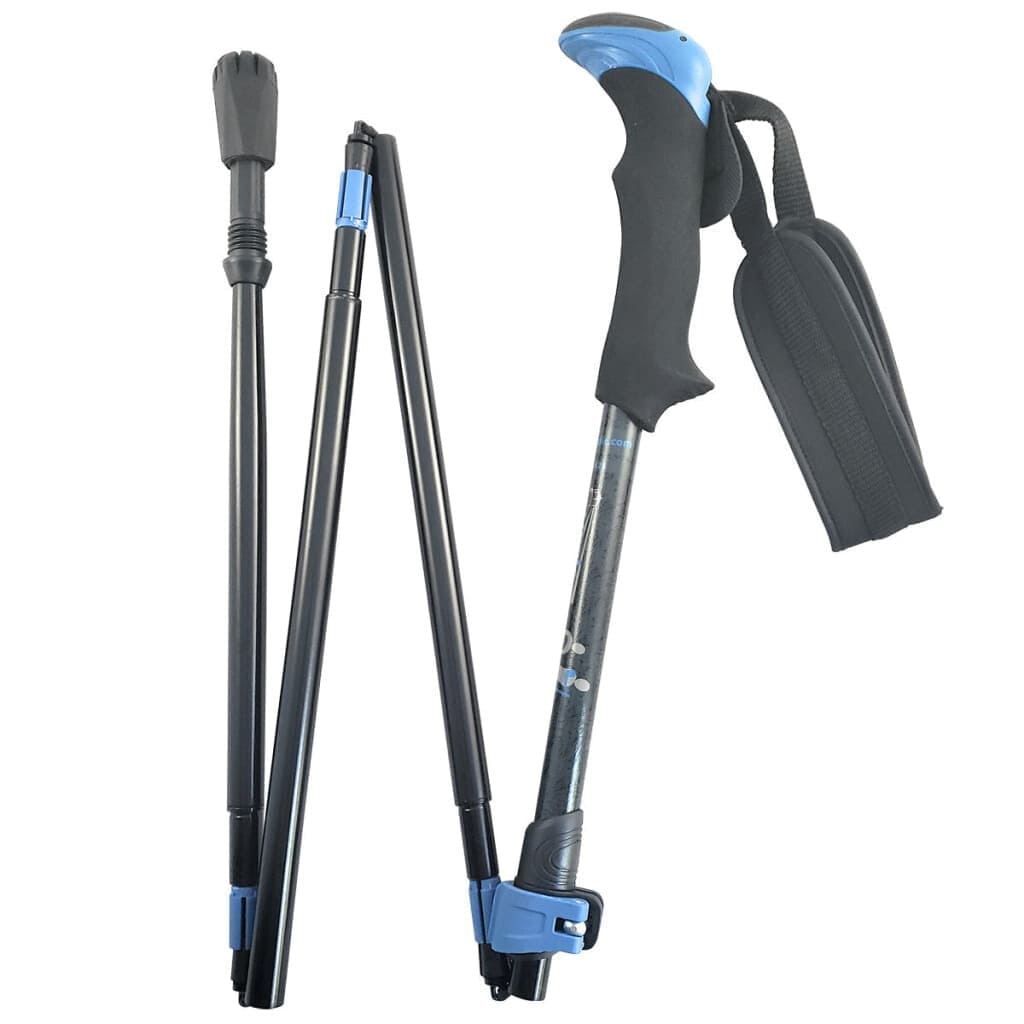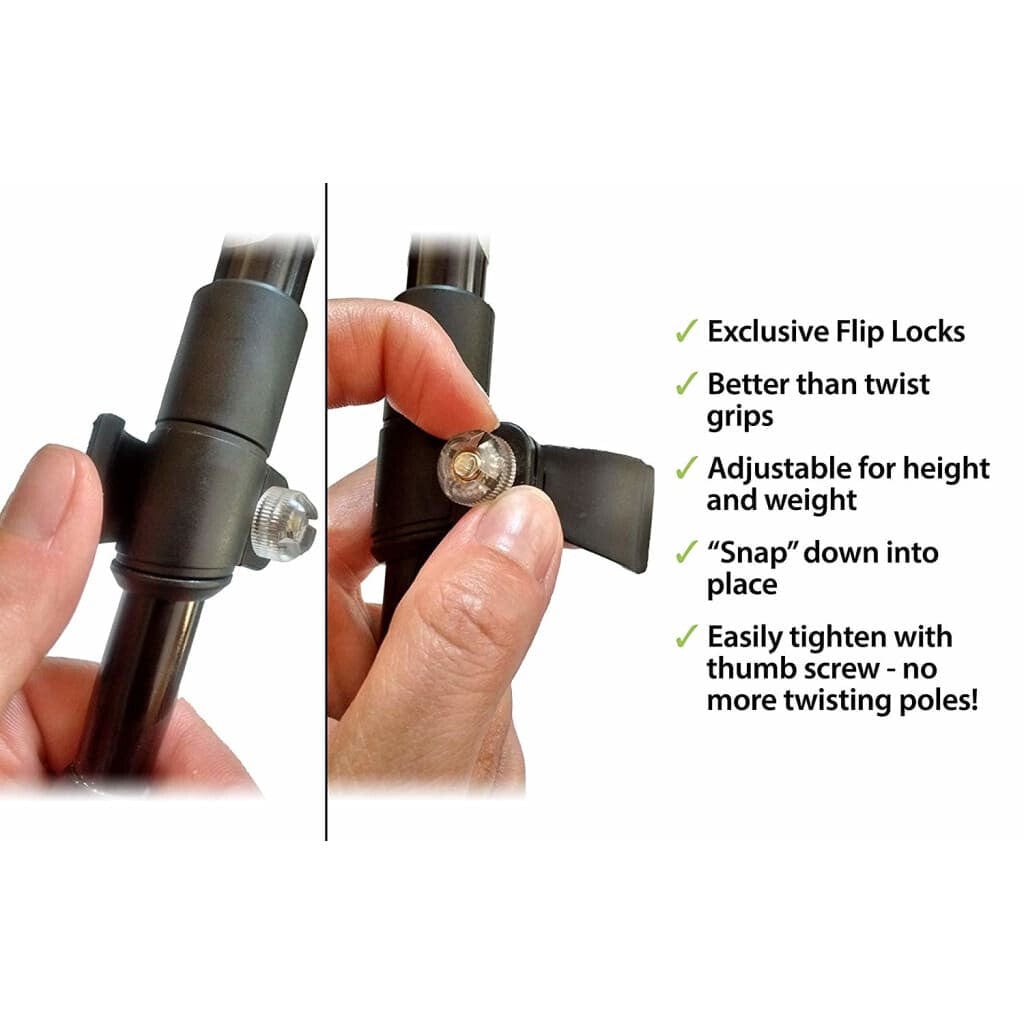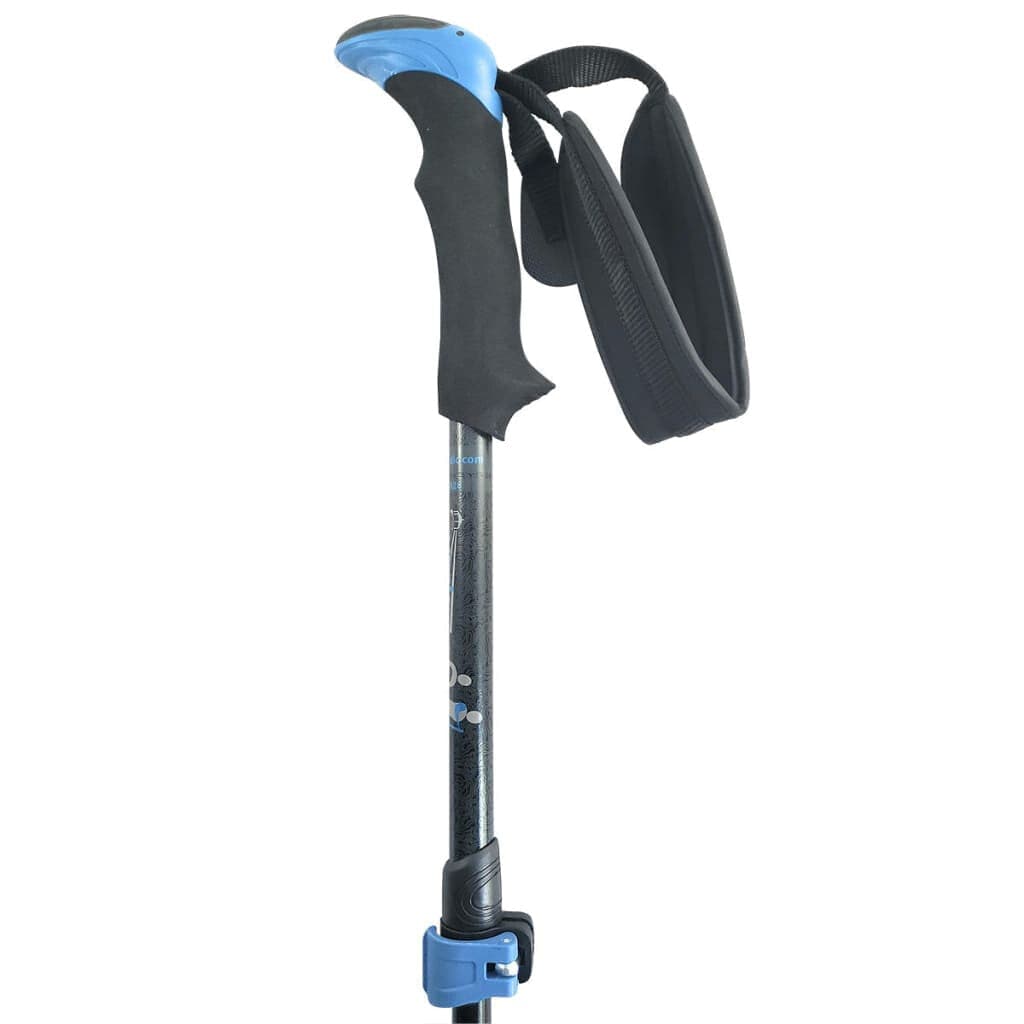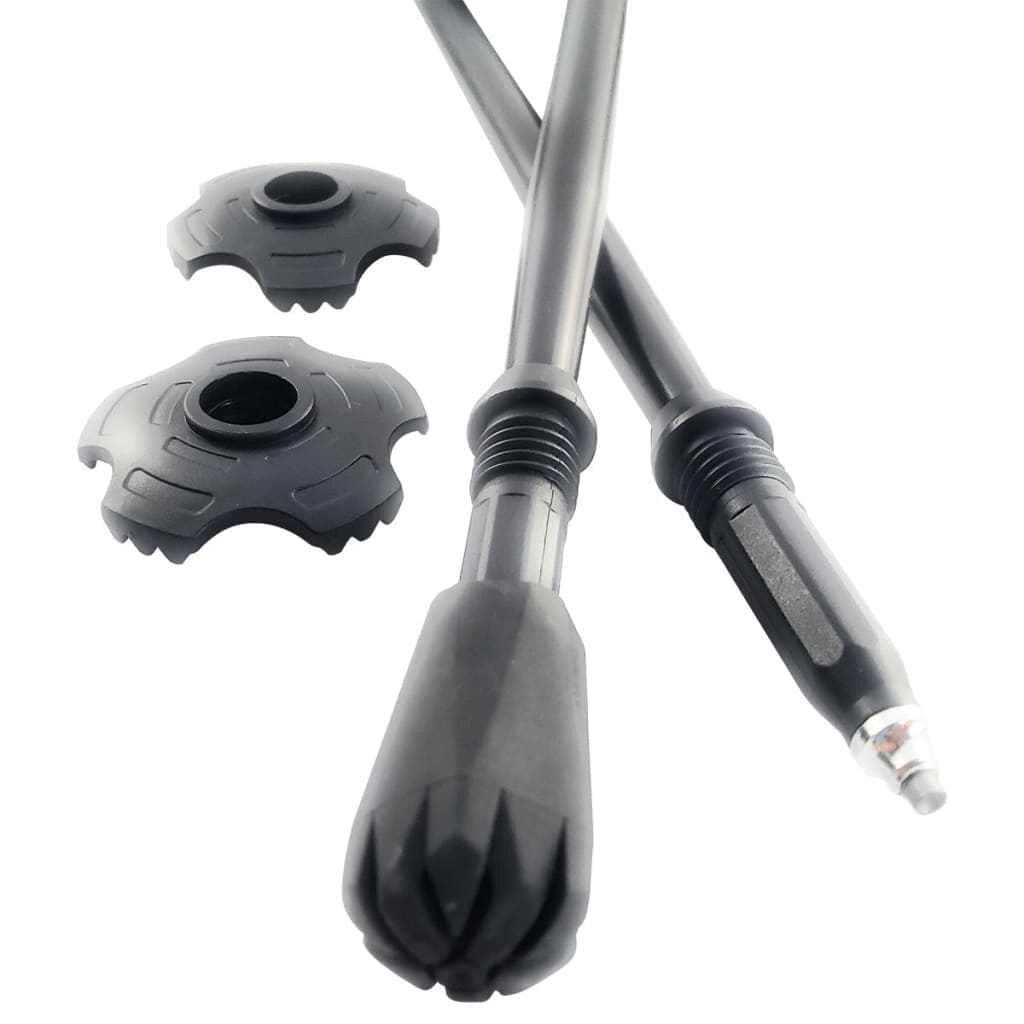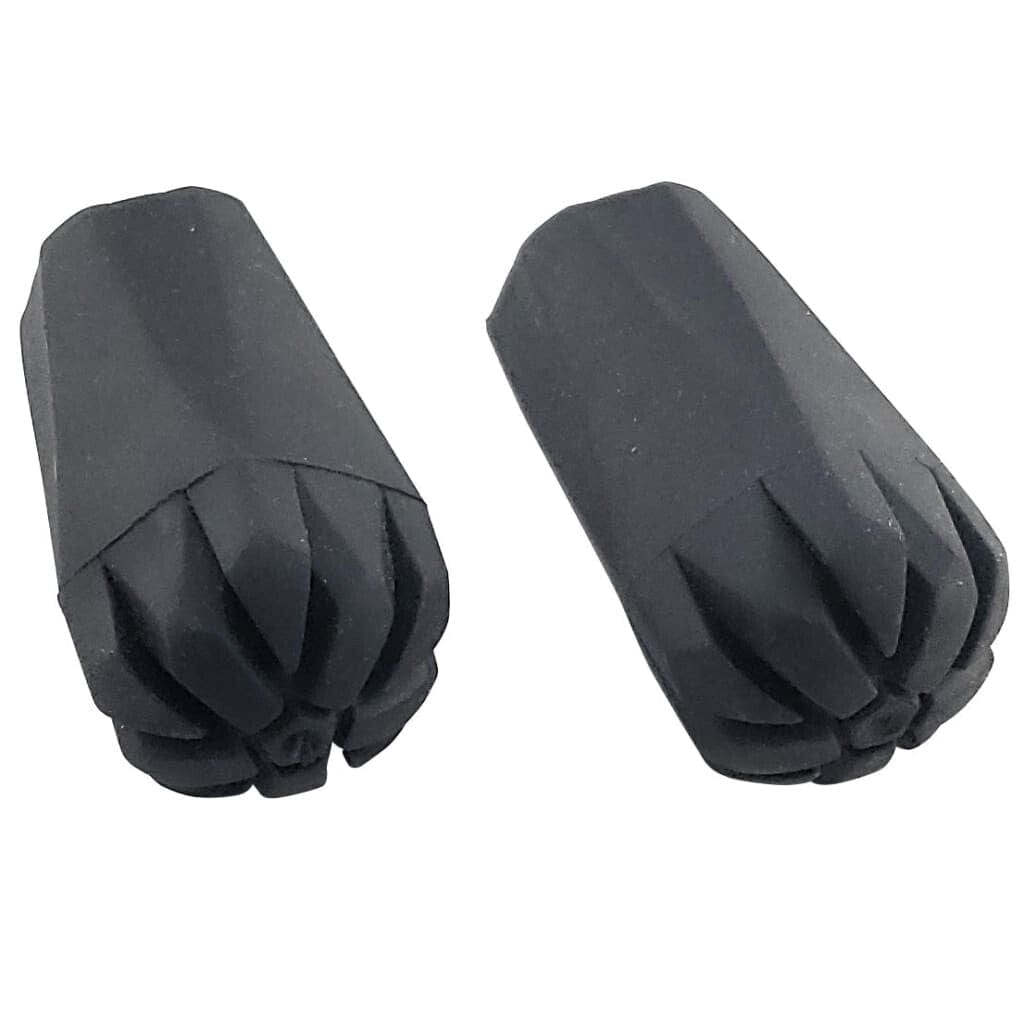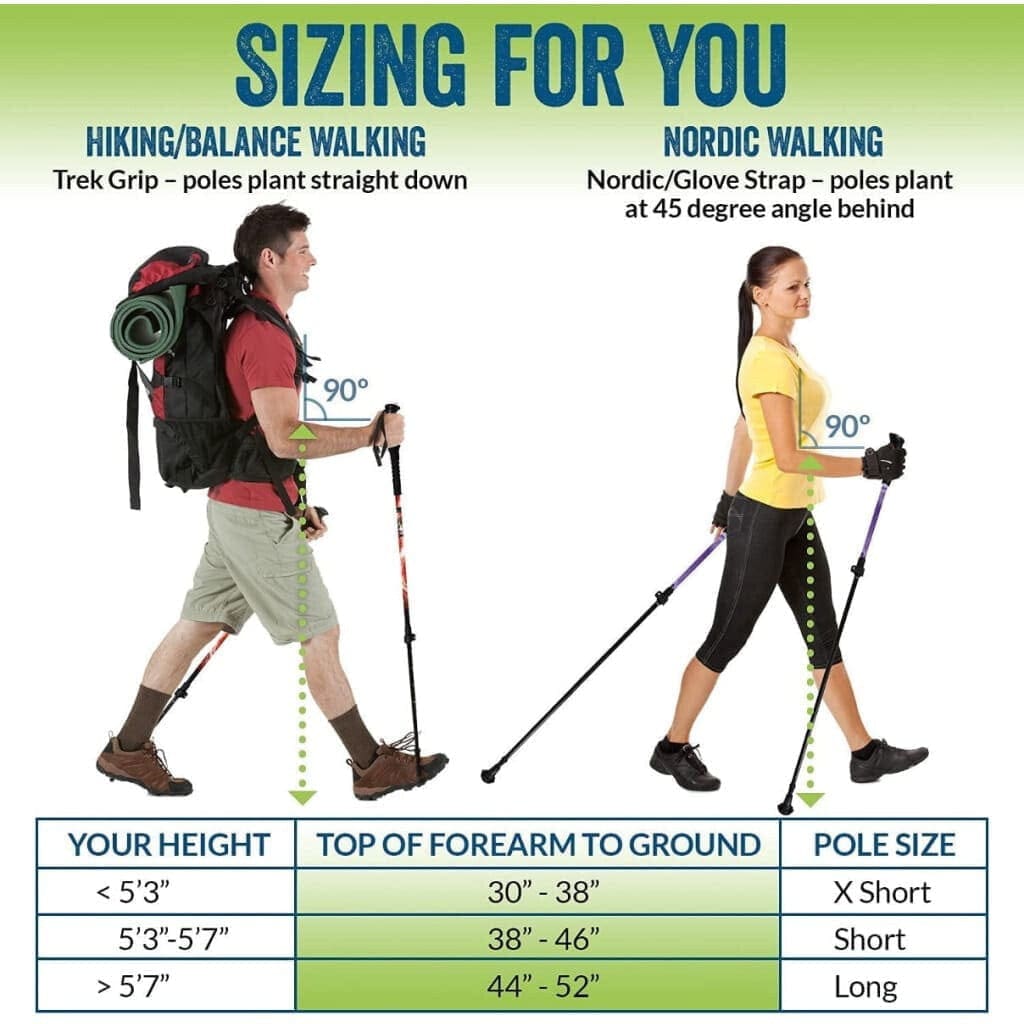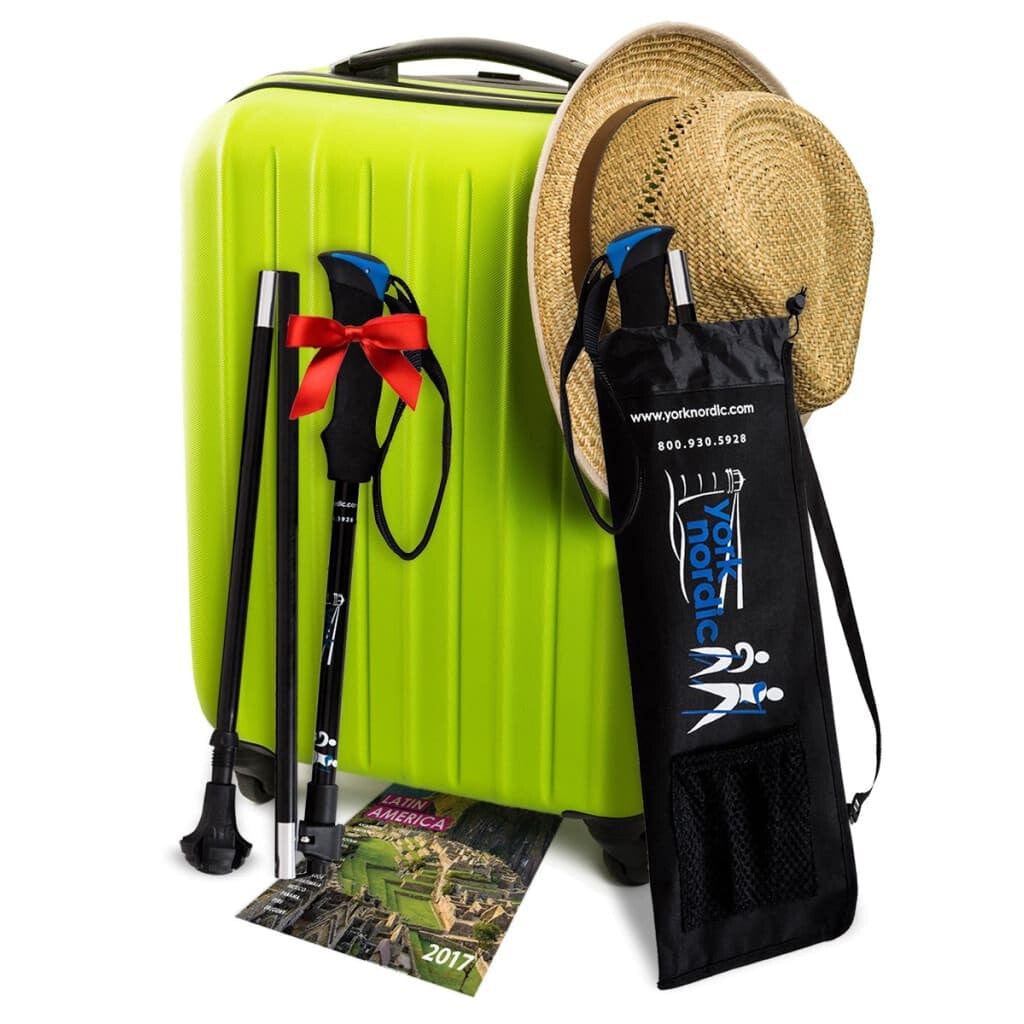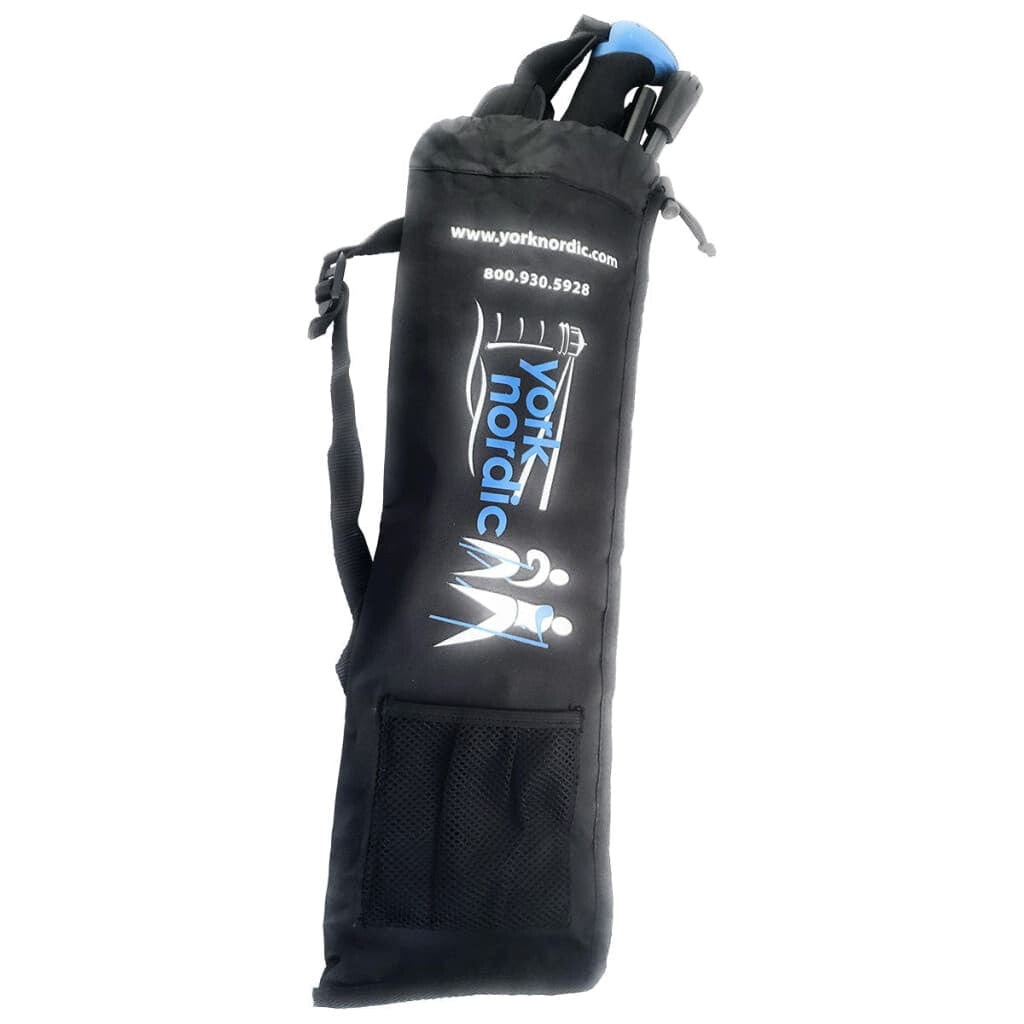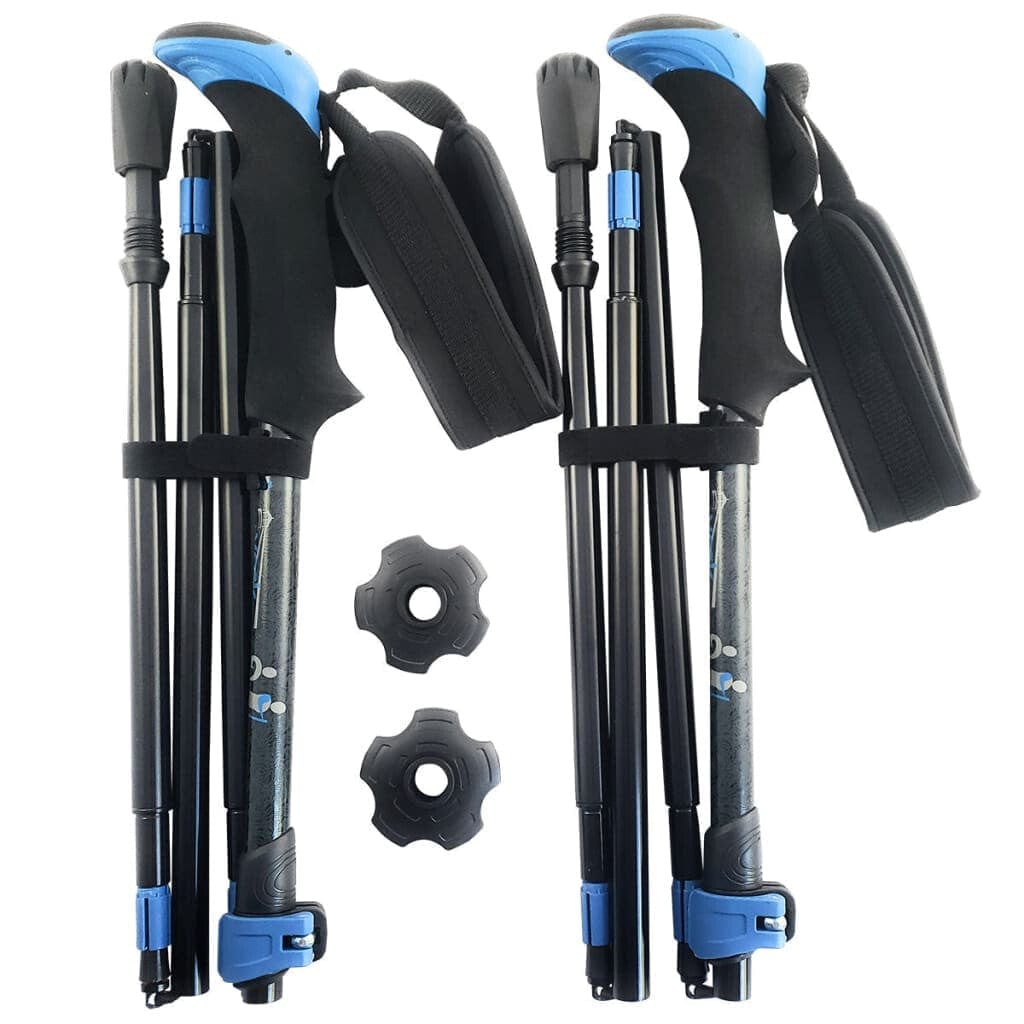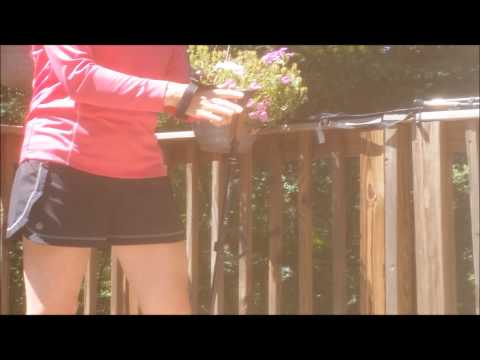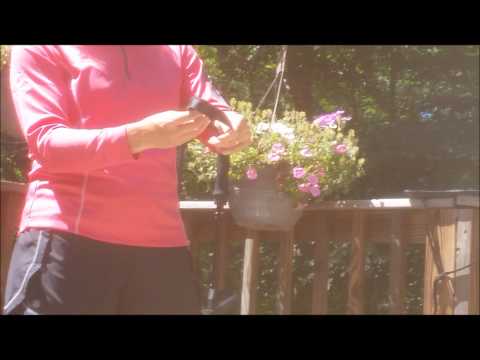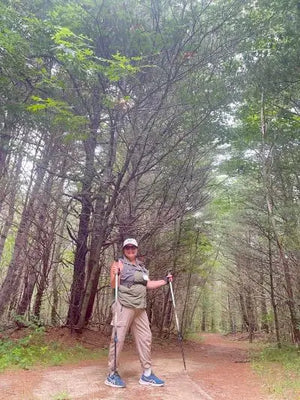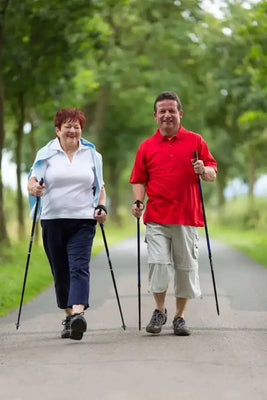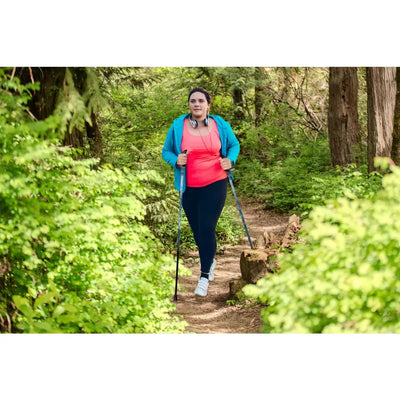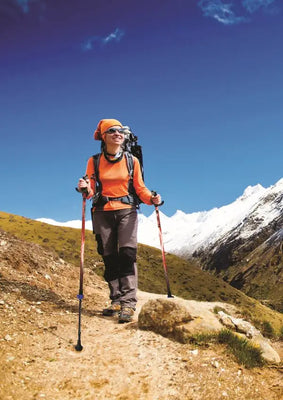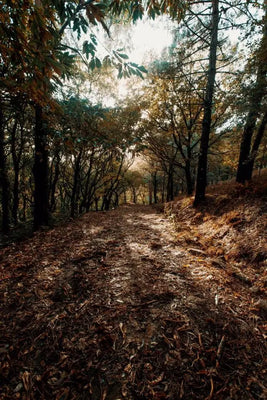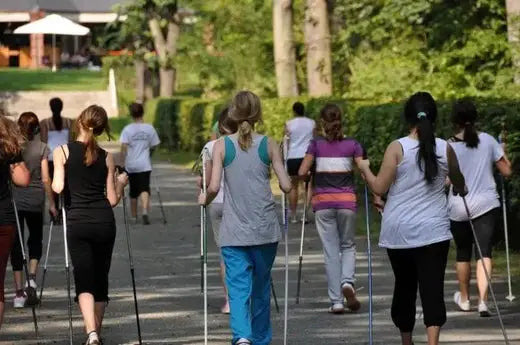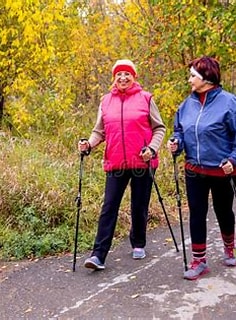According to a research study done by Dr. G. Neureuther in 1981, the use of ski poles while walking reduced the pressure on the opposite leg by up to 20%. Learning how to use trekking poles will not only take the pressure off your legs, but it will also give you more of a balanced workout.
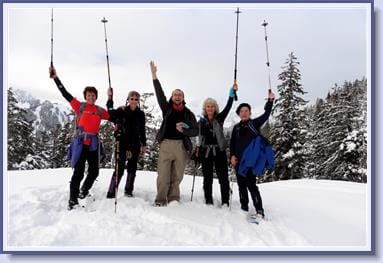
Nordic Walking News and Updates
How to Use Trekking Poles for Stability, Support, and Safety
Whether you suffer from bad knees, arthritis, obesity, or even just want to save your joints in general, trekking poles can help you make sure that your body is stabilized, and your joints are taking less pressure as you hike both uphill and downhill.
The only issue is that if you do not know how to how to use trekking poles correctly, you are not going to reap the benefits that they offer and may end up wasting precious calories that you need for your trek.
Keep on reading to learn more about how to use trekking poles for maximum benefits!
When to Use Trekking Poles
Trekking poles can be used on numerous different types of terrain:
Steep Incline
A study by the Medicine and Science in Sports and Exercise ran a study testing both men and women as they walked on a steep incline while wearing a backpack that equaled to 30% of their body weight.
Those that used trekking poles had a longer stride with less muscle activation and also claimed that using the poles made the workout feel less taxing than without the poles
Steep Decline
Another study published in 2011 tested both women and men on a steep decline hike, with backpacks on and either with or without poles. They discovered that the rate of perceived exertion from all participants was much lower while using the poles.
They also discovered less post-exercise muscle soreness, reduced signs of muscle damage, and a lower chance of injury while using the trekking poles.
Rocky, Uneven Terrain
Trekking poles provide extra stability when hiking over uneven and rough terrain. Using trekking poles is kind of like having extra legs, they act as an extra point of contact as you step over slippery rocks, tree roots, crossing rivers, etc.
If you by chance slip, the trekking poles are an extra chance you have to prevent yourself from falling on your butt and injuring yourself.
Set Them at the Right Length
The most important thing to know about trekking poles is that if you are not using them correctly, not only are you not receiving the benefits that they offer, but you are also risking yourself for injury or wasted energy.
When you are using trekking poles to help with your stability, you need to measure the length so that you are holding them with your elbow bent at 90 degrees while they are touching the ground.
This ensures that you have the most strength and leverage to use them at times when you most need them. If they are too high, you will end up shrugging your shoulders and possibly pinch a nerve or strain your upper back/neck.
If they are set too low, you may be leaning forward too much when you put pressure on them, which could cause a strain on your lower back over time.
When going uphill, make sure you adjust your poles to between 5-10 centimeters, depending on the severity of the incline.
When going downhill, do exactly the opposite, lengthen your poles to between 5-10 centimeters, depending on the severity of the decline.
If you are walking on a slanted trail, you can lengthen one pole and shorten the other, according to the degree of the slant you are walking on for maximum benefits.
How to Grip the Pole
When gripping the pole, you want to make sure your grip is relaxed, otherwise, you are expending too much energy and adding too much strain to your forearms. The poles are meant to be an assistant to your trek, not the main workout, so the less energy you expend using the poles, the better.
Hold the pole between your thumb and forefingers, while gripping with the other fingers very loosely. This helps you to flick the pole forwards as you step with the least amount of effort.
Using the Straps
It is advisable to get a pair of trekking poles that have a strap on them, which helps you to let go when you need to. This also prevents you from accidentally dropping your pole and having to risk picking it up while wearing a heavy backpack on.
To use the strap properly, bring your hand through the strap, then grip the pole, while resting your thumb over the strap. Make sure the strap is not twisted as you put your hand through it.
Use Proper Arm Positioning
Proper body mechanics are essential when using trekking poles, so you ensure you are making the most out of them.
Keep your elbows close to your sides, and with each step, flick the opposite pole forward of the foot you are stepping with. For example, if you are stepping forward with your right foot, flick the left pole forwards while you step.
There is no need to exaggerate the movements, nor is there any need to grip the pole too tight or plant it too deeply into the ground. Just hold it lightly and flick it forward with every opposite step.
To practice this, walk with the poles lightly dragging the ground beside you, being mindful of which hand flicks the pole with the right step. The more you practice, the better you will understand the science of the movement.
Learn More about How to Use Trekking Poles
Now that you understand the basics of how to use trekking poles, it is important that you purchase a high-quality set of poles to practice with before you set out on your trekking adventure!
We have a huge selection of the highest quality trekking poles and Nordic Walking poles. Check out our product page for more information.

